by
While January 13, 1973 marks the opening of the Weavers Way Mt. Airy store, it has been argued that the Co-op actually started months before. Even though we may not yet have consensus on just when the Co-op was founded, the newly formed 50th Anniversary Committee is going ahead with a series of projects and events throughout 2023 to celebrate the half century-plus arc of our organization.
The almost year-long celebration will kick off the weekend of Jan. 13 with cake and sparkling cider at each of our locations. Starting with the January-February issue of the Shuttle, look for a fun fact about the Co-op that you may not have known. The Shuttle, along with our Event Calendar and the eNews, will keep you informed about events and programs commemorating the 50th anniversary.
As one of the largest and oldest food co-ops in the country, we have a lot to celebrate!
The 50th Anniversary Committee welcomes participation from members and staff to brainstorm, research, plan and implement projects in our stores and neighborhoods to mark this milestone. Projects include events like parties and programs, commemorative products and merch, and more.
If you’d like to participate on this committee, please contact Nima Koliwad, Weavers Way community programs coordinator, at outreach@weaversway.com. You’ll earn work hours through your involvement. Cooperator shifts will also be made available for various anniversary activities.
Is 2023 Your Year to Run for Our Board?
by the Weavers Way Leadership Committee
The election season has begun, and it’s time for you to consider running for the Weavers Way Board of Directors. From now until the end of February, you have an opportunity to partici-
pate in our election process to represent the membership and exercise the International Cooperative Principle of democratic member control of our collectively owned business.
Supports From Community Groups Helps Fill Our Fridge and
Pantry
by Nima Koliwad, Weavers Way Community Programs Coordinator
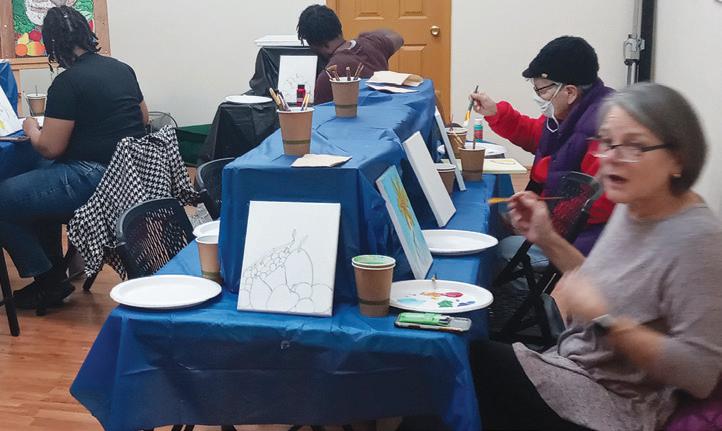
As the outreach coordinator for Weavers Way, I have been working with local community organizations and our cooperators to
Germantown’s Outreach is Humming with Workshops, Convos and More
by Camille Poinvil, Weavers Way Outreach Coordinator
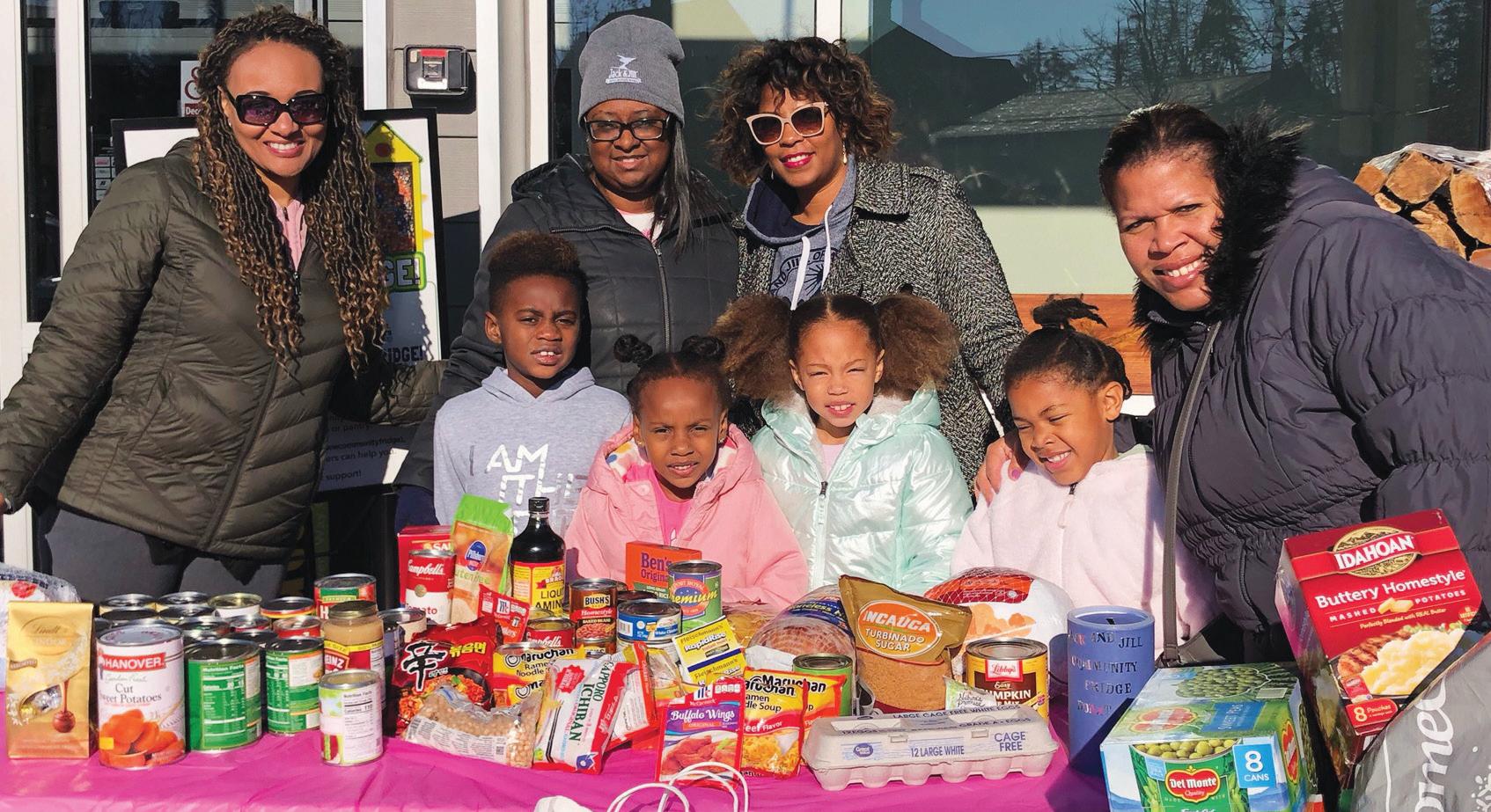

Germantown outreach is off to a great start! We put together a committee, made up primarily of members from Germantown and board members, to carry out our tasks. They are a motivated and productive group that’s ready to get the job done!
In addition, we have rented space at 326B Chelten Ave. next to the German-
Weavers Way Cooperative Association 559 Carpenter Lane, Philadelphia, PA 19119 www.weaversway.coop CHANGE SERVICE REQUESTED DECEMBER 2022 Since 1973 | The Newspaper of Weavers Way Co-op Vol. 50 | No. 10 The Shuttle Community-Owned, Open to Everyone (Continued
Page 6) (Continued on Page 12) Presorted Standard U.S. POSTAGE PAID Philadelphia, PA Permit No. 2658 Weavers Way is closed Sunday, Dec. 25, and Sunday, Jan. 1. Stores will CLOSE at 6 p.m. Dec. 24 WE WANT WE WANT YOU! YOU! 2023 Weavers Way Board of Directors RUN FOR THE BOARD Get Ready to Party — the Co-op’s Turning 50!
on
Hilary Baum, Weavers Way At-Large Board Director
(Continued on Page 11)
map out a
plan for our Ambler Community Fridge. Last month, our efforts got a boost from the local chapter of a national youth service organization and their parents.
photo by Nima Koliwad
Parents and children from Jack and Jill Club, Montco Chapter hosted a food drive for the Community Fridge and Pantry at our Ambler store.
photo by Camille Poinvil
Participants focus in at last month's painting class at Weavers Way's Germantown officc.
Editor’s Note
 by Karen Plourde, Editor, Weavers Way Shuttle
by Karen Plourde, Editor, Weavers Way Shuttle
Clearly, i’m not a leader of poets.
My subtle call last month for more poems to keep Weavers Words alive netted one whole entry (Thank you, Sharon DuPree). Unless there’s an uptick in the number of submissions real soon, the January-February edition of our humble poetry corner will be our last.

Lawrence Geller, the member who came up with the idea for Weavers Words, emailed me recently to suggest an alternate to the current format: Invite members to share a favorite poem and a few sentences about why it’s meaningful to them. I think that’s worth a try, so if you’re interested in participating, please email those items to editor@weaversway. coop. Put “favorite poem and reflection” on the subject line.
There are a few stories in this issue that expose the futility behind most recycling. On page 14, Anne Hylden’s article about fabric recycling states that 99% of the world’s clothing eventually makes its way to a landfill, an incinerator or the environment — even if it’s donated to a secondhand store.
On page 17, Sandy Folzer asks whether it’s time to end single-stream recycling, since so little of it actually gets recycled. Her arguments are bolstered by Weavers Way Purchasing Manager Norman Weiss, who notes in his Suggestions column (p.18) that most of the plastic that’s recycled is from water and soda bottles, and that not much glass is recycled these days, either. What does get recycled and reused the most? Corrugated cardboard.
Depressed? Yeah, me too. Here’s a bright spot. On page 9, our Plastic Reduction Task Force writes about the Co-op’s selection of shampoo bars, an alternative to those clunky plastic shampoo and conditioner bottles. And toward the bottom of the column, they mention new bulk items that are now available as part of our Container Refund Program. So if you can afford the deposit, opt for those. And remember to bring your reusable containers when you shop (that’s a reminder to me as well.)
Happy Holidays. Catch you in the pages late next month.
The Shuttle is published by Weavers Way Cooperative Association.
Statement of Policy
The purpose of the Shuttle is to provide information about co-ops, healthful food and other matters of interest to Weavers Way members as consumers and citizens. Weavers Way members are welcome to submit articles (about 500 words) and letters to the editor (200 words) on subjects of interest to the Co-op community.
No anonymous material will be published; all submissions must include an email or phone number for verification. The Shuttle retains the right to edit or refuse any article or letter. Submit to editor@weaversway.coop. Articles and letters express the views of the writers and not those of the Shuttle, the Co-op or its Board, unless identified as such.
Advertising
Advertising for each issue is due the 1st of the preceding month, e.g., Dec. 1 for January. Ad rates are online at www. weaversway.coop/shuttle, or call 215843-2350, ext. 314, or email advertising@ weaversway.coop. Advertised products or services may not be construed as endorsed by Weavers Way Co-op.
by
Rancho Gordo Beans Will Elevate Your Entrees
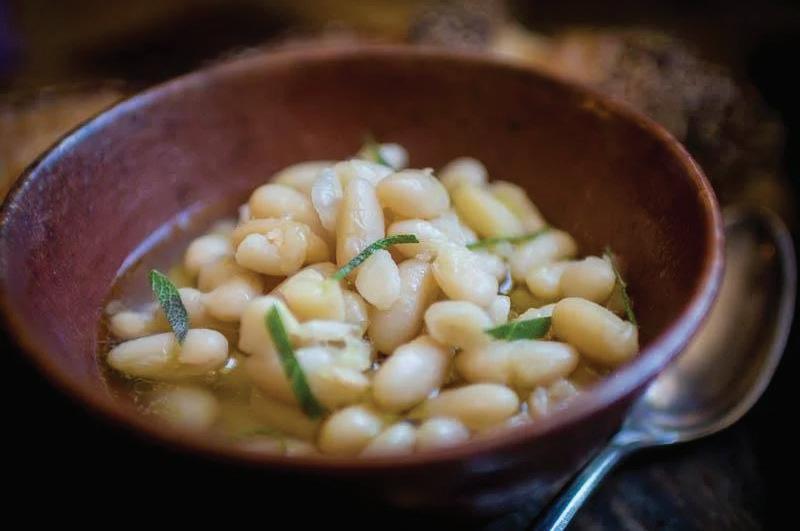
Flavor wise, many of us wouldn’t be able to tell one canned or dried bean from another if we were blindfolded. By importing and packaging dried heirloom beans from the Americas, the folks at Napa, CA’s Rancho Gordo want to put an end to that. Part of their collection, which is now available at all our stores, includes Marcellas (a thin-skinned cannellini); Domingo Rojo (a small, dense option for red beans and rice); Christmas Limas (full bodied, with a chestnut texture); Cranberries (thinskinned Borlottis that work well in Italian dishes), and vaqueros (classic chili beans). Through Dec. 28, onepound packages are two for $12. If you’re looking to freshen up a favorite recipe or expand your bean profile, here’s your opportunity.
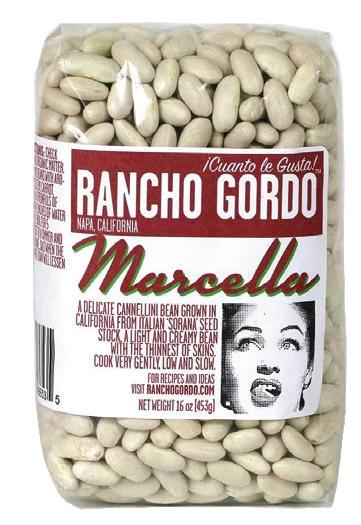
chutney and cashew butter masala, we also carry their roasted garlic achaar, a flavor-packed topper made from veggies, fruits, aromatic spices and peppers. Does your dinner need a kick? Get it here!
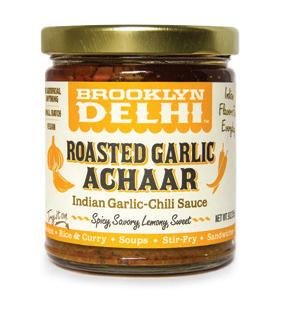
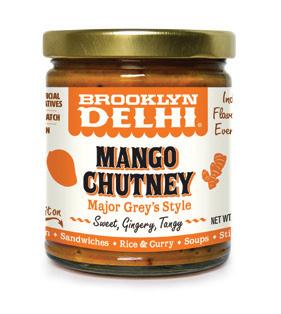

The Mission is Relief; The Source is Hemp
Mission Relief Therapeutics was founded by Black veteran Manuel Jose and is based in Sewell, NJ. Their products are made from organic craft hemp from farmers who use organic practices and are now available in all our wellness locations. Through Dec. 28, two-ounce containers of their muscle rub are $39.99 each (regularly $44.99), and three-count and 15-count packages of their Night Time Gummies are $8.99 and $29.99 each (regularly $9.99 and $34.99 each). If you’re looking to go local for your CBD needs, Mission Relief may be the place to start.

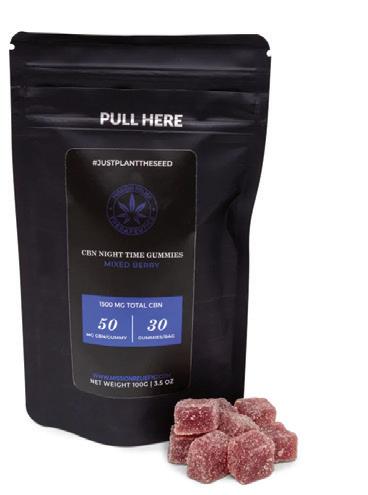
A Spanish Olive Oil With Extensive Roots
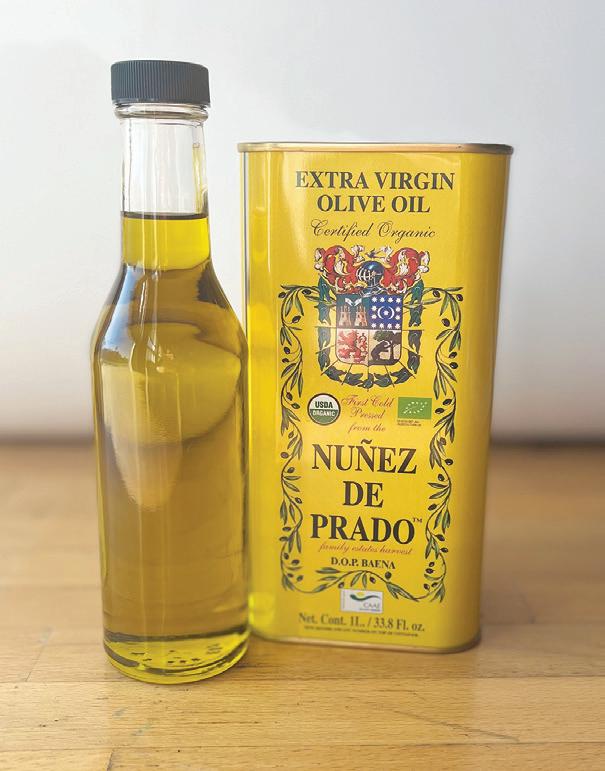
The Co-op’s extra virgin olive oil lineup recently expanded to include Nunez de Prado, a Spanish version from Baena, Andalusia, that has been around for seven generations. The makers crush 14 varieties of Spanish olives the old-fashioned way, with granite wheels. The resulting oil contains notes of grass, citrus, almonds and grapes.
Indian Simmer Sauces Straight Outta BKLYN
Brooklyn Delhi Indian simmer sauces and condiments, developed by chef and cookbook author Chitra Agrawal, are another addition to the grocery shelves in our stores. They’re inspired by her native culinary traditions and plant-based ingredients and are on sale through Dec. 28 for $6.99 each (regularly $7.99-$9.99 each).
In addition to their versions of tikka masala sauce, mango
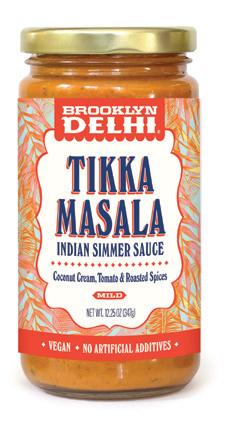
Through Dec. 28, oneliter tins of Nunez de Prado are $23.99 each (regularly $29.99) for Co-op members. It’s also available in bulk in Mt. Airy and Ambler for $7.49 a pound (regularly $9.49), also to members only. Pick up a tin for yourself and one (or more!) to give.
by Kieran McCourt, Weavers Way Ambler
Another wintertime root vegetable with a history dating back to antiquity.
• They’re a relative of carrots and parsley, have a subtle nuttiness and sweetness, and can be used in a variety of ways.
• They’re even sweeter than a carrot, especially when cooked, and were used as a sweetener in parts of Europe prior to the introduction of sugar cane.
Unlike their orange cousins, parsnips are usually best when peeled — the tan skin can often add an unpleasant bitterness to a dish when cooked. They’re usually at their best when cooked, but can be eaten raw.
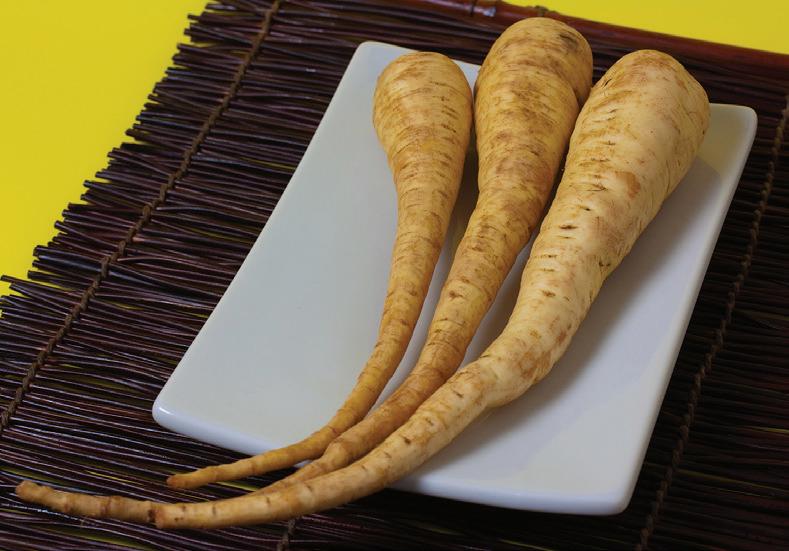
Small to medium parsnips are sweeter and more flavorful; larger ones often develop a tough, woody core. You can remove the core if you quarter the parsnip lengthwise and trim out the center, which is usually darker than the rest of the flesh.
If it can be done to a carrot or potato, it will work for a parsnip. They can be roasted, baked, fried, steamed, boiled, pureed and more!
Mostly, parsnips are a stealth vegetable. Because they’re sweet and a little bit starchy, they’re easy to hide among better known roots and tubers for suspicious eaters of all ages. Mash them with potatoes or hide sliced parsnips in layers of scalloped potatoes. They can also be shredded on a box grater as part of homemade hash browns.
2 THE SHUTTLE December 2022
Maple and miso glazes work well on them. They also make a good base on which to roast a whole chicken, and can bulk up a soup or stew. Go fresh with a citrus and herby dressing to finish some roasted parsnips; pair them with winter greens like endive, radicchio and escarole.
Par(snips) Excellence!
Check It
Karen Plourde, Editor, Weavers Way Shuttle
Out!
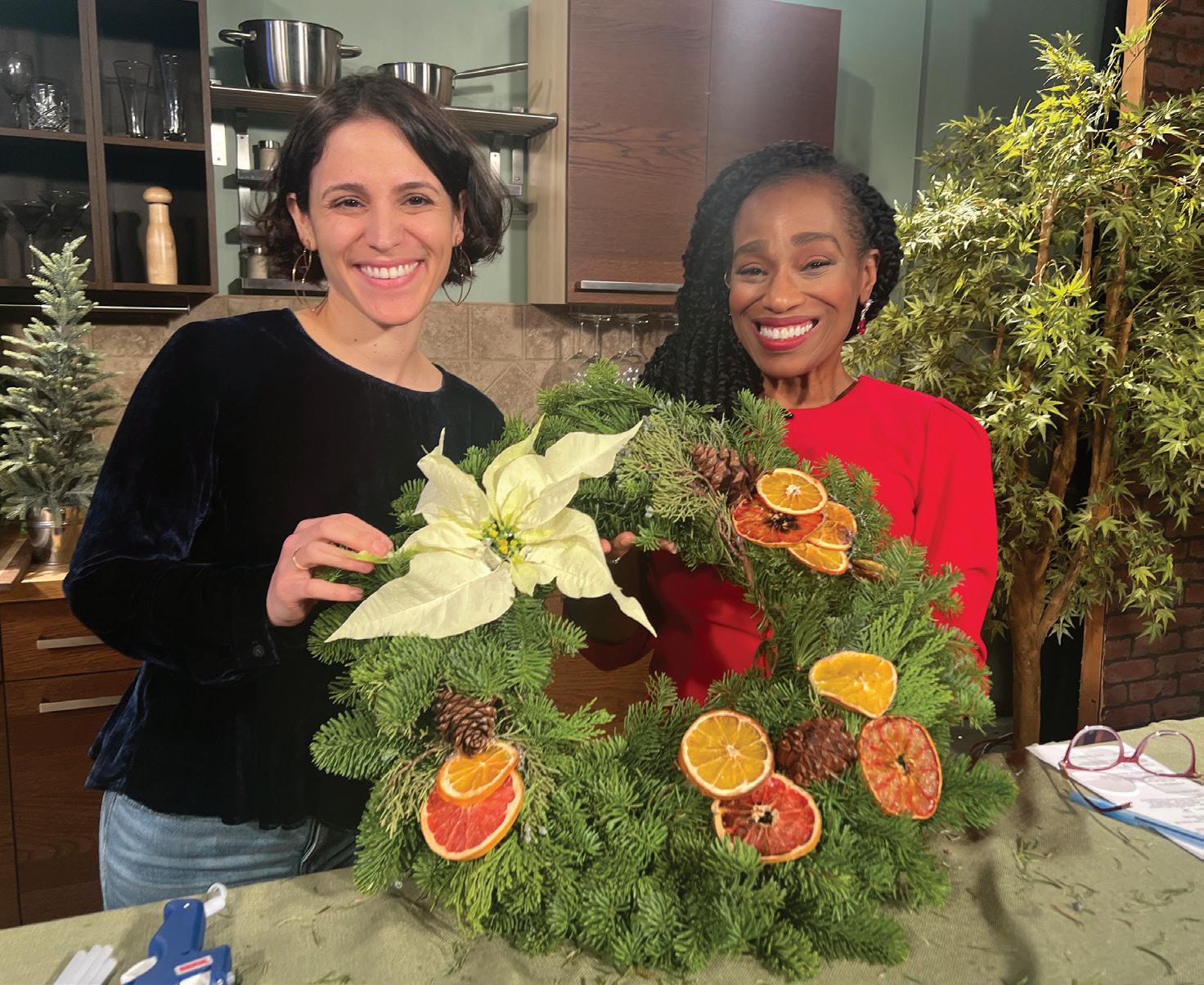


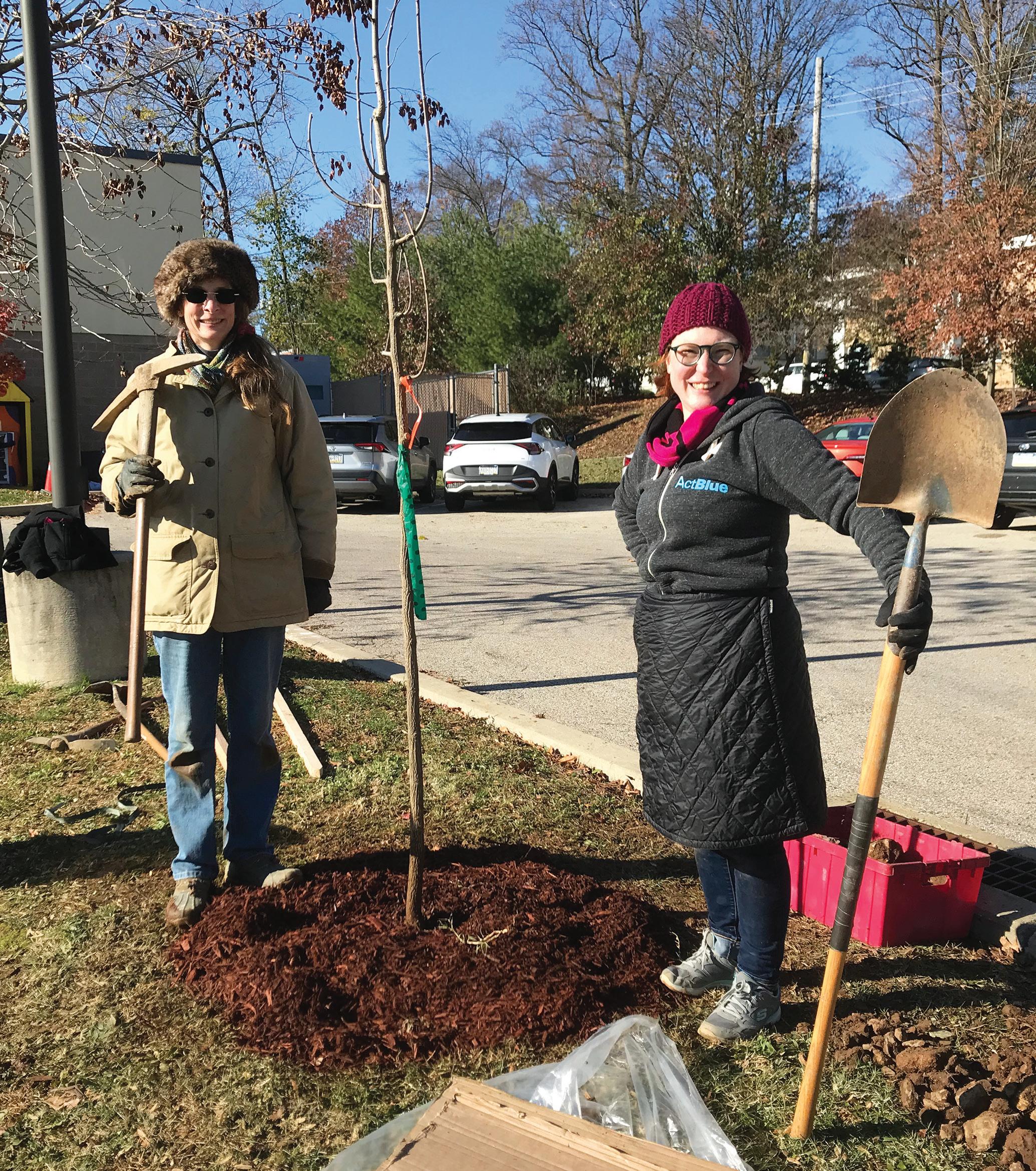
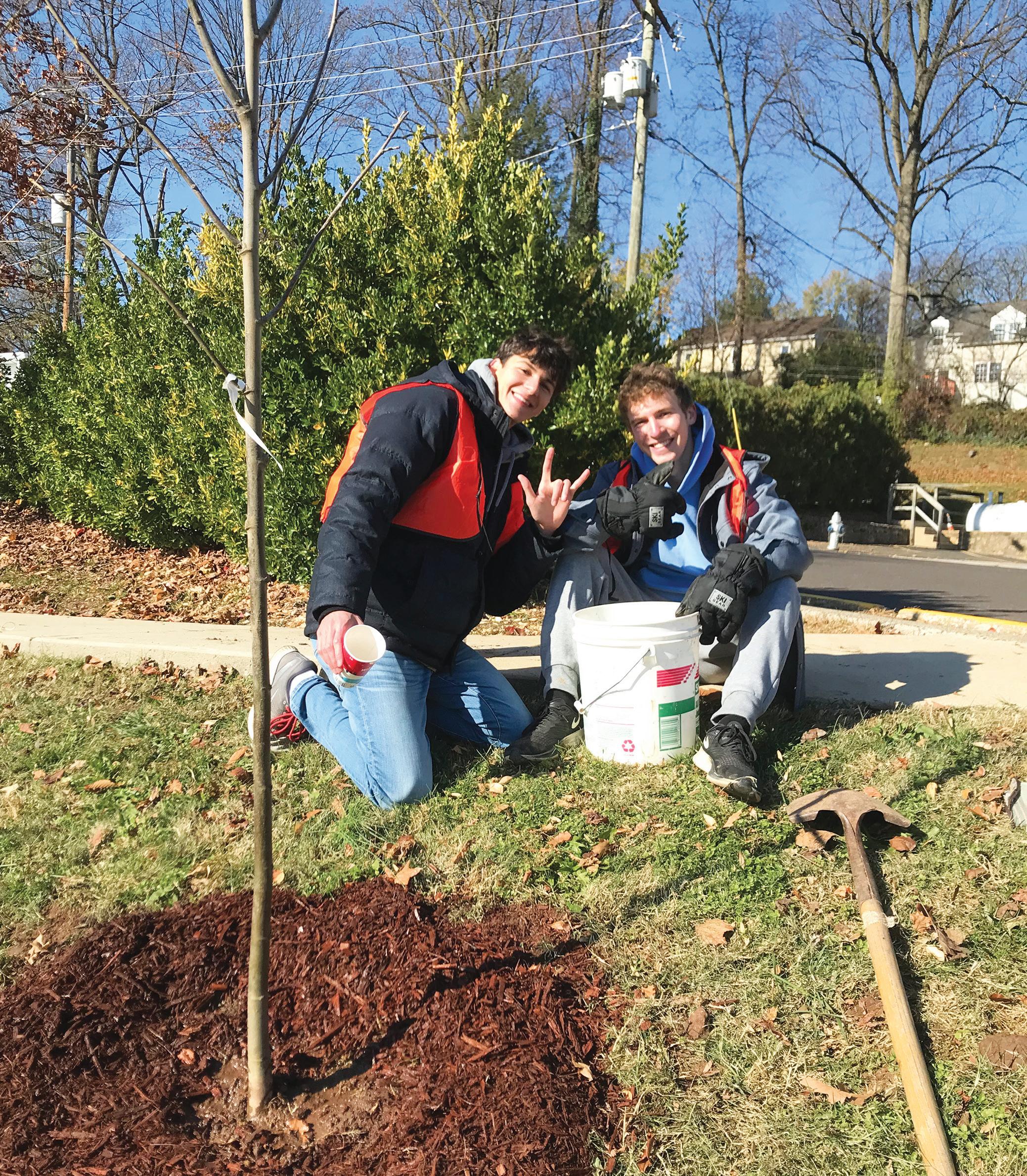


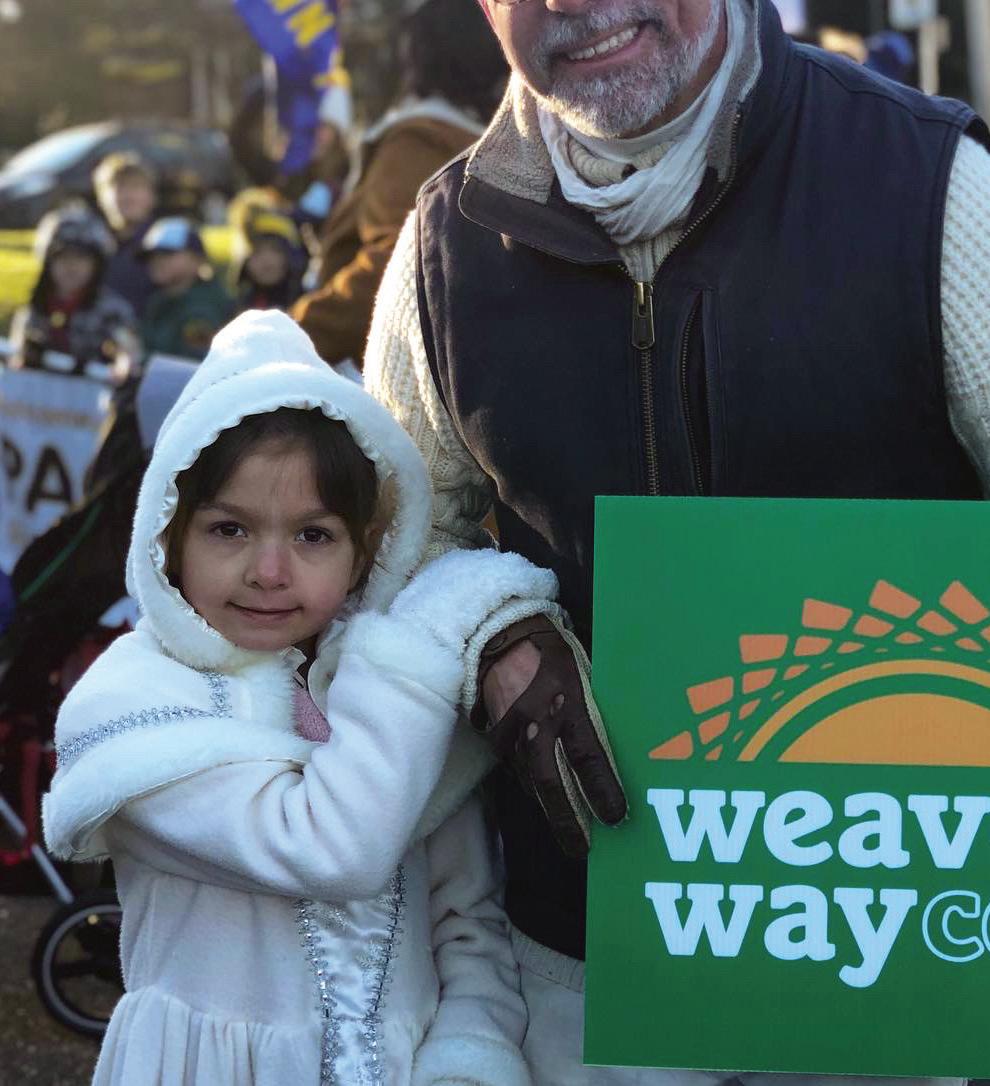
December 2022 THE SHUTTLE 3 WEAVERS WAY A General Store of Local & Unique Finds Holiday Hours Starting Sat, 12/3 Sat/Sun 10am-6pm Wed-Fri Noon-6pm Week of Dec 19 Mon-Friday Noon-6pm Sat 12/24 10am-2pm Volunteers Green Up Ambler's Parking Lot
photos by Steve Hebden
A group of helpers gathered outside Weavers Way Ambler on Nov. 19 to plant trees in the parking lot the Co-op shares with Ambler Beverage Exchange. Above left, Catherine Jacobs (left), and Amanda Gilmore wield the pickaxe and shovel they used to plant their sapling. Above right, Wissahickon High students and National Honor Society members Josh Sasson (left) and Ethan Werner pose by the tree they planted. The trees were donated by the borough, with planting coordinated by Ambler's Environmental Advisory Council.
photo by Nima Koliwad
Weavers Way Mercantile Manager Nicole Saphos and and PHL 17 anchor Jen Lewis-Hall show off one of the Co-op's fresh wreaths during a PHL Morning News segment on the Merc's holiday offerings on Dec. 8.
photo by Nima Koliwad. Our members are the best! We walked in the Chestnut Hill holiday parade. It was super cold outside but we had lots of fun.
CELEBRATING 10 YEARS!
608 Carpenter Lane 215-843-8289 foodmoxie.org
608 Carpenter Lane 215-843-8289 foodmoxie.org
Executive Director
Executive Director
We dig what we eat.
The Many Avenues of Support from Weavers Way Members
by Kim Fleisher, Executive Director, Food Moxie
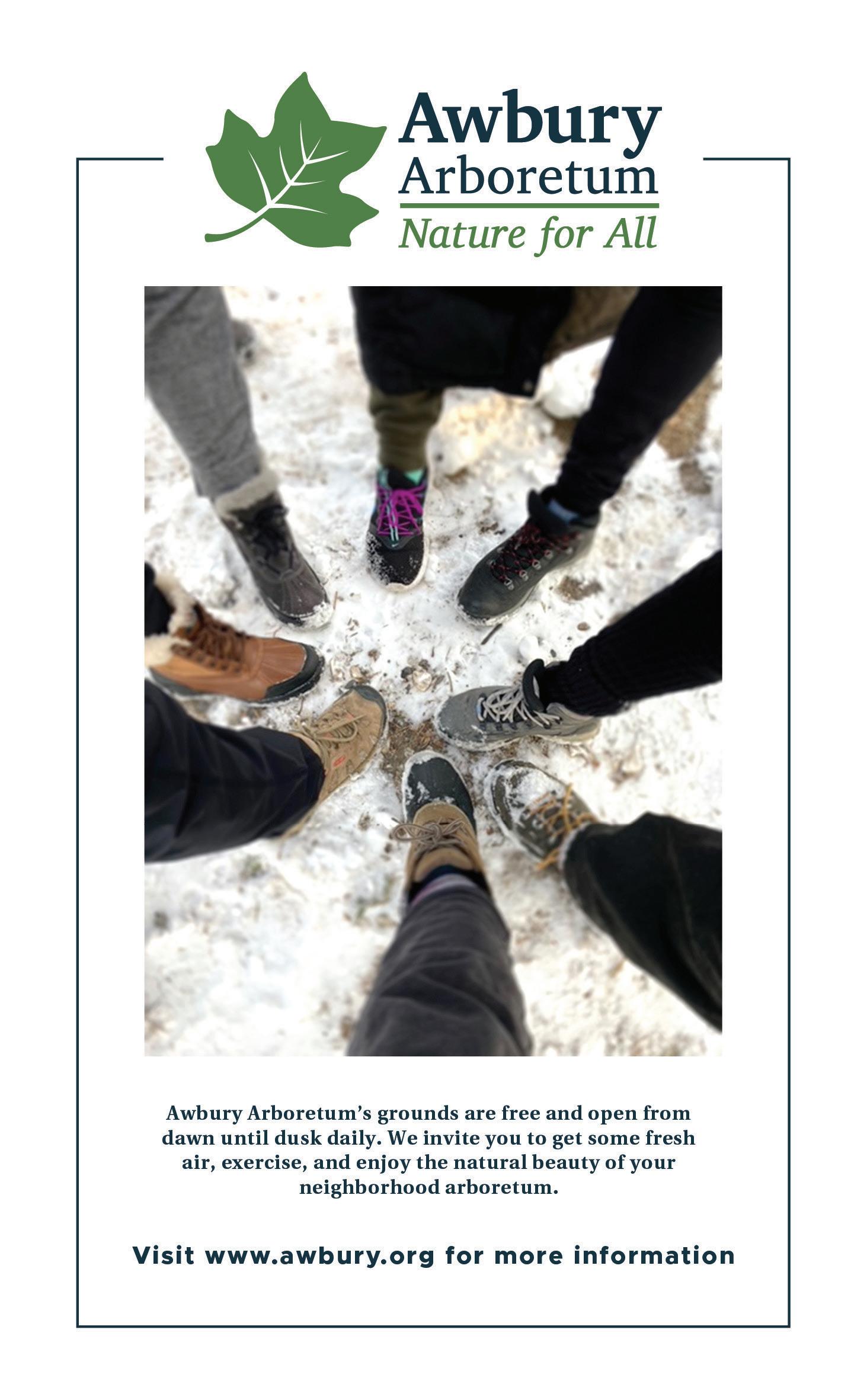
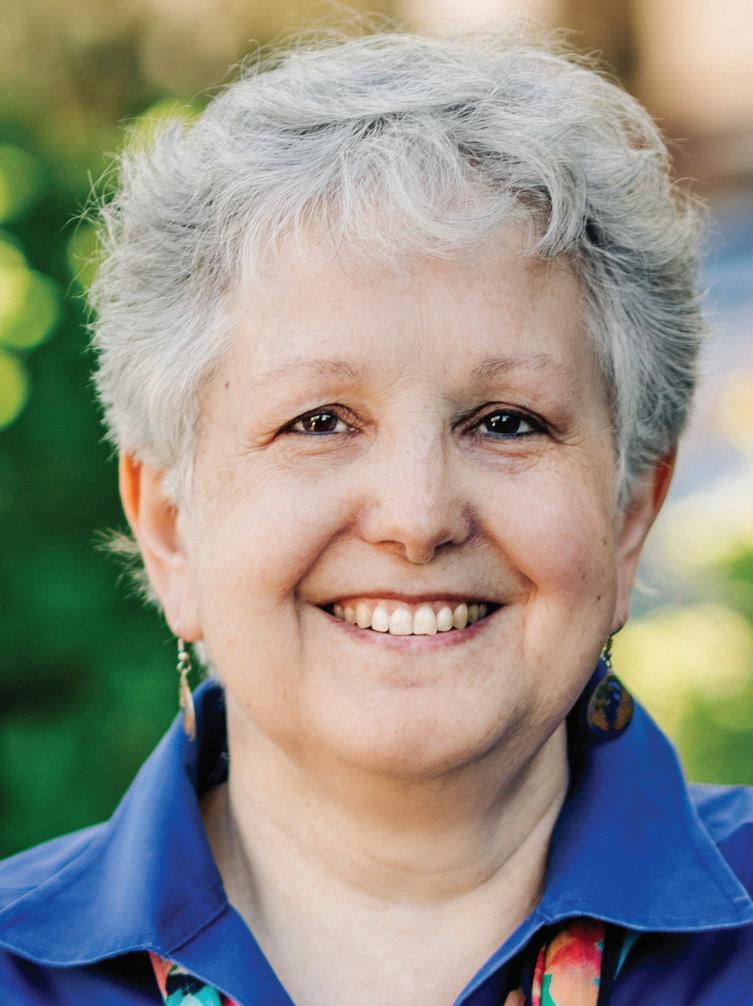

eavers way member ellie seif has been photographing Seed to Supper, Food Moxie’s annual fundraising gala, for several years. Volunteer efforts like hers count toward cooperator hours at the Co-op. In turn, the working member gets a 5% discount on groceries every time they shop.
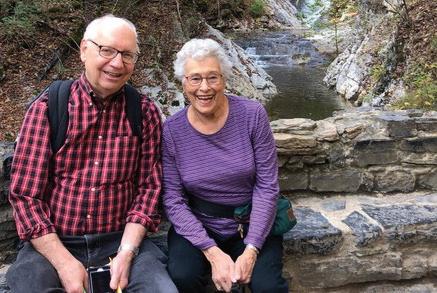
KIMBERLY FLEISHER kim@foodmoxie.org
JILL FINK jill@foodmoxie.org
Development Director
PROGRAM DIRECTOR DORENE REGIANNI dorene@foodmoxie.org
ALLISON BUDSCHALOW allison@foodmoxie.org Program Director
ANDREA DOWNIE andrea@foodmoxie.org Office Manager
LEAD GROWERS/EDUCATORS
JULIA LEMYRE info@foodmoxie.org
The discount can be a big help, especially with food prices at an all-time high. But people like Ellie and her husband Elliot forgo their discount and donate the savings to Food Moxie, the nonprofit sibling of Weavers Way (also known as Weavers Way Community Programs). For 15 years, we’ve been educating and inspiring youth and families in Northwest Philadelphia to grow, cook and eat nutritious food.
ELAINE S. HOLTON elaine@foodmoxie.org
Youth Education Coordinator
MELISSA POWELL melissa@foodmoxie.org
AINHOA WOODLEY ainhoa@foodmoxie.org
Farm & Garden Manager


BRANDON RITTER brandon@foodmoxie.org
ANTOINE FOWLER antoine@foodmoxie.org
Food Moxie couldn’t exist without the support of Co-op members like Ellie and Elliot. Through Giving Twosday contributions at the register, the High Five program, volunteering and more, members make a big difference toward our vision of a world where all people have access to the skills and resources to grow, cook and enjoy healthy food. This year alone cooperators made weekly deliveries of hundreds of pounds of produce from our gardens to the Double Trellis Food Initiative, which takes what we grow and makes it into prepared meals that get distributed to Philadelphians facing food insecurity. On Thanksgiving, they surpassed their 25,000th distributed meal!
Weavers Way members who donate through High Five or other means make it possible for us to serve out our mission. In the last year, we provided instruction in gardening, farming and culinary arts to nearly 60% of Saul High School students alone.
In this time of deep food insecurity in Philadelphia, where 17% – or almost 270,000 – Philadelphians experience food insecurity daily, Food Moxie teaches a generation of young people to understand the value of growing food and distributing/ sharing it with others. We're proud to be part of a web of local
growers and educators striving to help young people and families see themselves in the food system. Through our efforts, we hope they will also be inspired to play a role in shaping its future through our programs at Saul, Martin Luther King High School and Stenton Family Manor.
It takes a tremendous amount of effort and resources to make these programs a success, and Co-op members play a big part in helping make them possible. Over the years, many members have also volunteered through serving on our board of directors. If you’re interested in learning more about joining the Food Moxie board, please contact board co-chair Catherine Kendig at catherine@foodmoxie.org. To learn more about the High Five working member discount donation program, please contact Kirsten Bernal, the Co-op’s membership manager. Thank you, Weavers Way members! We appreciate you!
4 THE SHUTTLE December 2022
THANKS TO... For Their Support! Drop $2 (or more!) at any register to benefit Food Moxie programs Giving TWOsday Greetings season's Call me today at (610) 308-0802. Visit www.REALTORJANETAMES.com It may be December but SPRING is COMING! III If buying, selling, or investing in real estate is a goal for 2023, the time to craft a winning plan is NOW
W
photo courtesy of Food Moxie Elliot and Ellie Seif, Weavers Way working members and High Five participants.
“The
Allens Lane Art Show and Sale Closes Out Dec. 18
Weavers Way is working hard to open a new location in Germantown at 328 W. Chelten Ave, a former Acme Market. This store will serve a rapidly growing membership and provide healthy and local foods to the neighborhood. The plan is to open in the summer of 2023. Through Member
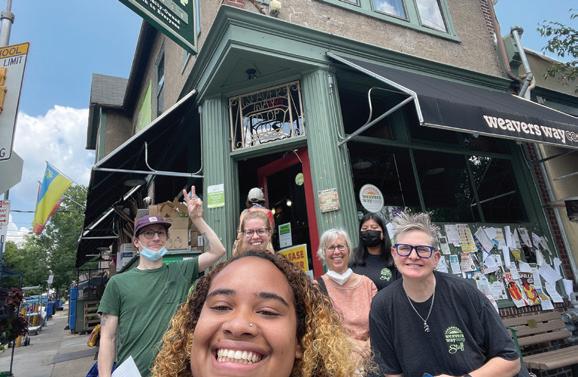
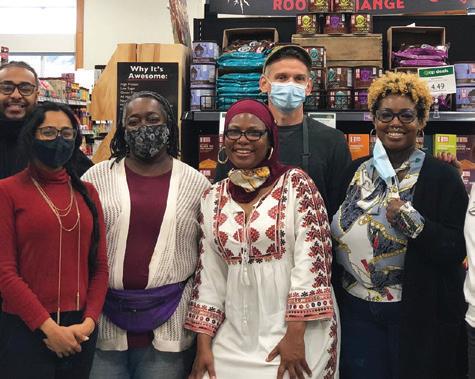
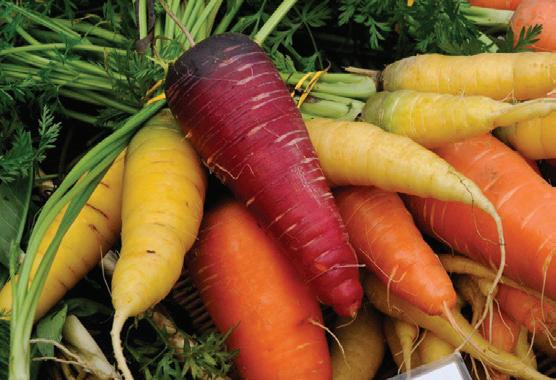
The artworks, created by center faculty, students and select community artists, are priced with gift giving in mind and can be taken home the same day. They include pottery, tiles, sculpture, paint-

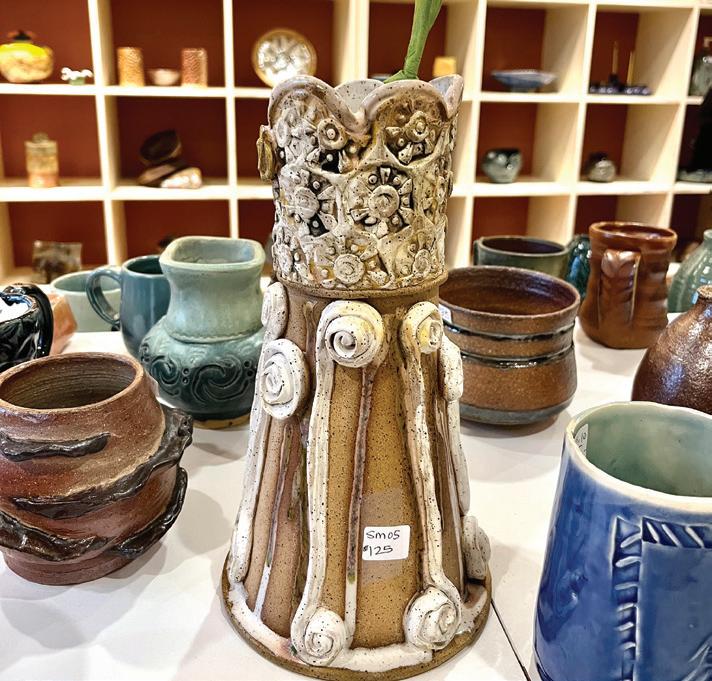
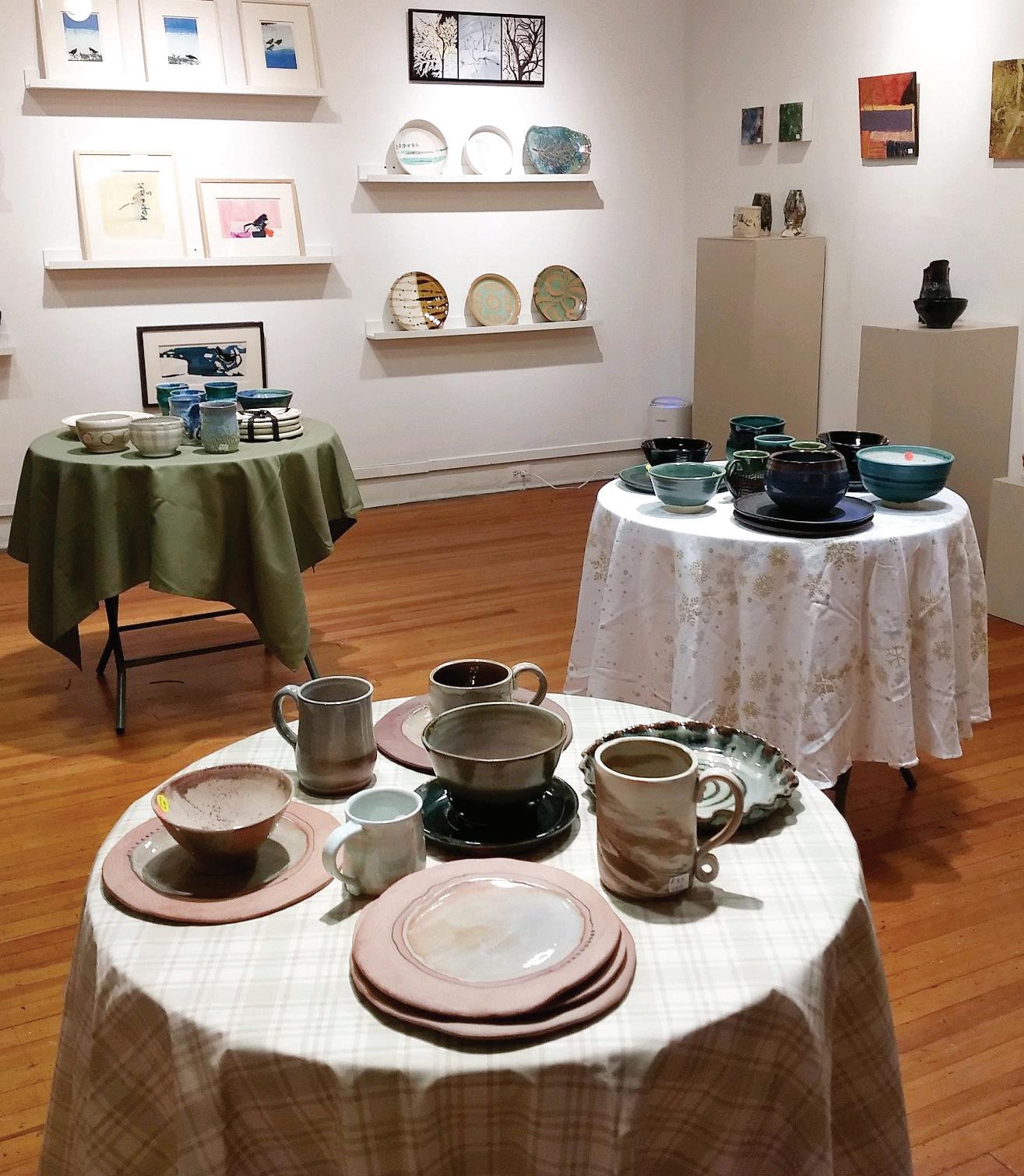
ings, drawings and more.

Daily hours during the event are noon to 6 p.m. Proceeds support the participating artists and the programs at the center.
Allens Lane Art Center is located in Mt Airy at 601 W. Allens Lane. Plenty of off-street parking is available. For more information visit the website at www.allenslane.org.
December 2022 THE SHUTTLE 5
MEMBER LOAN CAMPAIGN
members can invest
the Co-op and
exciting endeavor! With a minimum of $1,000 (no maximum): • 2.5% interest for 4 years • 4% interest for 6 years • 5% interest for 8 years Simple, not compound, interest to be paid at the end of the loan period. TOGETHER WE GROW Help Raise $1.2 Million by Investing in Your Co-op www.weaversway.coop/member-loans Interested in learning more or applying? Contact co-chair Catherine Kendig at Catherine@foodmoxie.org Help support gardening, farming and culinary arts education in NW Philadelphia!
Loans, Co-op
in
support this
looking for new board members.
Food Moxie is
Artful Gift,” Allens Lane Art Center’s holiday fine art and pottery exhibition and sale, concludes Sunday, Dec. 18 at the Carolyn and Howard Alber Gallery and adjoining studios on the main floor of the art center.
Giving Thanks for the Co-op
We have so much to be grateful for at Weavers Way! Thank you to our Board’s equity committee for the effort to develop and live by the equity commitment statement in the November Shuttle. I am so proud to be a member of an organization that is doing the work of creating equity.
I also want to shout out Jon Roesser, our amazing leader, whose interview was
SHUTTLE LETTERS POLICY
published last month in the City/Suburbs section of the Philadelphia Inquirer.

We couldn't be more fortunate to have such a brilliant, thoughtful, educated and devoted general manager. Jon, for all that you are and all that you give, our sincere and overwhelming thanks to you, all the other leaders at the Co-op and our board. Hear, Hear!
Marilyn & Binky Frazier
How to Switch to the Online Shuttle
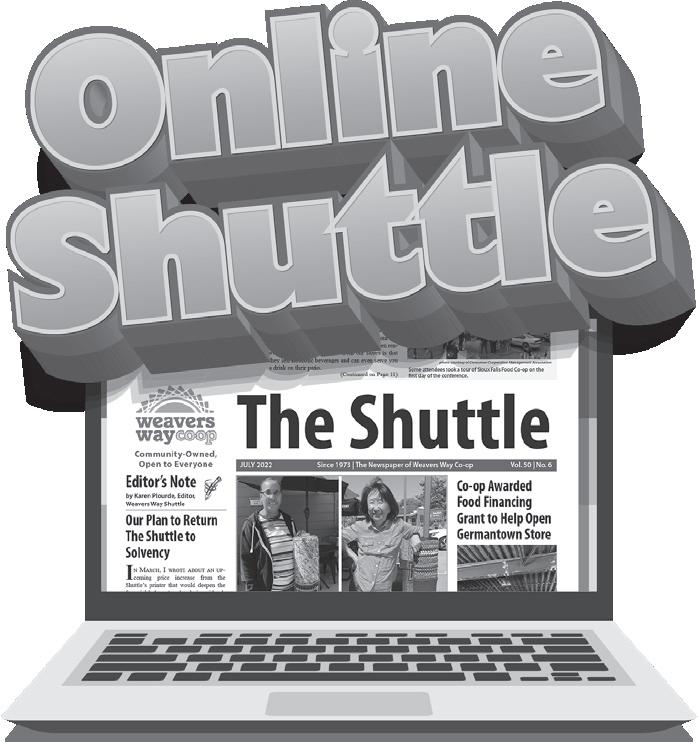
We're still getting a lot of inquiries from members on how to switch their Shuttle subscriptions from paper to online. Here's what you need to do:
Go to the Shuttle tab on the News & Events section of our website and click on "click here to switch from a paper to an online subscription" (second paragraph on the page).
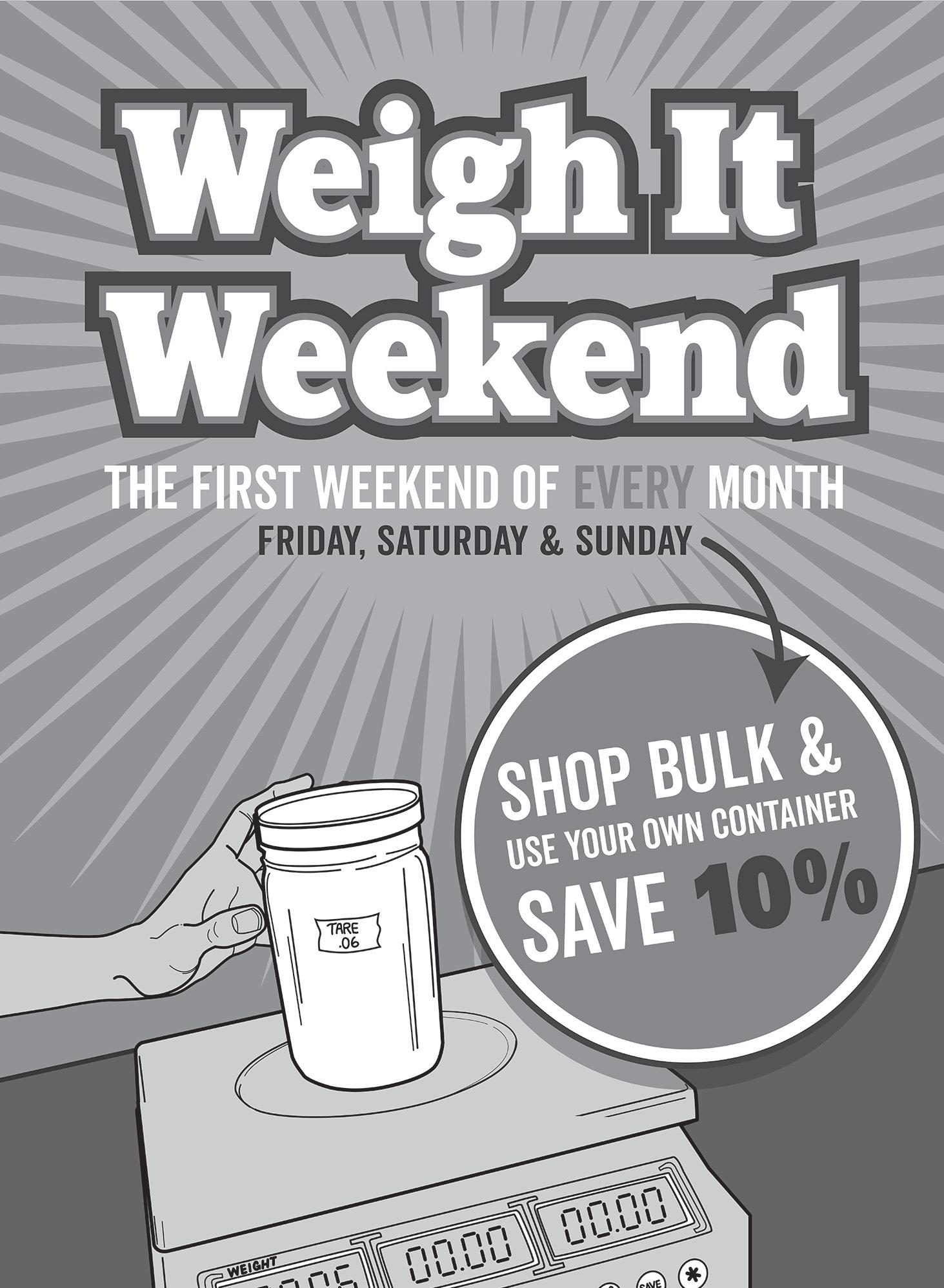
On that page ("Get notified when we publish the Shuttle online!"), add your name and email. You'll be deleted from our paper Shuttle mailing list and added to the online subscriber list. You'll get an email from us on the day a new Shuttle is published.
You can also make the switch in our Member Center. After logging in, go to "My Message Board," click on "Update The Shuttle Delivery Preferences," and click on your selection on the next screen. Thanks for doing your part!

6 THE SHUTTLE December 2022
welcomes letters of interest to the Weavers Way community. Send to editor@
. The deadline is the 10th of the month prior to publication. Include a
and email address or phone number for verification; no anonymous letters will be published. Letters should be 200 words or less and may be edited. The Shuttle reserves the right to decline to publish any letter. L•E•T•T•E•R•S eShopper Don’t miss a thing! All the deals in your email box. SIGN UP: WWW.WEAVERSWAY.COOP Adv e r t is e i n th e Sh u ttl e ■ Targeted readership ■ adver tising@weaversway.coop shop bulk save money & reduce waste Call Ed “The Tech Guy” For All WindoWs PC ComPuter serviCes in-Home or remote AssistAnCe LOW RATES cell 719-964-9538 www.edttg.com Computer Service and Repair
The Shuttle
weaversway.coop
name
by Jon Roesser, Weavers Way General Manager
egular readers of this column (are there regular readers of this column?) may recall that I have been tracking the rising cost of the donuts we buy for staff every week.
Well, in recent months I’ve been relegated to backup donut buyer, because the staff prefers the ones my colleague Candy picks up on her way into work, though no one ever complains when I buy the donuts. Which proves the theory that the world’s best donut is the one that’s in front of you.
Anyway, last week Candy was out, I was on donut duty, and my regular morning routine had been disrupted by something that had me in Flourtown. So I popped into the Dunkin Donuts on Bethlehem Pike, where I was confronted with a brand new experience.
At this Dunkin – they’ve officially dropped “donuts” from their name, as most of their customers these days are coming in for specialty coffee drinks and breakfast sandwiches – they recently installed two ordering kiosks for customers to use when placing their orders.
The kiosks were made of large, rectangular touch screens. The technology was somewhat mocked by the handwritten “Order Here” signs someone had taped on them.
Thanks to Wawa and other retail chains, at this point I’m familiar with ordering kiosks. So it was easy enough for me to figure out how to place my order for three dozen donuts.
At the bottom of the kiosk was a standard payment terminal that accepted credit and debit cards, gift cards and mobile payments (Apple, Google, etc.). You could not pay for your order in cash.
This was the first thing I noticed that was truly unique: At this Dunkin, paying with U.S. currency isn’t even an option. In the brief time I was there, two customers who wanted to pay with cash had to be turned away. One came back after retrieving her wallet from her car; the other presumably took his business elsewhere.
The second truly unique thing: The kiosks were the only way for a customer to place an order. There was no human option. The old counter was still there, but the registers had been removed. Another handwritten sign taped to the counter instructed customers to “Place Orders at Kiosks.”
There should be no mistaking Dunkin’s motives here. Ordering kiosks reduce labor, which is a retailer’s single biggest operating expense. With inflation pushing up costs and consumers increasingly focused on price, controlling operating expenses is one critical way to maintain profitability.
Of course, these days retailers can’t find the help anyway, so adaptation becomes a necessity. Those kiosks won’t relocate, go off to college or find a better gig elsewhere.
An actual person did assemble my donut order, and twice he had to come out from behind the counter — asking “who ordered the three dozen donuts?” — to inform me that one of the flavors I had requested was unavailable. Both times, he suggested agreeable substitutes.
Overall, the experience was new and a little weird, but simple enough. And not unpleasant.
All of this is relevant right now as we proceed with the design of our new store in Germantown. The store won’t open until later in 2023, but equipment orders need to be placed soon, and we’re grappling with an important consideration: Do we incorporate self-checkouts into the store’s front end?
David, our IT Director, says our current register system can support self-checkouts. The technology, hardware and software, will set us back $40,000 to $50,000.
No offense to David, but when my ears hear “40 to 50 thousand” my jaded brain assumes “80 to 100 thousand.” But even if I’m right, the investment is a relatively small part of a multi-million-dollar project. And even if we’re not motivated by the same factors as our for-profit competitors, customer preference is an important consideration.
The truth is that while retailers like ordering kiosks and self-checkouts for their cost savings, they are also increasingly preferred by customers.
Much of this is habit. Those Wawa ordering terminals, once foreign, are now familiar. Self-checkouts are commonplace at stores like Lowes and Giant, and most people would rather use them than wait in one of the dwindling number of lanes still staffed by cashiers.
As for our internal deliberations, they seem to fall mostly on generational lines. Those of us over 40 express some hesitation or indifference, while those under 40 are adamant: Offering self-checkouts as an option in Germantown is a no-brainer, and the sooner we can roll them out in our other stores, the better.
Whatever we decide, the technical evolution of the retail world will inevitably continue.
See you around the Co-op.
Saturday December 24th
December 2022 THE SHUTTLE 7 GM’S CORNER GM’S CORNER
Wasn’t
the
FY2022
Bad for
Co-op, but it Wasn’t Great, Either
R“ “ Those kiosks won’t relocate, go off to college or find a better gig. EASYPAY EasyPay house accounts are an EASY way to PAY at Weavers Way! www.weaversway.coop/easypay Do you enjoy being a human being? www.premrawat.com
Candlelight Worship in the Sanctuary, 7:30pm Also livestreamed at www.summitpres.net Sunday, December 25th Join us from home on Christmas morning! Interactive, Zoom-only worship, 10:00am www.summitpres.net Christmas Services
PhotoLounge Exhibit Showcases “Best of the Year” Submissions

Photolounge’s second annual
Best of the Year photography show, which highlights some of the best photos the community has taken this year, continues through Jan. 14 at the photo lab’s PL 130 Gallery near Rittenhouse Square.
The show is organized around one of PhotoLounge’s weekly photo contests that it hosts on Instagram. For the sake of equity, the gallery eschews any costs associated with entering or exhibiting shows. Instead, costs are sponsored by an active film photography club in which members pay $8 in monthly dues to support the art. All work is hung unframed and printed by PhotoLounge on museum quality substrates.
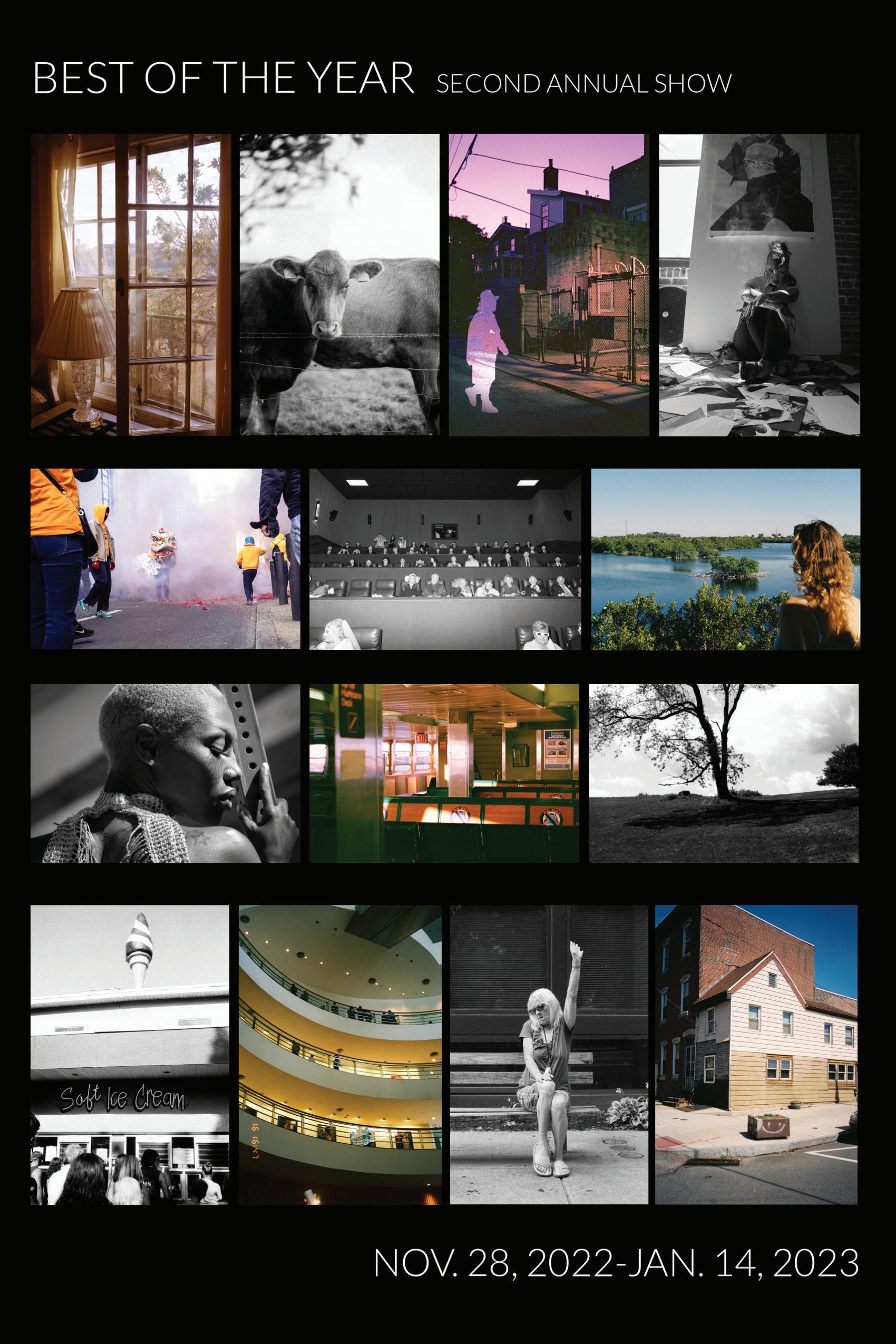
PhotoLounge has offered photographers of all levels printing and film processing lab services since 1997. Last year, the business relocated to a historic brownstone a block from Rittenhouse Square, expanded its film and printing labs and opened the gallery.
PhotoLounge is located at 130 S. 17th St. and is open noon-5 p.m. every day except Sunday.

Advertisers — So Will
8 THE SHUTTLE December 2022 WE ARE HIRING Career Opportunities Ambler • Meat Clerk • Grocery Clerk • Deli Manager • Part-time Grocery Clerk • Fruit Cutter • Assistant Store Manager Chestnut Hill • Grocery Clerk • Produce Clerk • Sandwich clerk • Dishwasher • Prepared Foods Cook Mt. Airy • Deli Clerk • Pet Store Looking for a career change or extra hours? Scan the QR Code to apply! www.weaversway.coop/employment Some things just belong together Save when you insure your home and auto with ERIE. You can have superb insurance coverage, outstanding service, great rates and discounts too. Take advantage of ERIE’s multi-policy discount and we’re willing to bet your tail will be waggin’. Also ask us about ERIE’s other available discounts. Call us for a quote today. Discounts, rates and coverages vary by state and are subject to eligibility and applicable rates and rules. ERIE® insurance services are provided by one or more of the following insurers: Erie Insurance Exchange, Erie Insurance Company, Erie Insurance Property & Casualty Company, Flagship City Insurance Company and Erie Family Life Insurance Company (home ofices: Erie, Pennsylvania) or Erie Insurance Company of New York (home ofice: Rochester, New York). Not all companies are licensed or operate in all states. Not all products are offered in all states. Go to erieinsurance.com for company licensure and territory information. S1693 10/15 The Lowa Group, Inc. 8002 Germantown Ave. Philadelphia PA 19118 www.Lowagroup.com 610-327-1980 We
You!
Love Our
Co-op Gift Ca rds A lways in g rea t tas te! THE GIFT OF local goodness GiftCard
Type: Shampoo bars
Brand(s): Badger, HiBAR, Green Ablutions and more

Stores that stock them: Ambler, Next Door, Across the Way
The Challenge: Tired of all the plastic bottles in your bath/shower area? Then shampoo bars and conditioner bars may be for you.
A Greener Alternative: Made of oils, butters and cleansers that are solidified and packed into bar form, shampoo bars are small but mighty. Liquid shampoo is diluted (almost 80% of that bottle is water!) and often contains detergents that can be harsh on your skin and hair. Shampoo bars are concentrated for full cleaning power and use fewer harsh chemicals.
Many members of the Plastic Reduction Task Force are fans of these for obvious reasons. Since liquid shampoos are made with so much water, the plastic containers are weighty and expensive to ship. These little bars do the job. They weigh only a few ounces and are typically packaged with paper-based, recyclable materials. If you travel, the bars are light and fit easily into a bag — no need to worry about spills or being flagged prior to a flight for liquid infractions. And if you’re headed to the gym for a workout, just grab a bar and go!
There are multiple brands available at the Co-op, even some that are locally made (shout out to Green Ablutions in Phoenixville). As with liquid shampoos, there are different bars for different hair types and different scents. Purifying peppermint, anyone?
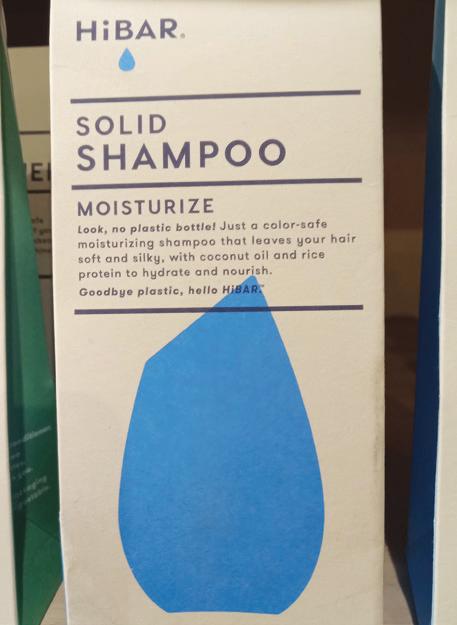
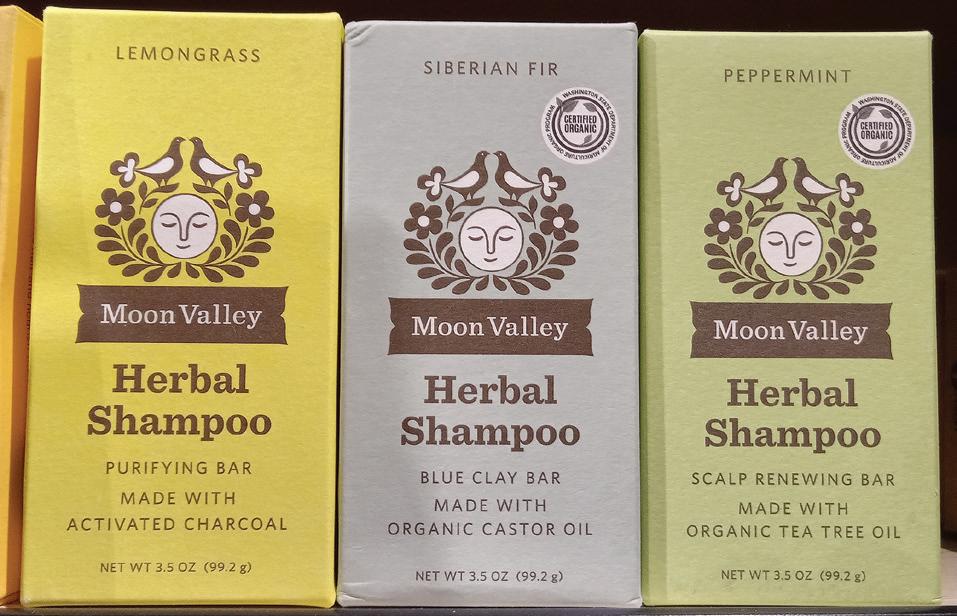
When using these bars in your newly freed-up bath/ shower space, remember that as with all bar soaps, they last longest if they don’t sit in water between uses. So keep them tucked away from the shower stream and they'll be available for a powerful wash when you are.
—Sue Landers
A One Pot, Low Waste Meal to Last All Week
I have five words for you: zero waste, delicious, onepot meal.
Oh yes, it’s possible. This is a veggie-filled, vegan meal that kids love, only dirties a couple kitchen items, and takes 30 minutes from start to finish. And you can get everything you need for it at the Co-op.
This one involves an aluminum can and a glass jar, so if you recycle them, it’s basically zero waste! What’s more, it’s nut-free for school, dairy-free for the kids who ate way too much cheese at snack time and can be easily made gluten-free.
If you have a household of three or more, double this to have excellent meals for days!
Mushroom Coconut Pasta Equipment: One big pot, one cutting board, a kitchen knife and a bowl
Ingredients from the bulk section (bring your own bags and containers):
• A few tsps. olive oil
• 1 lb. of your favorite pasta
• 2 tbsp. nutritional yeast flakes
• 1 tsp. paprika powder
• A pinch of salt
Bulk/loose produce items:
• 2 medium shallots
• 6 cloves garlic
• 4 cups assorted mushrooms (bring your drawstring bag for loose white buttons and shiitakes)
• 4 cups fresh spinach or other greens
Glass and aluminum packaged items:
• 2 tsp. veggie bouillon (Better Than Bouillon comes in a glass jar)
• 1 can full-fat coconut milk
• 1 small jar sundried tomatoes
Directions:
Chop the shallots, mince the garlic, slice the mushrooms and drain and chop the sundried tomatoes. Make veggie broth with two cups of water and the bouillon.
Heat oil in a large soup pot on medium-high heat. When hot, sauté the shallots and garlic for about three minutes, adding a splash of water as needed to unstick the onions.
Add everything except for the spinach, bring the mixture to a boil, then reduce heat to a simmer with the lid partially covered. Cook for about 15 minutes, stirring occasionally.
When pasta is al dente, turn off the heat and add the spinach. Stir until the spinach is wilted. Enjoy!
— Arielle Tennenbaum
Plastic Reduction Task Force
to Pollution
The Philly Talks Trash speaker series presented its second program of the Participation is Power series on Dec. 15. “From Packaging to Pollution” gave attendees a detailed look at how the oil industry and fracking are responsible for the immense rise in plastic over the last few decades, 40 % of which is used for packaging. This intentional strategy has affected our shopping options and led to overwhelming amounts of pollution in our local communities and waterways.
In 2018, according to the Environmental Protection Agency, about 14.5 million tons of plastic containers and packaging were created; most of it ends up as trash. During the holiday season, the United States sees an increase in waste of almost 25 %! With a problem this large, we need everyone to act.
—Karen Melton
Container Refund Program (CRP) Updates
Get excited — Weavers Way is now offering refundable containers for dried cranberries, dried cherries, organic pitted prunes, Medjool dates and almond butter! If you’re using the CRP items, please follow these guidelines:
• Do not place any stickers on the containers
• Return refundable containers pre-washed.
Also, thanks to everyone who took the member satisfaction survey and voiced their opinion on plastic usage at the Co-op. The results indicate how strongly our members feel about the importance of reducing plastics.
— Alisa Shargorodsky, ECHO Systems
The Plastic Reduction Task Force is a group of volunteer members and staff committed to investigating waste issues associated with the full life cycle of plastics, raising awareness about the effects of unregulated plastic production, and advising the Co-op on ways to reduce single-use plastics in our operations. Please contact us at prtf@weaversway.coop.
December 2022 THE SHUTTLE 9
Philly Talks Trash, Session Two: From Packaging
Our Shampoo Bars Lineup, a Fave Recipe, and More CRP Item Options Plastic Reduction Product of the Month 2023
On Nov. 19, the Montgomery County chapter of Jack and Jill of America, a leadership organization founded by Black mothers that brings together children in social and cultural environments, set up a table outside our Ambler store to solicit donations and help stock our community fridge and pantry. Parents and children from the group engaged shoppers and shared ways to help support the fridge. Shoppers were encouraged to either donate cash or buy fresh food for the fridge.
A couple days after the event, Jacquillia Hooper and Dana Walters, two moms who helped coordinate the effort, shared their thoughts on the role of the community fridge in a suburban neighborhood.

"Food insecurity and malnourishment is often associated with underserved urban areas. But the need is everywhere,” Hooper wrote in an email. “Hunger doesn't have a face and is easily concealed. The community fridge provides a discreet, accessible means for individuals and families to have healthy food sources for nourishment. It is a necessary and additional resource for people who suffer from food insecurity."
Going forward, Dana and Jacquillia said the group wants to provide consistent support to the fridge by organizing monthly food drives. They also hope to encourage other parents in the community to help the Co-op support the fridge and pantry. "Every little bit helps. If you have anything extra, feel free to donate!” Hooper wrote.
With the holidays upon us, we would appreciate any support you can provide to help us maintain this important community resource. If you have extra canned goods, please drop them off at our pantry next to the fridge. Or you can shop for the fridge and drop off donations anytime. We try to keep our fridge stocked with the basics: milk, eggs, bread, fresh vegetables and fruit. You can also donate cash via venmo @wwcommunityfridge or at the checkout registers in our Ambler store.
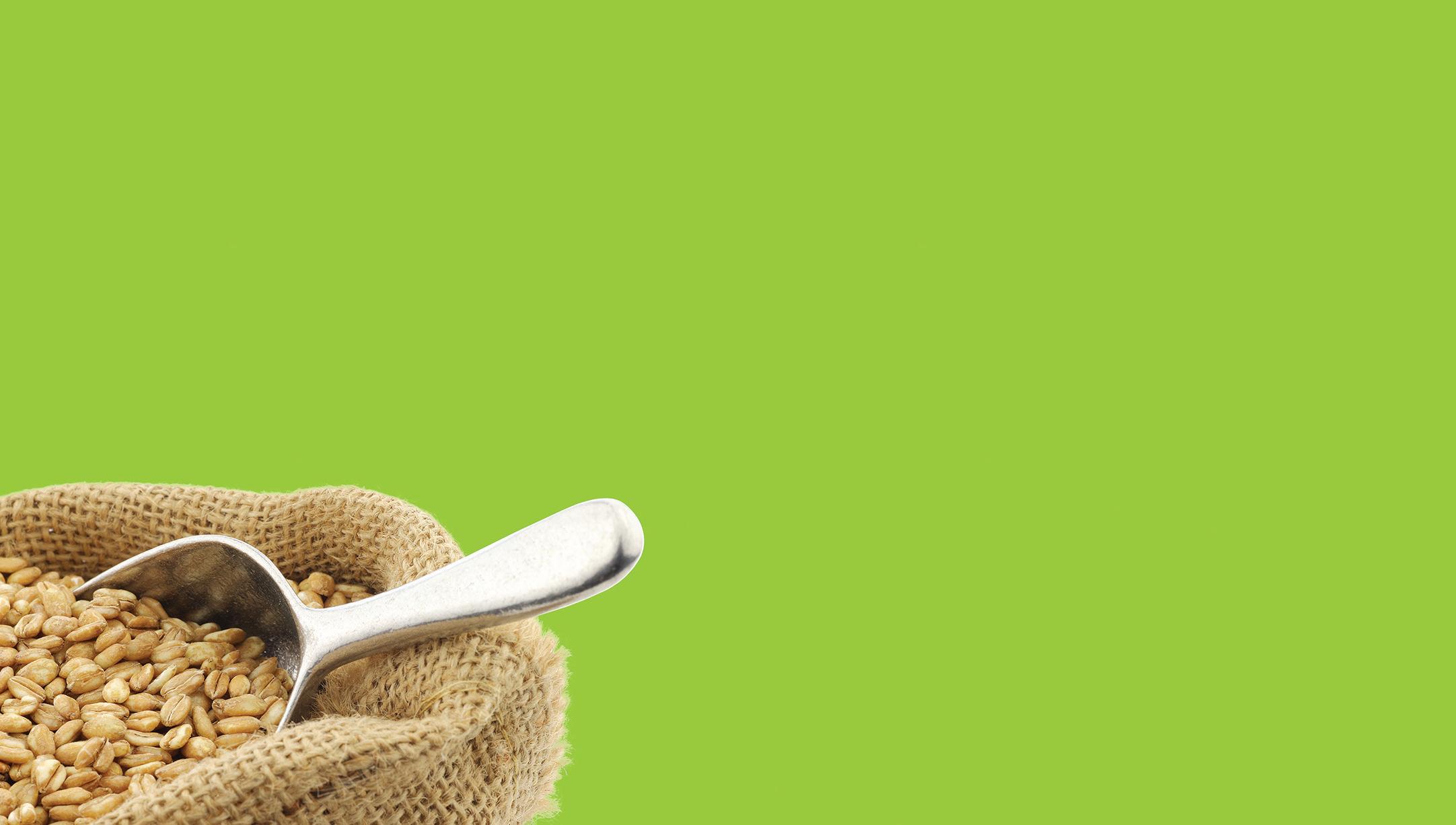
If any local organization would like to help by organizing an event like the one organized by Jack and Jill of Montco, please


Wonderful to see young volunteers from the local Jack and Jill chapter get involved in Food insecurity issues.
email me at outreach@weaversway.coop. I would be happy to help coordinate a drive.
The fridge is currently supported by the Co-op, our Food Justice Committee and donations by shoppers and community members.
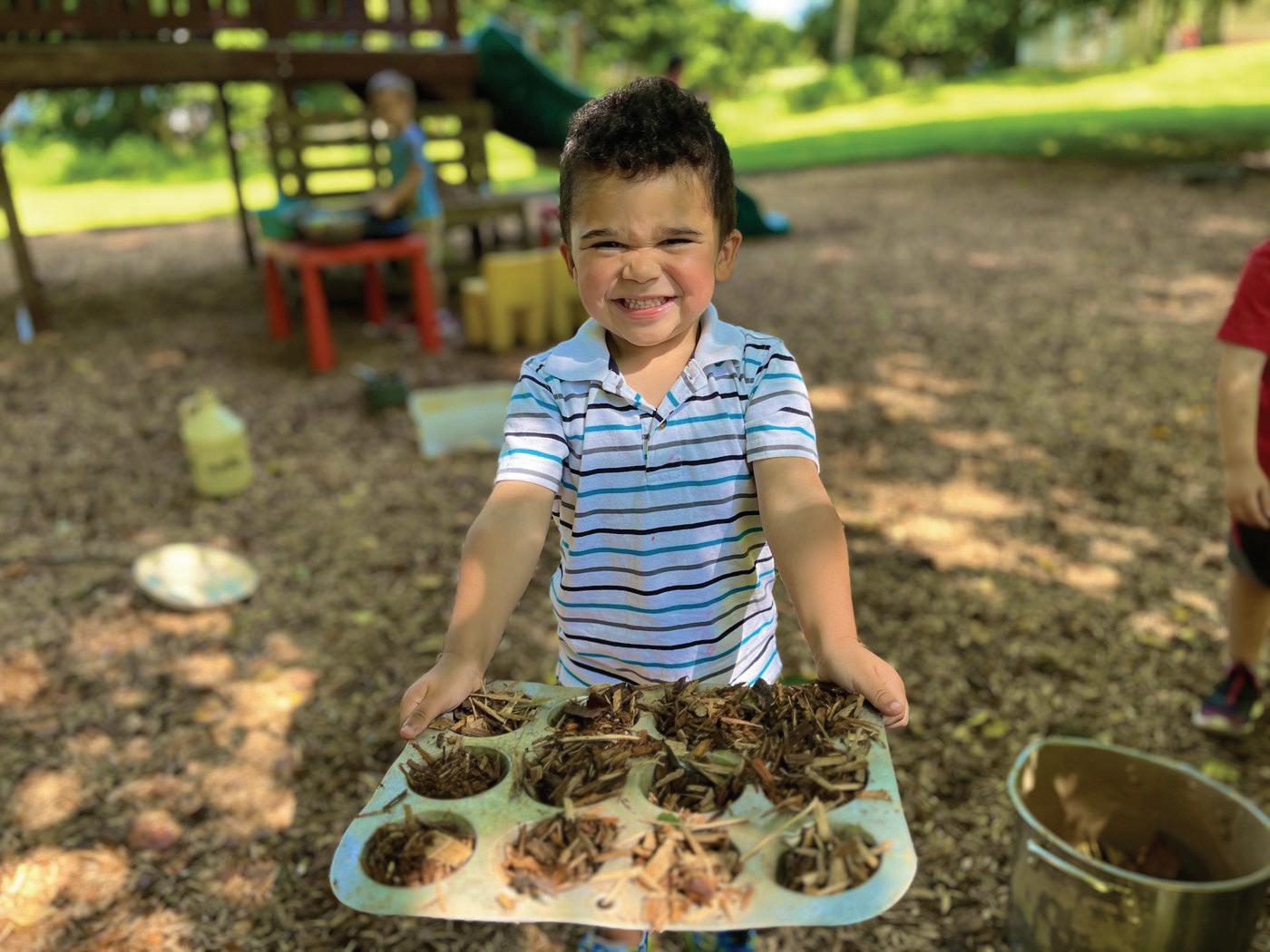
10 THE SHUTTLE December 2022 At the corner of Germantown & Butler Pikes Details and RSVP at: pmfs1780.org /visit-plymouth Tot Time for Kids 2-4 T 1/17 11am This Month: Rhythm with Music Teacher Alysssa Supports From Community Groups Helps Fill Our Fridge and Pantry (Continued from Page 1) Food Justice Committee WE WANT YOU! WE WANT YOU! 2023 Weavers Way Board of Directors RUN FOR THE BOARD For information about becoming a candidate, please contact leadershipcommittee@weaversway.coop shop bulk save money & reduce waste
photo by Nima Koliwad
West Philly Cohousing Group Looks to Expand and Firm Up Plans
by Karen Plourde, Editor, Weavers Way Shuttle
Asmall group of west philly residents interested in creating a cohousing community in the city has been meeting regularly virtually and in person for over a year. Now they’re looking to bring their vision closer to reality by working with local politicians and a developer to pin down a site or existing structure.
Cohousing Philadelphia, organized by neighbors, friends and fellow Mariposa Food Co-op members Zami and Myriam, has been looking into establishing a cohousing community since 2019. In June of that year, Zami and a friend from grad school attended the annual conference of the Cohousing Association of America in Portland, OR.
“That was the moment that I decided to start researching this and learn more,” she said.
After the onset of the COVID -19 pandemic, Zami transitioned out of the organization she’d been running and began devoting more time to her research. She also started talking to friends, including Myriam, about the idea. As it turned out, Myriam and her husband had been thinking about cohousing as a possibility for when they’re ready to downscale from their home. One of her sistersin-law has lived in the Cherry Hill cohousing community in Amherst, MA for over 20 years, and they’d gotten a taste of that living arrangement while visiting her.
“We foresee that our lifestyle will change, and we don’t really need this big Victorian house,” she said. “So it was great to see that my neighbor, my friend, is interested and has done a ton of research.”
Growing the Group Online
Zami launched weekly virtual discussions for neighbors, friends and others who might be interested early in 2021 and set up a private WordPress blog. That summer, she started hosting monthly social brunches or dinners in her garden.
“Those gatherings weren’t just about cohousing,” she said. “…A few of those who had been attending virtually were also coming here for those shared meals. And it was building community.”
Like Myriam, Zami is looking to reduce her living space once her kids have moved out.
“As an immigrant, I don’t see myself moving back overseas to where I grew up,” she said. “But I do see [myself] building on the relationships and the different… networks that I’ve created over 24 years in Philly. And I feel I’m investing in Philly.”
The group that has come together is made up of different ages and family situations, Zami said.
“What would this look like — to live in proximity in a cooperative, intentional way, where we’re supporting each other…through shared interests, shared meals,
Your Year to Run for Our Board?
For the 2023 election, we need to fill four of the 11 positions on our Co-op’s governing board. If you intend to run, you need to confirm your interest by late January. Elections take place throughout April.
We are seeking members for the board who want to become more involved in assuring our Co-op stays on course to meet our Ends — the guiding policies that define the results and outcomes of our organization and provide direction to management.
What a time to be part of the board! Our upcoming expansion to Germantown, the Co-op’s 50th anniversary, and the management-led strategic planning project will provide an exciting overlay to our usual course of business. Becoming a board member is one of the most impactful ways you can contribute to the long-term health and vitality of the Coop. Any member in good standing who is over 18 is eligible to run, so please con-
supporting, mentoring each other, caretaking — whether it’s taking care of an older person or helping take care of somebody with kids? How could we do that?”
Zami has a background in architecture and multifamily housing and has visited cohousing communities in Seattle and Portland as part of her research. The group also has a website (www.cohousingphl.life) and is hoping to form partnerships with a developer and other community groups across the city to take the effort to the next level.
For the last year, Zami, Myriam and others have tried to form a core group of four or five cofounders who will commit themselves to the project, but they haven’t gotten there yet. They want the eventual community to be multigenerational, ethnically and socioeconomically diverse, urban and close to transit, with a shared green space.
“The key is navigating a balance of independence and privacy in a communal setting,” Zami said.
How It Would Work
The core aspects of the community, which are outlined on the Features of Cohousing section of the website, are:
• Shared common spaces and activities with privacy
• Engagement, but not immersion
• Participation, but not obligation
• Shared policies, but not policing Size wise, the group is looking at 12-15 households
to be part of the community. When Zami visited the Capitol Hill cohousing community in Seattle, which is made up of nine households, residents there recommended setting up a slightly larger community to help share the workload.
The cost of land will be an important factor in deciding how big of a community the group wants to establish. There’s also interest in having rental units as part of the project, or in coming up with other ways to make it affordable for more residents.
“Financially, there’d be some economies of scale if we go a little bigger,” she said. “But that’s something we’re also going to test as we look at sites.”
Recently, the group has had preliminary discussions with a developer who may be interested in the project. But they want to make sure the fit is right.
“It’s not a typical development project, where it’s all built on speculation,” Zami said. “It would be us working in partnership with a developer who is communitycentric, with a vision to create something that has community in mind.”
Due to lingering concerns about COVID, the group has tabled their in-person gatherings until spring, In the meantime, a smaller working group will continue their discussions and research. Anyone interested in learning more about the community or becoming part of the group can leave a message on their website: www.cohousing. life .
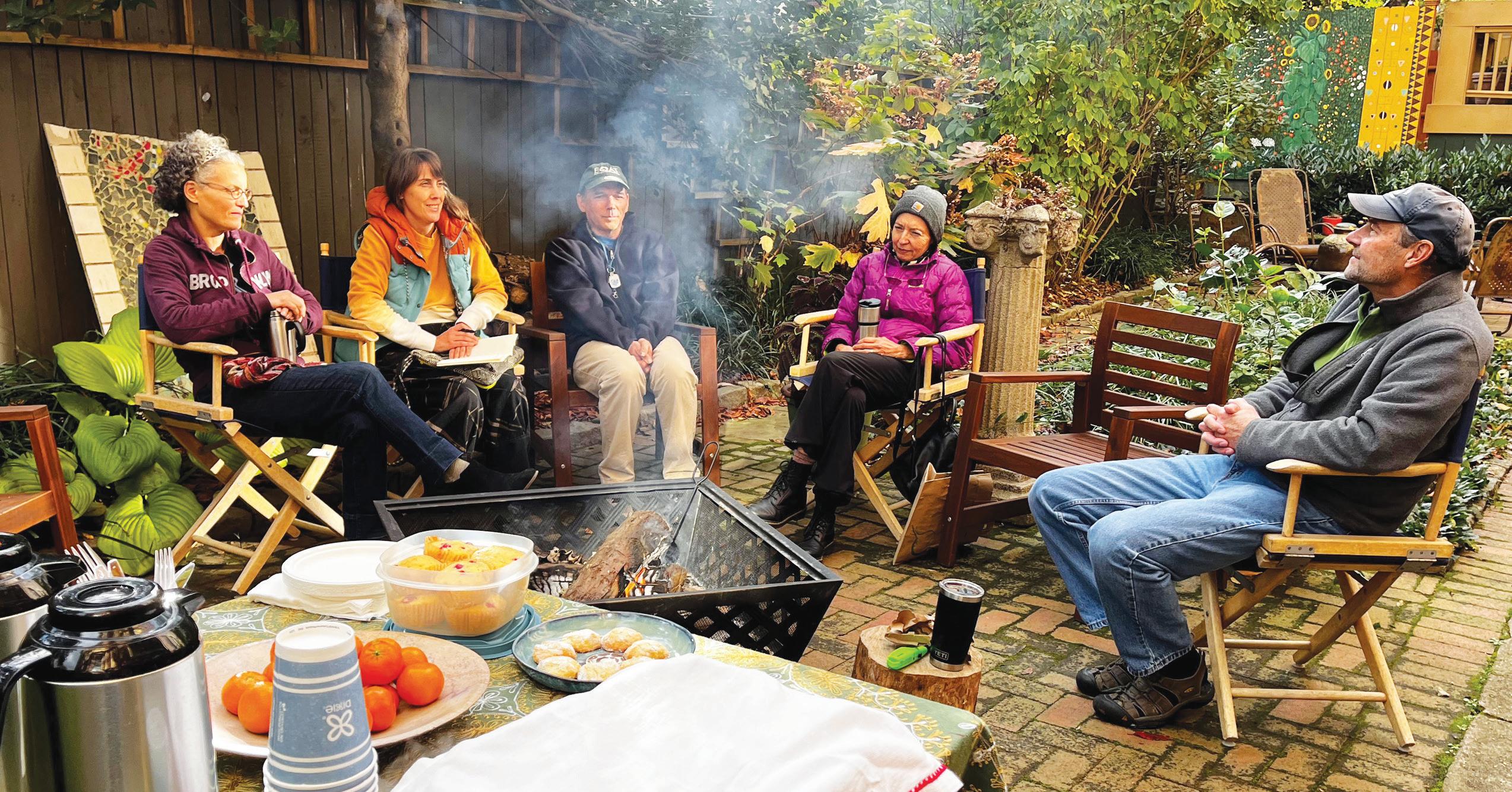
sider it. Each member is elected for a three-year term with a limit of two consecutive terms.
There are three required steps to become a candidate for the Board of Directors:
1. Attend a regularly scheduled board meeting as a guest. The next meeting is on Tuesday, Jan. 3 at 7 p.m., and the February meeting is scheduled for Tuesday, Feb. 7, also at 7 p.m. Contact our board administrator before attending. (boardadmin@ weaversway.coop)
2. Attend a virtual Run for the Board information session. They’re scheduled for Wednesday, Jan. 25 at 7:30 p.m. and Saturday, Jan. 28 at 10 a.m. Contact the Leadership Committee (leadershipcommittee@weaversway.coop), by Tuesday, Jan. 24 to RSVP.
3. Submit an application to run. Formal applications will be distributed after the January information sessions. Writ-
ten statements for the application are due by Tuesday, Feb. 28.
Board meetings are held monthly, usually on the first Tuesday of the month, starting at 7 p.m. Meetings are held in person, with the option for participating online. Time to socialize with the board, management and guests is built into our monthly meetings starting at 6:30 p.m.
At the meetings, we focus on sales trends in our stores, Co-op finances, staff compensation, member and staff surveys, member and board committee reports and strategic planning. Additional meetings may be called to address timely opportunities or challenges for Weavers Way. Board members are expected to attend each of our 11 regularly scheduled meetings.
As you can see, board service requires a generous time commitment. Board members are expected to use their skills, experience and interests to contribute to small-group projects and spe-
Committee
cial committees in addition to attending meetings.
Serving on the Board of Directors contributes significantly to the stability of our Co-op and to the variety of communities we serve. Yes, it is work. But it can also be rewarding, enlightening and fun. Please join us!
For additional information please email leadershipcommittee@weaversway.coop and visit www.weaversway. coop/board-elections.
December 2022 THE SHUTTLE 11
Is
2023
(Continued from Page 1) Leadership
photo courtesy of Cohousing Philadelphia.
A group of West Philly residents interested in establishing a cohousing community in the area gathered in Zami's garden to share food and conversation last month.
Putting an End to Gas Leaf Blowers in Our Neighborhoods
by Seth Lieberman and Anne Dicker, for the Shuttle
Do you ever pause on the street to admire the vibrant colors of our trees? How often is that moment of wonder disrupted by the roar and screeching of leaf blowers?
Destroying neighborhood peace is only the beginning of the harms that gas leaf blowers bring. They emit toxic gases, sicken the laborers who use them, and contribute significantly to climate change. That’s why the grassroots group has formed QuietCleanPhilly — with the support of West Mount Airy Neighbors — to ask Philadelphia City Council and the mayor to ban gas blowers in Philadelphia.
Banning the blowers aligns with Weavers Way’s commitment to environmental sustainability, as reflected in the Co-op’s mission and Ends. Recognizing the outsize harms that gas that gas leaf blowers cause, 170 municipalities have banned them. California, Seattle and Washington, DC are some of the entities that have already enacted such legislation.
James Fallows, who has written extensively about gas leaf blowers in The Atlantic and elsewhere, describes them as “vastly the dirtiest and most polluting kind of machinery still in legal use.” They use two-stroke engines that are powered by two kinds of fuel: “a slosh of oil and gas that spews up to one-third of its fuels as unburned aerosols into the environment.” These toxic emissions cause asthma, cancer and cardiovascular diseases.
Gas leaf blower noise can be annoying, but it can also present a more significant problem. Their low rumble penetrates solid walls and reaches 15 times more homes than a similar-decibel electric blower. This is risky, especially to children and those already facing hearing loss.
While these harms to neighborhoods are concerning, the damage done to laborers who regularly use these machines is even more distressing. Many landscape workers are immigrants who may have limited employment
choices and workplace protections. Emissions and noise from the blowers present risks to those who use them regularly. Given the lack of workplace protections many of these laborers face, gas blowers represent a pressing labor and racial equity challenge. We think it is urgent for landscape companies to transition to battery powered blowers in order to stop exposing vulnerable laborers to harm.
Lastly, the engines powering gas leaf blowers dramatically contribute to climate change. Testing has shown that just 30 minutes of gas leaf blower use contributes more hydrocarbon emissions than driving a pickup truck for 3,800 miles. That’s farther than the drive from Philadelphia to Juneau, AK!
We support those who choose to rake their leaves, compost them or leave them be. This is a laudable individual decision, but it does not provide an adequate solution to address the many leaf blowers already deployed across Philadelphia. We urgently need to make a significant change to how we deal with our leaves.
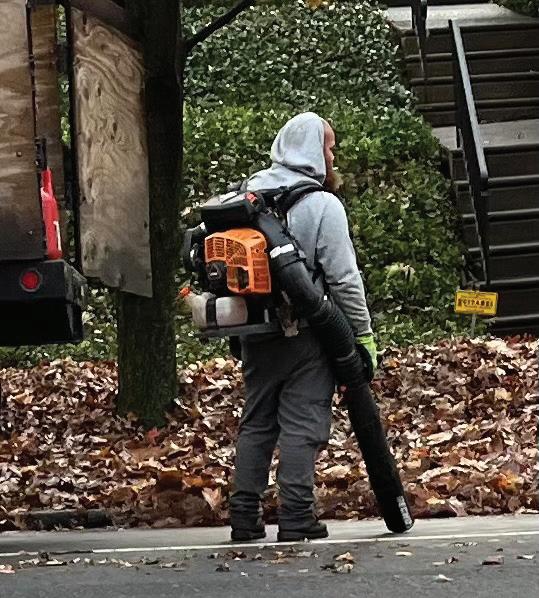
Fortunately, battery-operated leaf blowers are now ready for prime time. Thanks to the 170 municipalities that have already banned gas blowers, there has been remarkable innovation in the market for electric blowers. The Wirecutter section of The New York Times features glowing ratings of the best models, which demonstrate tremendous power with low noise and zero emissions. Because electric blowers are less costly to operate than gas ones, people will be able to recoup their investment over time. In addition, cities such as Washington, DC offer rebates to residents and commercial gardeners to ease the transition.
Because of sunk costs and inertia, and because most of the harms caused by gas blowers are experienced at a remove from those who pay for their use, the free market will not solve this problem on its own. Just as we are
Germantown’s Outreach is Humming with Workshops, Convos and More
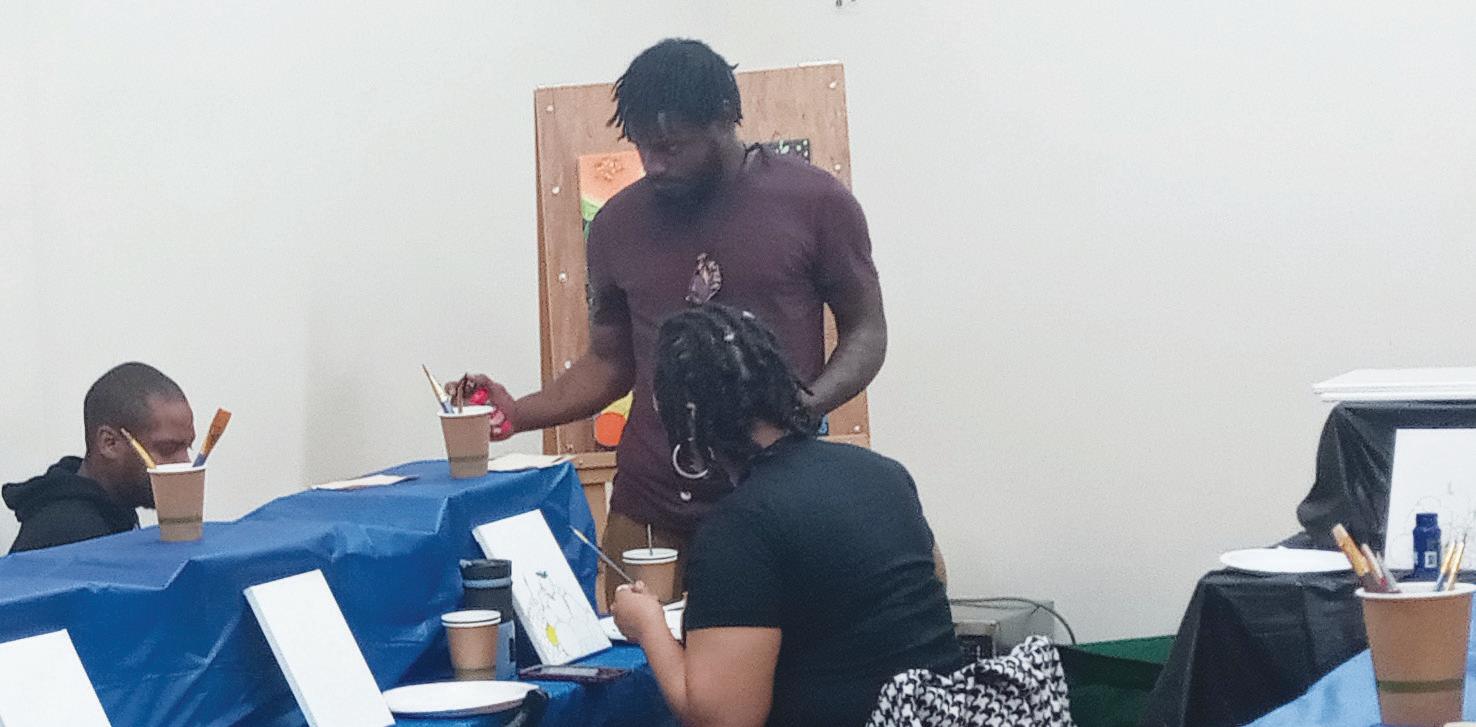
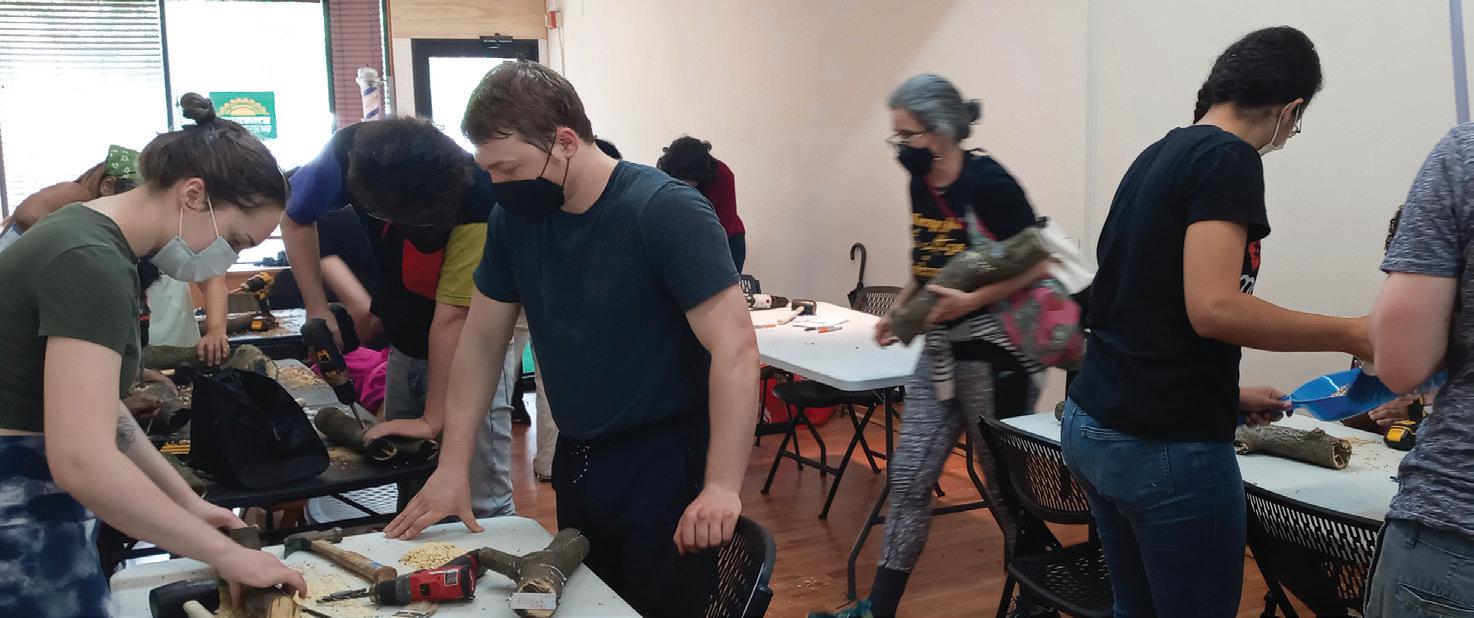
town store that has become our Germantown Community Outreach Office. It is intended to be a space where neighbors gather for various reasons. Currently, we host two workshops a month there. Recent events that took place in the space included a painting workshop, fall soup and fermentation demonstrations, and a special open-floor conversation with State Rep. Darisha Parker. We plan to continue hosting events through the winter. Possible workshops for 2023 include a monthly financial literacy class and a series on teas and herbal remedies.
We have also been able to reach the community by tabling at different events. We gave away samples of a delicious, healthy smoothie as well as farro salad at a community event hosted by the American Diabetes Association on Sept. 17. On Oct. 29 we gave out apples at the Germantown Community Day event hosted by Germantown Info Hub. During these events, we’ve also had important conversations with residents about the Co-op and the new store.
We've also engaged the community by hosting meet and greets with help from various organizations. We set up a plan with an organization. They spread the word to members and neighbors. We show up with food, answer questions and address their concerns. The meet and greets have helped skeptical residents get more comfortable with the idea of Weavers Way coming to their neighborhood. It has also given us a better idea of what Germantown wants from their Co-op.
We’re happy we’re coming to Germantown, and the community members we’ve heard from are generally happy to hear about the expansion. In the spring, we plan to host house parties and canvas in the neighborhood. If you’re interested in getting involved with outreach by hosting a house party, joining the canvas team, or sharing knowledge about a particular skill by leading a workshop, please reach out to me at any time: Cpoinvil@weaversway.coop.
accustomed to regulations in the automobile market, we will breathe easier knowing that we have taken steps to help safeguard our neighborhoods, our essential workers and our planet. Please join with us and sign our petition to ban gas leaf blowers at www.QuietCleanPhilly.org
Seth Lieberman is a member of Germantown Jewish Centre’s Green Team and runs Leadership Breakthroughs, a firm that develops scientific and medical leaders. Anne Dicker is a board member of West Mount Airy Neighbors and the co-leader of Mount Airy Tree Tenders. Both are longtime Weavers Way members and co-founders of QuietCleanPhilly.
(Continued from Page 1)
12 THE SHUTTLE December 2022
LET’S COUNT THE WAYS.
Why shop the Co-op?
CATERING.
photo by Karen Plourde
A landscape worker using a gas-powered leaf blower in East Falls last month.
photo by Camille Poinvil
Above, painting instructor Isaac Dickey oversees participants at his painting class on Nov. 29. Below, members gathered in the Germantown space for a class on cultivating mushrooms.
by Betsy Teutsch, for the Shuttle
Longtime weavers way members ellen benson and Allen Zaklad are community treasures. Their West Mt. Airy twin’s porch might resemble the others on the block. But walk inside and, just like that, you enter an enchanted kingdom.



Ellen’s own art, along with folk art she has passionately collected throughout her global travels, covers the walls, overflows the cabinets, dangles from the ceilings and spills out over every surface. Her focus on Central American art creates a tropical sanctuary for all things goddess.
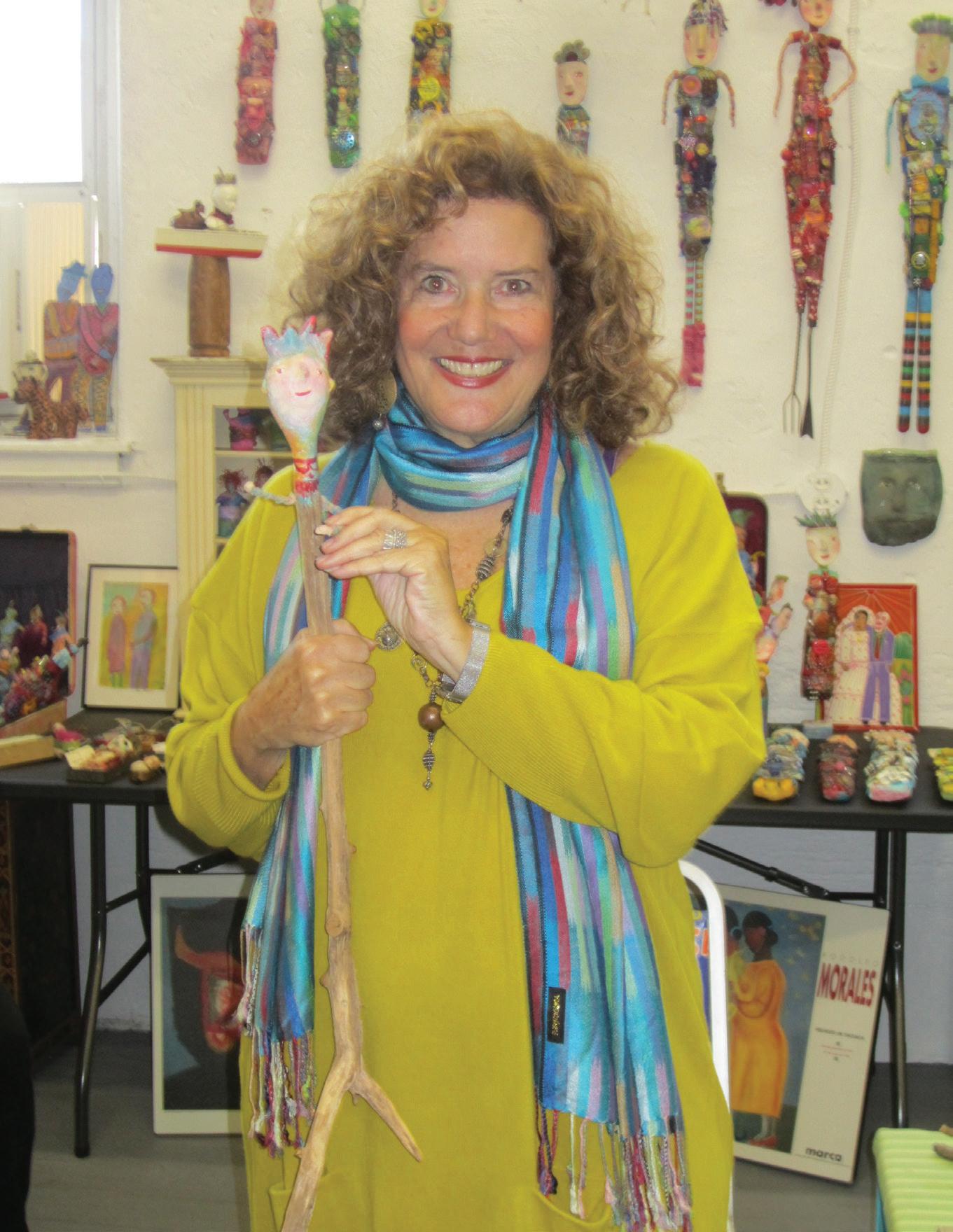
The size of Ellen’s passion for creating and collecting women’s art is equal to her big heart, full of empathy and compassion for the world’s indigenous women.
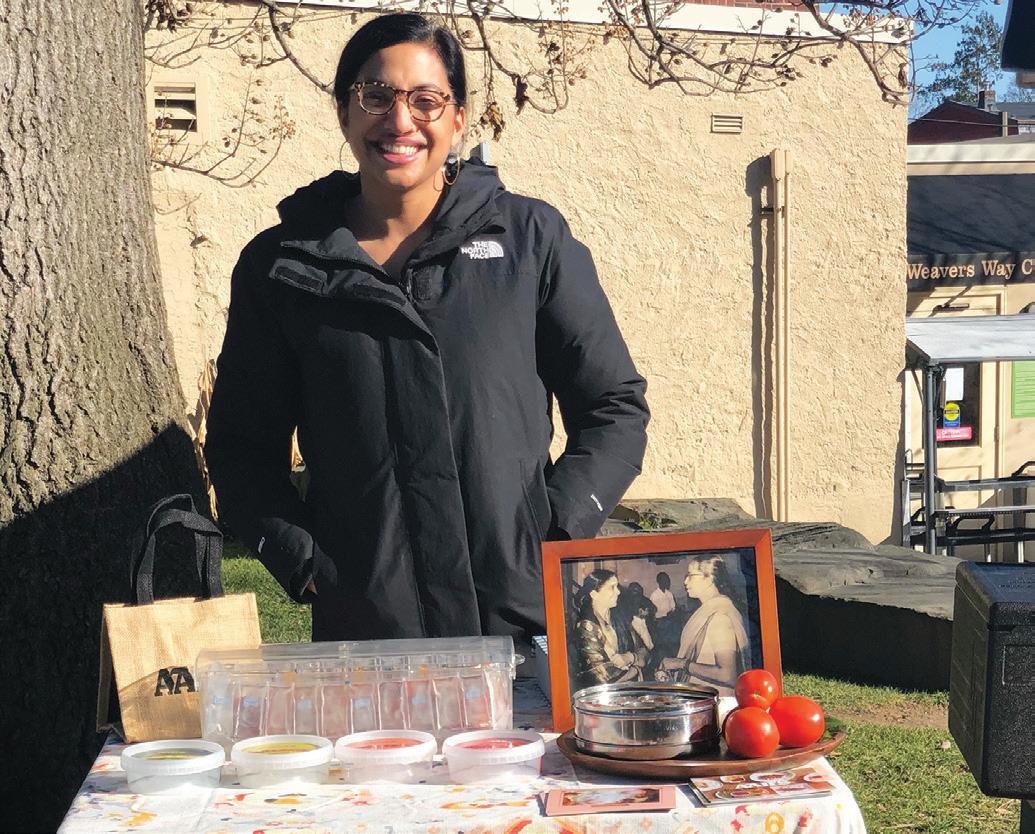
When she read in the Shuttle that we were starting up a local chapter of Together Women Rise (then called Dining for Women) to support girls' and women's grassroots empowerment initiatives in the Global South, Ellen was quick to join our Tuesday chapter. She’s always available to host a meeting; give the presentation about our monthly grantee; and share her upbeat, fun presence with our Rise community. She embraces the opportunity to help women and girls improve their lives, especially in regions where she has witnessed gender inequity up close.
She and her husband “Zak” have contributed generously to the Together Women Rise Annual Fund. This year, our chapters will strive to match their gift. As our four Weavers Way Together Women Rise chapters finish up our 11th year, we find that we have collectively raised more than $325,000. You read that right!
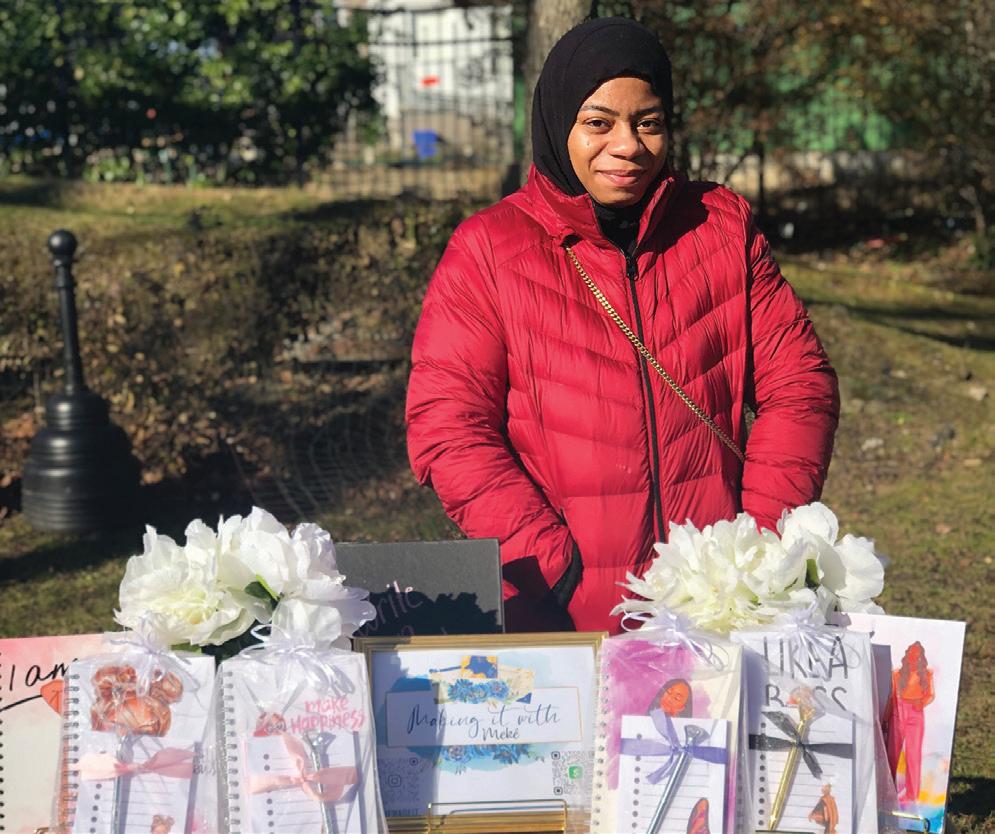
Art is Ellen’s third career. First, she utilized her master’s in social work to work with the elderly. After the buses ferrying her clients delivered them to the wrong residential settings once too often, she moved on to human resources and found herself happily working at Commonwealth Bank. She advocated for equal pay for female employees and successfully brought her outspoken mindset to the corporate world. “I always worked for win-wins,” she recalled.
Lucky timing and shrewd planning turned Ellen into a young faux retiree. She didn’t actually retire but was ready to become a fulltime artist. She had been active in the local arts and had traveled and supported artists. Now she could head off to Northampton to attend adult art camp with the Oiseaux Sisters, Susan Andrews and Carolyn Fellman, who are well-known mixed media artists.
Ellen and Zak were introduced by friends and ended up attending the same New Year’s Eve party. He was divorced; Ellen was a never married person in her late 50s. Their partnership is now nearly 20 years old.
Zak is a veteran therapist with a parallel career as a local Tai Chi instructor. He studies with Bill Phillips, who was a direct student of Professor Cheng Man-Ching, one of the first to bring it to the United States in the 1960s. Now Zak’s students also teach Tai chi. You may have walked past the classes they offer for free at Ned Wolf Park.
Ellen and Zak married for love, but not for Februarys. That’s when Benson jets off to Oaxaca, Mexico with a group of fellow artists to enjoy the local art scene and to support and promote the work of local indigenous master crafters. Zak does join her for part of the time.
No complete story of Ellen would fail to mention she is a pillar of the local dumpster diver scene. She is as proud of her skill with drills and blow torches as she is
CO-OP BASICS. BULK FOODS. PRODUCE. Member Benefits.
December 2022 THE SHUTTLE 13
Sustainable Meat & Seafood.
of her finesse at fishing out wonderful discards to reuse. Not only is she a community treasure, but she turns our trash into treasures, too.
Champion
the
Ellen and Zak, thanks for gracing our community with your presence.
Mt. Airy Artist is a
for
World’s Indigenous Women
Our holiday market on Dec. 10 at the Chestnut Hill store was a great success. Our vendors included: BRU energy drink, Aaji’s Lonsa, Mission Relief CBD products, Home Skillet linens and Making it with Meke’ journals. Market Holiday Snacks IN THE BACKYARD of Weavers Way Chestnut Hill Sat., Dec. 10 10am - 1:30pm
True Fabric Recycling Requires More Than Secondhand Shops
 by Anne Hylden, for the Shuttle
by Anne Hylden, for the Shuttle
According to a 2017 report published by the Ellen MacArthur Foundation, an organization devoted to promoting a circular economy, 99% of all the clothing in the world eventually makes its way to a landfill, an incinerator or the environment. This number includes the clothes we donate to secondhand stores, many of which end up in dumpsites in the Global South. It also includes clothing that is downcycled into cleaning rags or insulation, which will eventually become trash as well. Only one percent of what we wear is turned back into new clothes.

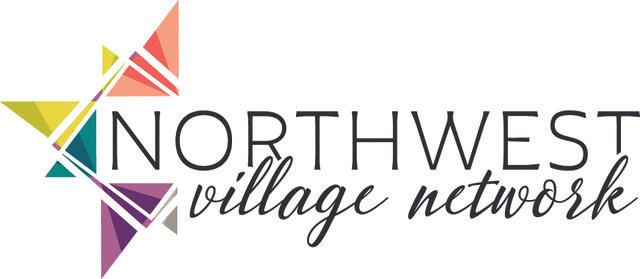
Globally, we create 100 million tons of textile waste each year, according to the BBC article "Why Clothes Are So Hard to Recycle," published in 2020. That's the weight of 2,000 Titanics. Imagine if we could repurpose that material into items of similar or higher value, so it never has to get thrown away. We would reduce waste, extract fewer resources from the Earth, and curb the fashion industry’s pollution impact. And we would be one step closer to a circular economy, where trash becomes a valuable input for manufacturing.
There are a few methods currently in use for recycling clothing in a way that retains its material value and converts it into new fabric. Unfortunately, they all require a highly pure feedstock — the industrial term for the stuff that goes into a production plant. Typically, the textiles that get recycled this way must be composed of more than 90% of one fiber type. But obtaining such purity is difficult when it comes to clothing.
"Think about what's in your closet. It's just filled with so many blends," said Pamela Retseck, the owner of Paper Chase (Diversified) of Woodstock, NY. Her company helps businesses find recycling solutions for their waste. She added that there are currently no commercially viable options for recycling blended fabrics but that researchers are working on the problem.
The Fundamentals of Fabric
Fabric is made of fibers, which come in two main types. Synthetic fibers such as polyester, nylon and acrylic are made from petroleum. They are essentially plastic, but thin. (In fact, polyester clothing is made of the same material as PET bottles.) Natural fibers come from plants or animals and include cotton, hemp, wool and silk.
All the above are materials known as polymers, which consist of long chains of repeating molecular units. For example, the polymer in cotton is cellulose, each unit of which is built from thousands of individual sugar molecules. Synthetic cellulosic materials include lyocell (formerly known as Tencel) and viscose (formerly known as rayon). They are made by chemically treating wood pulp — which contains lots of cellulose — and
extruding it into fibers to mimic cotton.
The most common mixed fabric material is a polyester-cotton blend. Since it would be impractical to pick the fibers apart one by one for recycling, scientists are turning to chemistry for solutions. They can utilize the different properties of the combined fibers to dissolve one but leave the other intact.
A 2022 review article in the academic journal Polymers summarizes many of the recent successes in this area. Possible separation techniques include breaking down the cellulose in cotton with enzymes, acid or special solvents. This creates either a cellulose powder or a sugary syrup that can be washed away from the polyester, which remains unchanged. Then the pure polyester can be melted and reformed, and the cellulose powder can become feedstock for lyocell. If the separation treatment breaks the cotton all the way down into small sugar molecules, that sugar can be burned for energy, fermented into ethanol or used to make bio-based plastics.
But while these methods work well in the lab, scaling them up for industrial recycling is a huge challenge ,according to Jack Payne, a graduate student at the University of Bath who studies plastic recycling methods. He explained that having large amounts of material makes it difficult to get everything mixed and heated evenly. In addition, textiles themselves are complex. Along with the prevalence of blended fibers, clothing also has tags and buttons that need to be removed, plus dyes and trace chemicals that could potentially ruin the process.
Can Fabric Recycling Be Profitable?
A few startup companies are working to take these lab-based separation techniques into the real world. Circ, which is building a pilot plant in Danville, VA, uses heat and high pH to break down the polyester in a blended fabric into small molecules, leaving the cotton as a solid. Worn Again Technologies, a UK company, plans to uti-
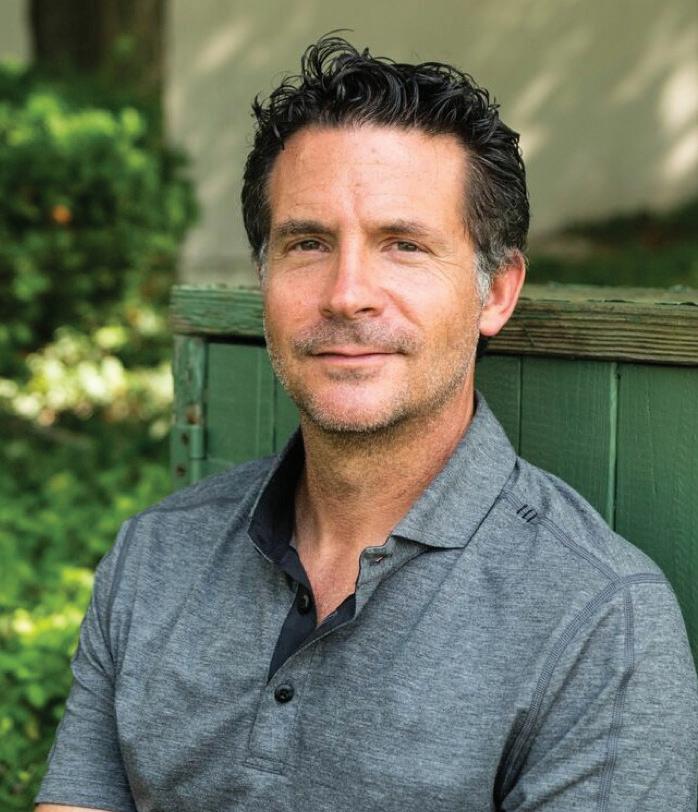
lize a solvent separation process for poly-cotton blends. And BlockTexx in Queensland, Australia is figuring out how to turn large amounts of clothing waste into recycled polyester and cellulose powder.
These companies hope that the technology they develop will move society toward a more circular future, but they are all still in the planning and building stages. Their first big challenge will be developing a process that can stand up to contamination, due to the composite nature of most clothing materials.
Their second big challenge will be to ensure that the process is profitable, which Retseck said hasn’t always been the case. “At the end of the day, the pellet or whatever they make is worth a nickel a pound; it cost them 30 cents a pound to do it,” she said. “The economics of it often do not work.”
Payne has ideas for making recycling more profitable in the short term. Chemists like him can turn polyester into new molecules, such as building blocks for drugs. This process could upcycle waste into products with higher value-added products. He sees chemical recycling as one tool in “a portfolio of waste management strategies” that will help get us to a circular economy. But this will require a mindset adjustment.
“If we're shifting to a circular economy perspective, then waste is actually a useful feedstock that we can do something with,” he said.
For her part, Retseck would like to see a mindset shift to “designing for the afterlife.” If we consider what will happen to a garment at the end of its use, we could create much better future recycling flows. For example, a brand called Napapijri created the Infinity Jacket, which is 100% recyclable because every component is made of one type of nylon. That includes the zippers, filling and embellishments, so that no separation, physical or chemical, is required for processing.
“It’s such a tiny bit,” she said of the Infinity Jacket. “But it’s the beginning.”
Finally, some policy adjustments, such as Extended Producer Responsibility, could make a huge difference. According to EPR thinking, manufacturers should bear the cost of collecting, recycling or disposing of the products they make. Maine, Oregon, Colorado and California have recently passed EPR laws targeting plastic and other packaging waste.
“I do feel the industries themselves have the responsibility of dealing with the stuff they manufacture,” Retseck said. “If you produce something, you do need to have an end-of-life solution for it, or we're just sending it back. Here, you're getting it whether you want it or not. You made it.”
Phone: 215-356-8061 Email: jfrankphd@gmail.com www.JeremyFrankAssociates.com
14 THE SHUTTLE December 2022 Emotional and Psychological Support and Wellness Certified Alcohol and Drug Counselor and Clinical Psychologist
FRANK
Associates
JEREMY
&
Zoom and Teletherapy available
Arts & Culture Social Justice Engagement Social Gatherings Film Discussions Community Connections C O N N E C T N o r t h w e s t V i l l a g e N e t w o r k o r g 267-571-9697 Ride Share J o i n u s a t o u r n e x t M e m b e r S o c i a l ! E N G A G E T H R I V E Seniors
A Happy Resolution for the Schuylkill Center’s Boy Scout Tract

 by Mike Weilbacher, Executive Director, Schuylkill Center for Environmental Education
by Mike Weilbacher, Executive Director, Schuylkill Center for Environmental Education
The schuylkill center for environmental Education is thrilled to announce that we have received a pledge for a generous gift from anonymous donors that allows us to fully preserve the 24-acre Boy Scout Tract in its entirety. We’ll place a conservation easement on the land that will protect it in perpetuity: The forest will never be subdivided, developed or even farmed.
The $3 million donation, the largest gift in the center’s 57-year history, is contingent on the easement, which will take perhaps nine months to complete. We will not receive the donation until this action is finished.
This puts a huge preservation exclamation mark on the story of the Boy Scout Tract. The land sits at the southeastern corner of Port Royal Avenue and Eva Street, across Eva Street from the Upper Roxborough Reservoir Preserve, and abuts Higher Ground Church International. It is a maturing forest that contains steep slopes and protects a portion of the Green Tree Run watershed. Back in the day, it was used by the scouts as a campground. It is physically disconnected from the center’s main holdings and has never been used for our programs over many decades. Because we are already stretched to manage the 340 acres we actively use, we have historically been unable to perform any maintenance on the site except for clearing downed and dangerous trees.
The tract was donated to us 40 years ago by one of our founders, Eleanor Houston Smith, as an asset to be sold if the Board of Trustees decided to do so. Over the last 50 years, two bites have been taken out of the property: one to a neighbor who lives in a historic home adjoining the parcel, and a 10-acre piece to the church in the 1980s. More than a year ago, we received a proposal from a conservation-minded family to purchase the property and place two homes and a barn on the site.
Given the request to consider selling the property — one we did not solicit — our board of trustees made the difficult but financially responsible decision to decline the first and only proposal that came our way. The trustees, all of whom are conservation-minded individuals, decided to release a Request for Proposals to seek other possibilities. The resulting RFP contained numerous conditions that sought to balance preservation with limited development, including protections for steep slopes and floodplains along with preservation of the community's historic character. This was not a decision to sell the land; it was only a decision to explore that possibility.
This past June, at a meeting of the Upper Roxborough Civic Association and the Residents of the Shaw-
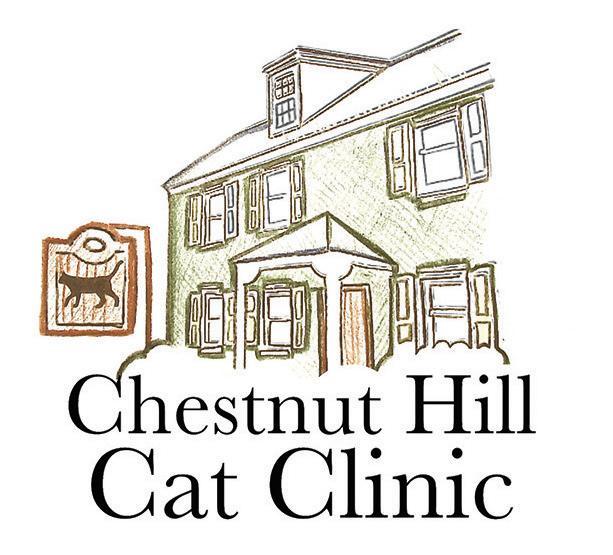
mont Valley, we unveiled our plan to release the RFP and were met by fierce opposition and widespread disappointment, as open space and subdivision are two of Roxborough’s hottest hot-button issues.
We sent the RFP out the next day, while also placing it on our website for anyone to read. I immediately started fielding questions from a variety of parties suggesting what they might do with the property, and to our delight and amazement, multiple offers came in that proposed to protect and preserve the property. So in September, we announced that we were suspending the RFP process to concentrate only on these offers.
The community held its breath. So did we.
Happily, of the several avenues we were actively pursuing, one stuck. We began discussing the preservation process with this donor’s representatives in late summer, and it has taken all this time to get to where we are now.
So the Boy Scout Tract — soon to possibly be christened with a new name (details forthcoming!) — will be added to the portfolio of the center’s protected open spaces. Our 340 acres of forests and fields are already preserved in perpetuity, and ours is the largest conservation easement in Philadelphia. In addition, in the mid1980s we sold 80 acres of Manatawna Farm on our western flank to the city to be merged into Fairmount Park.
With this impending easement, the center has now protected almost 450 acres of precious Roxborough open space. We’re proud of this accomplishment.
We’ll soon engage our board, staff and other stakeholders in a long and thoughtful process as to how can we best leverage this gift to its maximum advantage. We

want to invest in our staff (our most important resource) along with our aging 1960s visitor center, our wildlife clinic, our programs and of course our land, which has been battered from the trifecta of invasive plants, overbrowsing deer and climate change. It will take many months to work through these details — and many months before we receive the donation.
Because Natural Lands, a highly respected preservation nonprofit, holds the easement on our 340-acre main campus, we’re also pleased to announce we’re working with them on this new easement. We’re hoping to sign it sometime in 2023, likely late spring or early summer.
When we do, we’ll celebrate this accomplishment with our neighbors and community. In the meantime, please know that the Boy Scout Tract is heading toward the happiest of resolutions. And no one is happier than our family here at the Schuylkill Center.

December 2022 THE SHUTTLE 15
215-247-9560 8220 Germantown Avenue www.chestnuthillcatclinic.com Taking care of cats and their people for over 35 years.
Locally Grown
llustration by Alli Katz
by Ruffian Tittmann, Executive Director, Friends of the Wissahickon
n one of her 2018 columns in the philadelphia
Inquirer, Helen Ubiñas asked readers to name their place — “where you go to feel like the fullest and the best version of yourself.” For her, that place was “my beloved Wissahickon.” And she’s not alone in her deep feelings for Wissahickon Valley Park.
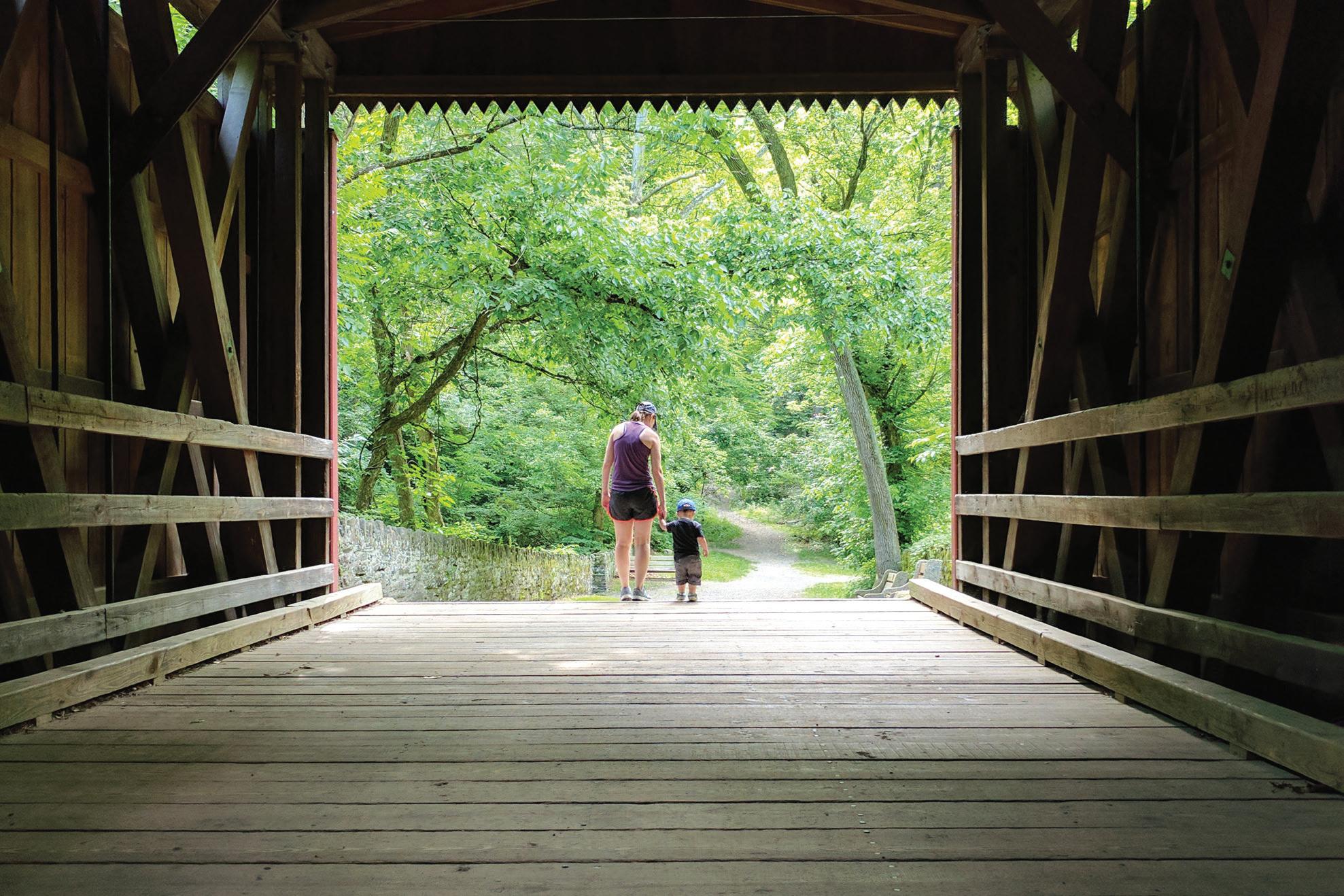
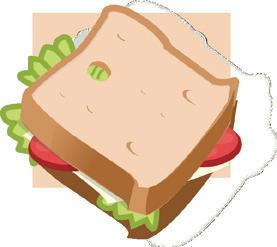
Obviously, the two million-plus visitors to the Wissahickon each year come to recreate, enjoy fresh air, explore nature and escape the noise of the city and their everyday lives. But I believe people have a unique relationship with the park. After all, how many parks have journals where you can write love letters to the Wissahickon?
It seems everyone has a story about the park as an important part of their family histories or memories. It’s been the site of first dates, engagements and weddings, as well as a favorite destination for generations of families to spend more time together. It’s been a source of healing for illness or grief. We all were especially grateful for the park’s open spaces during the pandemic lockdown.
We at Friends of the Wissahickon understand the indelible role the park plays in the lives of community members, as well as our own. That’s why we work tirelessly to keep it beautiful for everyone to enjoy.
It’s also why FOW’s field staff and volunteers are out in the park nearly every day, restoring vital habitats, equipping the park for continued growth, and improving access and services. Well-maintained trails, free of downed trees, invasive plants and trash, are the mark of our work. If you see fresh native plantings, bridges, fences and other structures in good repair, and the creek free of litter, it’s because of our staff, volunteers and community partners.
FOW’s “to do” list is ongoing, but we can keep our stewardship work going because of your support. During this season of giving, we invite you to join our continuing efforts to conserve our unique natural retreat for generations to come. If you’re not a member, please consider becoming one soon (and gain a tax deduction) or give a gift of membership, maybe tucked into a Wissahickon-
themed tee shirt or hat (available through the Shop tab on our website). You can also donate and support the Wissahickon at fow.org/membership-donations.
Other ways you can give to the park include volunteering; practicing stewardship principles and sharing them with family; advocating for the watershed and the environment. Find more on how to donate your time in support of the Wissahickon at fow.org/volunteering/.
Friends of the Wissahickon was founded in 1924 with a mission to “conserve the natural beauty and wildness of the Wissahickon Valley and stimulate public interest therein.” Go to YouTube, type “Friends of the Wissahickon” in the search bar and click on “Intro to FOW
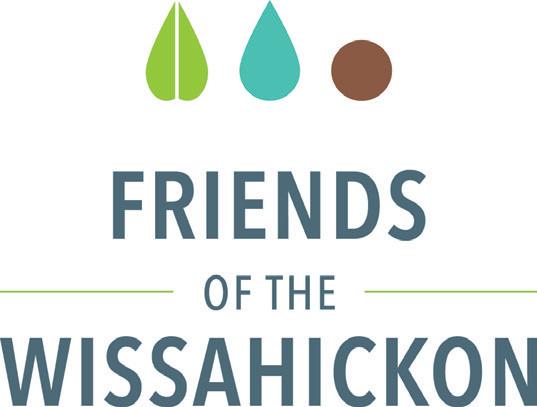
Exhibit Highlights Pastorius Park
The chestnut hill conservancy’s streetscape exhibit tracing the evolution of Pastorius Park from proposed traffic circle to beloved public park continues in the Germantown Avenue storefront of Kilian Hardware through Dec. 31.
“Pastorius Park — the Park that Almost Wasn’t” is running in place of the conservancy’s annual “Night of Lights” streetscape exhibition. It was created by landscape architect and historian Rob Fleming and includes several rarely seen drawings from his research in the Olmstead Archives. This year marks the 200th anniversary of pioneering landscape architect Frederick Law Olmstead’s birth.
Panels will showcase the evolution of the park, named after Francis Daniel Pastorius, the German-born Quaker who founded

Germantown in 1690. The final panel illustrates the sustained efforts by Friends of Pastorius Park to restore and replant the space according to the final landscape design created by noted landscape architect Fred Peck in the early 1930s.

The exhibit is sponsored by BMT Wealth Management, Bowman Properties, SoMD Architects, Nottingham-Goodman Group, Dennis F. Meyer Inc., Millan Architects, George Woodward Co., Pure, Shechtman Tree Company, Friends of the Wissahickon, Sivel Group, MIS Capital LLC, and John B. Ward & Co.
Kilian Hardware is located at 8450 Germantown Avenue at the intersection of Highland Avenue in Chestnut Hill.
16 THE SHUTTLE December 2022 Show Your Love for the Park Through Gifts, Donations and More
LOVE PEACE SANDWICH 1 2 3 4 5 6 7 8 9 10 FREE Buy 10 Weavers Way deli sandwiches and get the 11th free! Pick up a Weavers Way sandwich loyalty card from the cashier. Buy 10 and the 11th is on the Co-op! See card for details. Hansell Contractors, Inc. Builders - Historical Restoration - Fine Carpentry Energy Conservation - Architectural Design Services HansellContractors.com Office: 215-277-1540 Fax: 215-277-1390 Lic.# PA022176 EPA Lead Certified
I
2021” to watch a video that encapsulates why this mission has and must continue to live on, with all our support. On behalf of all of us at FOW, we wish you and yours a joyous, healthy and peaceful holiday season.
photo by Kevin Gilbert
Visitors of all sizes enjoy crossing the iconic red covered bridge at Wissahickon Valley Park.
Courtesy of Chestnut Hill Conservancy
An illustration of the double roundabout proposed for the site of Pastorius Park in 1913.
by Sandra Folzer, Weavers Way Environment Committee

know you’re diligent about carefully placing glass, plastic and paper in recycling bins. But it’s time you learned the truth. Philadelphia hasn’t recycled half of its recyclables since October 2018; the other half is burned. So while recycling makes us feel good, it may not be helping the environment.
China accepted our recyclables until 2018, when they started requiring materials to be 99.5% pure. According to a July 12 article in Billy Penn, Philadelphia’s contamination rate last spring was 23%. Philadelphia went from making a profit of $67 a ton for its recycling in 2012 to having to pay $105 a ton to get rid of it in 2019, according to a January 2020 article in the Philadelphia Inquirer. Today, the United States sends recyclables to Bangladesh, Laos, Ethiopia and Senegal, where lax environmental laws and cheap labor make it possible, according to a June 2019 article in The Guardian. By sending recyclables elsewhere, we are just moving the problem and causing pollution elsewhere.
Recycling Then and Now
In 1981, Woodbury, NJ became the first city to offer curbside recycling, according to Smithsonian magazine. By 2006, there were 8,660 recycling programs in the United States. The innovation of single-stream collection made it easier for residents to recycle, but by putting all potential recyclables together, people got lazy and put in “wishful” items which couldn’t be recycled. Sometimes, recyclables were not cleaned sufficiently, which contaminated other items and caused all of them to be sent to the landfill.
Adding to the problem is the increase in the amount of waste Americans produce. In 1960, Americans averaged 2.68 pounds of garbage each day, according to statistica.com. By 2017, the average had nearly doubled. Currently, we produce more waste than any other nation, according to a 2012 Fact Sheet from the Environmental Protection Agency. And the amount continues to grow.
In Philadelphia, WM, which services the Northeast and Northwest portions of the city, claims they recycle about half of the recyclables and discard the rest. Those areas are known to have cleaner recyclables than other parts of the city.
Covanta services the rest of the city. They take recyclables to their plant in Chester, where they are burned and used to provide energy. Covanta claims they have diverted half a billion tons of waste from landfills. Their web page states “… we feel passionate about fostering environmental justice…”; yet, their incinerator is in Chester, a densely populated community, 71% of whose residents are Black.
Some believe the winners are the nation’s largest recyclers, (WM and Republic Services), who are landfill owners. Recycling for them is a “loss leader,” which they do to get a municipality’s garbage business. Some municipal leaders are wary of companies who control virtually every aspect of recycling and waste. Some believe it is better to incinerate trash that produces energy, but is the resulting pollution worth it?
Besides, we’re never quite sure what happens to “recyclables.” In 2021, the UK’s largest supermarket, Tesco, advertised a new initiative to recycle soft plastics, like plastic wrap and bags. To learn where the plastic was going, Bloomberg reporters put digital trackers on three items, which went on a 2,000-mile journey from London to Poland and Turkey.
In Guiyu, China, the “electric waste dump of the world”, over 10 heavy and poisonous metals were found in the ground and water supply by Greenpeace due to the massive amounts of computer monitors, keyboards, cellphones and other e-waste they take in from other countries. The residents tear apart the electronics to retrieve the small amount of copper wiring and other materials that can be reused or sold.
The Case for Ending Recycling
The city commissioners of Deltona, FL voted to end curbside recycling in 2019 because “the reality is that not much was actually being recycled,” according to former mayor Heidi Herzberg. In Memphis, TN, Republic Services stopped accepting single-stream recycling from commercial and institutional sources in 2018 due to high rates of contamination, according to the Memphis Daily News.
Few of us consider the amount of energy and waste that occurs when we “recycle.”


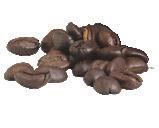

We use large amounts of water to clean items which might be destined for the landfill.

We use fuel to drive extra trucks to pick up the recycling and much more if we send it out internationally, which causes pollution. We may be using more resources than we gain by recycling.
I fear that recycling gives people permission to buy plastic and other products, thinking they are not adding to the landfills. Call it guilt-free consumption. If there were no recycling, would people consume less?
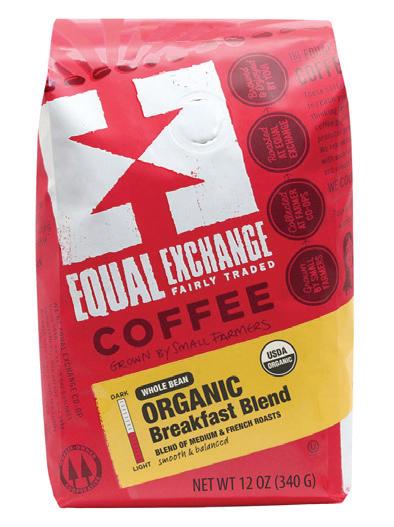
Some argue that we must recycle or run out of space in landfills. According to the website All Things Nature, some experts say there is currently enough landfill space in the United States to hold another 100 years’ worth of trash. However, it’s difficult to say how many years it will take for landfills in certain areas to reach capacity and what should be done about that.
Looking to the Future
J.P Mascaro & Sons, a waste removal company based in Audobon, Delaware County (?) has a facility, TotalRecycle, in Berks County which claims it can recycle anything. The facility sits on 14 acres and is supposed to look more like a resort than a recycling facility, according to its website.
The facility aims to recycle 700 tons of materials a day, which sounds good. However, Mascaro received a $2.6 million grant from Materials Recovery for the Future, an industry-sponsored research collaborative based in Washington, DC. They were chosen to demonstrate the viability of processing flexible plastic packaging —and the pilot research was funded by Nestle, Walmart, Chevron, Phillips, Dow and the American Chemical Council, among others, who all play some role in the production or sale of plastic.
A Texas-based petrochemical company, Encina, is proposing a $1.1 billion facility to be built in Point Township, Northumberland County. It would supposedly process 450,000 tons of plastic each year to extract petrochemicals, which is known as “advanced recycling.” In truth, plastic processing causes significant environmental problems, including

the burning of chemicals, which causes pollution and produces massive amounts of hazardous waste.
In addition, plastic processing is not economically viable. An investigation by Reuters in July 2021 found that plastic processing plants that opened in recent years have been shut down and that their plastic recycling programs have been curtailed or delayed. Encina would be using untested technology, and they refuse to give any details about their process, claiming proprietary technology, according to press releases put out this fall by the Clean Air Council. They say it is safe but ask for exemptions from existing environmental regulations. To cover the $1.1 billion cost, they may ask for taxpayer subsidies. The CAC has challenged their request for a permit waiver. Despite potential pollution and the proven failure of similar projects, the plastic industry is likely to push for this facility to be built in order to justify more plastic production.
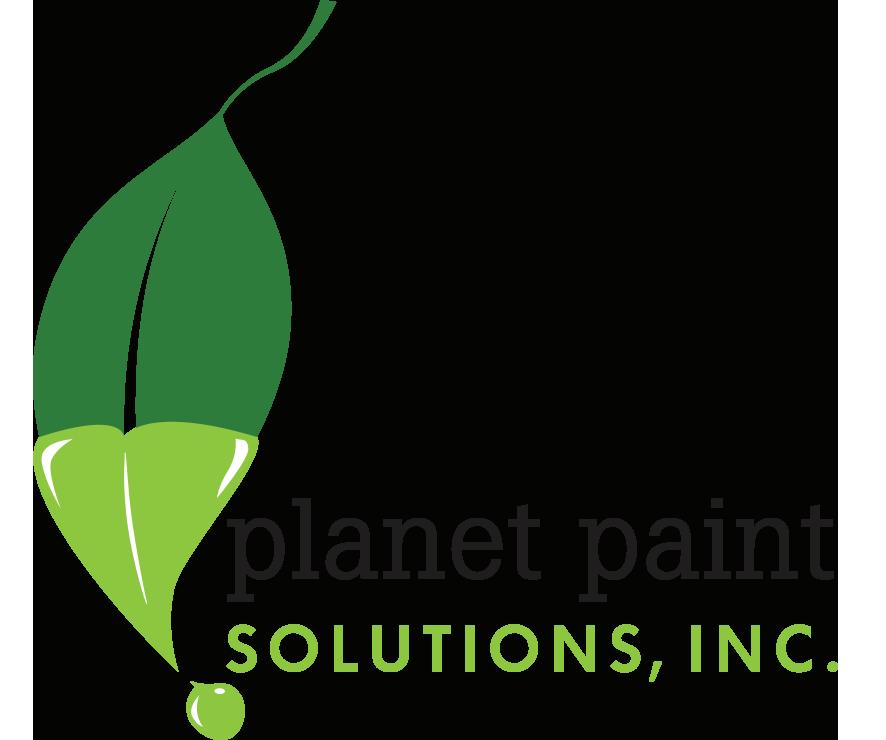
Depressed? Here’s some good news: Earlier this year, two young inventors, Reiten Cheng and Swaleh Owais, released Polyformer, a machine for converting plastic PET bottles into a functional filament for 3D printers. Even better, they released their design under an open-source license, making it available to anyone. And most of the machine’s parts are printable.
In summary, I believe we should stop single-stream recycling because so much is not recycled. If the city is paid for cardboard and cans, both tin and aluminum, then it should collect only those items. “Recycling” plastic gives people a false sense of security to buy freely, and the cost of trucks and fuel and the amount of water used may not justify the meager gains. Instead of focusing on recycling, let’s create less waste, especially less plastic waste.
December 2022 THE SHUTTLE 17 Environment Committee Is It Time to End Single Stream Recycling?
Grant Fox Contracting 215-771-2713 Custom Renovations • Fine Cabinetry Old House Renovations and Repairs Kitchens • Baths • Additions Over 25 Years of Experience Co-op Member Grant@GrantFox.biz Interior/Exterior Painting 35 Years of Professional Experience Locally owned and operated Schedule your free estimate Visit us online: planetpaintsolutions.com 215.948.3747 Lead Paint Certified Contractor. equalexchange.coop Fair Trade & Equal Exchange Packaged Coffees • Crafted with care • Sourced directly from smallscale farmers MEMBER BENEFIT notary service BY APPOINTMENT: 215-843-2350 x119 or notary@weaversway.coop ANOTHER GREAT REASON TO JOIN. I
Suggestions
by Norman Weiss, Weavers Way Purchasing Manager


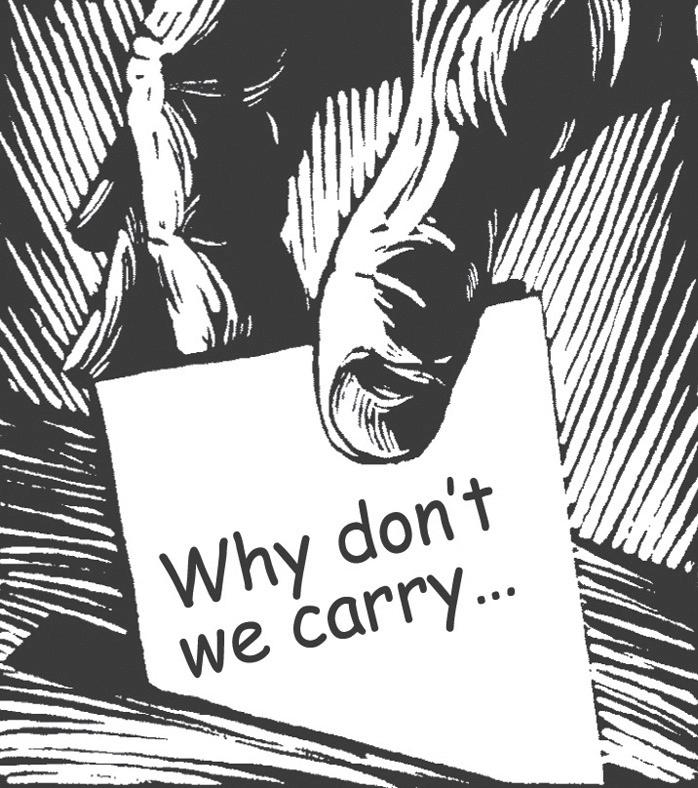
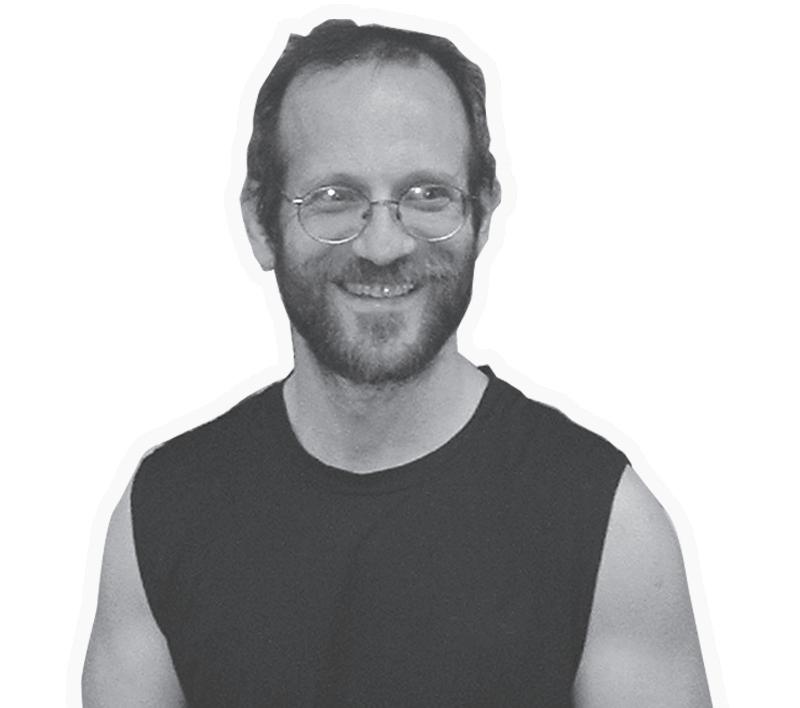
Greetings and thanks for writing. Email suggestions to suggestions4norman@weaversway.coop. As usual, suggestions and responses may have been edited for brevity, clarity and/ or comedy. In addition, no idea, concept, issue, remark, phrase, description of event, word or word string should be taken seriously. This also applies to the previous sentence.
Have you ever started an email, letter, memo or other form of written communication with “I am writing to…..?” I think this is another example of unnecessary words and syllables. The reader is already reading what you wrote, so it’s obvious you were writing. There is no need to write “I am writing to…”
While I’m thinking about writing, ever wonder why the Ten Commandments were chiseled on stone tablets instead of something more portable and convenient like parchment? Did God forget to bring a pencil? I know the commandments were considered important and valuable and needed to be recorded on a durable media. But chiseled stone doesn’t seem like the best choice when it comes to transport, especially for a group with presumably limited resources wandering in the desert.
Wandering in the desert involves a lot of walking, as do many of the jobs in our stores, warehouse and farms. There is still a lot of manual labor in the food system, and in consumer-packaged goods in general. Even with robotics and automated factories and warehouses, most CPG ends up in a box handled by a human somewhere in the supply chain.
Surprisingly, or maybe not so much, the world’s largest CPG company is not a food or household item company like Nestle or Procter & Gamble or Coca-Cola. Rather, it’s AB InBev, a beer company, which is probably a reflection of our priorities as a species.
suggestions and responses:
s: “Hello, I was writing to ask if the Coop at Chestnut Hill might start carry-
ing PG Tips Tea. This is the most environmentally friendly tea I have found. They come in plastic-free paper boxes and the tea is not individually wrapped; this dramatically reduces waste. It is also sustainably harvested, high-quality tea. RIght now, I have to go to other grocery stores to get this. If the Co-op carried it, I'd be able to only shop at the Co-op! And I'm sure other customers would like it. Thank you!
r: (Norman) Hi Carolyn. I’m showing we stock this at all three stores: PG TIPS PYRAMID BLACK TEA BAGS 80 CT. I’m copying James, our Chestnut Hill grocery manager. He can tell you where to find it.
s: “I like the Wild Planet line of tinned fish. Can we keep it in stock and get more varieties?”
r: (Norman) We’ll keep it in stock and consider more varieties. However, you should know there is a major problem with the term “tinned fish” as it is unlikely there is actual tin involved. Hence, it’s yet another lie of our modern age. (Cans were once made of tin, but those days are long gone, although some modern cans have a thin coating of it.) Tin cans were originally conceived to supply Napoleonic and other armies with food that could be carried by soldiers without spoilage or much container weight.
The practice of using thin metal to can food became highly popular, as you can see in any grocery store. Perhaps describing food in cans as “tinned” once made sense, but it is now an obsolete term and should be relegated to history. In addition, canned tomatoes

18 THE SHUTTLE December 2022 Norman Says: Email your suggestions to suggestions4norman@weaversway.coop Read SUGGESTIONS by Purchasing Manager Norman Weiss every month in the Shuttle. COMPLETE MASONRY SERVICE Flagstone, Brick & Stone Pointing JAMES G. CARDAMONE 215-887-9323 GLENSIDE • Concrete Work • Basement Wall Plastering & Waterproofing • Chimney Repairs • Walkways & Patios • Retaining Walls • Stucco • Glass Block Windows • Ceramic Tile Over 25 Years Experience • Clean Work Area • Fully Insured & Free Estimates PA# 060401 All Calls Returned jamescardamonemasonry.com LOCKSMITH FRED’S MOBILE LOCK SHOP “A COMPLETE LOCK SHOP ON WHEELS” BONDED & INSURED Since 1975 • ON TIME AND RELIABLE • OWNER OPERATED 215-483-1302 Serving all of Chestnut Hill & Northwest Phila. 215-628-4540 Serving all Montgomery County 215-817-6166 Cell Phone EMERGENCY SERVICE SECURITY LOCK INSTALLATION • COMBINATION CHANGES ELECTRONIC LOCKS • DECORATIVE HARDWARE SAFES SOLD AND SERVICED Bonded & Insured Ask about our One-Key Convenience for all your locks! WE ACCEPT (Continued on Next Page)
Wissahickon Landscape Design Brian Ames, Certified Horticulturalist & Arborist Complete Garden Design/Build/Maintain Creative Solutions Tree Care 215-681-2436, wissatree com 215-843-0815 HOUSE AT POOH CORNER where learning comes naturally Teri DiCesare, M.Ed. INFANTS • TODDLERS • PRE-K Visit our website: www.houseatpoohcornerdaycare.com Over 40 years of quality care
Voluntary and Open Membership Democratic MemberOwner Control Member-Owner Economic Participation Autonomy and Independence Education, Training and Information Cooperation Among Cooperatives Concern for Community Voluntary and Open Membership Democratic Member Owner Control Member Owner Economic Participation Autonomy and Independence Education, Training and Information Cooperation Among Cooperatives Concern for Community 1 2 3 4 5 6 7 Voluntary and Open Membership Democratic Member Owner Control Member Owner Economic Participation Autonomy and Independence Education, Training and Information Cooperation Among Cooperatives Concern for Community 1 2 3 4 5 6 7 Voluntary and Open Membership Democratic Member Owner Control Member Owner Economic Participation Autonomy and Independence Education, Training and Information Cooperation Among Cooperatives Concern for Community 1 2 3 4 5 6 7 Voluntary and Open Membership Democratic Member Owner Control Member Owner Economic Participation Autonomy and Independence Education, Training and Information Cooperation Among Cooperatives Concern for Community 1 2 3 4 5 6 7 Voluntary and Open Membership Democratic Member Owner Control Member Owner Economic Participation Autonomy and Independence Education, Training and Information Cooperation Among Cooperatives Concern for Community 1 2 3 4 5 6 7 Voluntary and Open Membership Democratic Member Owner Control Member Owner Economic Participation Autonomy and Independence Education, Training and Information Cooperation Among Cooperatives Concern for Community 1 2 3 4 5 6 7 Voluntary and Open Membership Democratic Member Owner Control Member Owner Economic Participation Autonomy and Independence Education, Training and Information Cooperation Among Cooperatives Concern for Community 1 2 3 4 5 6 7 International Co-op Principles
are not called “tinned tomatoes,” nor are canned olives called “tinned olives.” “Tinning” still does have accurate uses. For example, when you solder something, as in electronics or metal fabrication, you first “tin” the soldering iron tip — dripping a little solder, which contains tin, on the tip.
Fish in a tin never had tin attached to it, so I don’t see how it’s “tinned” anyway. This is one of many things in life that is difficult to understand if you tend toward literalism.
s: “Is there something that could be done to make it possible to unwrap plastic-wrapped cheese in a way that preserves the integrity of the plastic? I often try to do this, but the labels are soo sticky, I rarely manage to salvage the plastic wrap. It seems that if less sticky labels were used, it would be possible to remove them without damaging the plastic. Thanks for your consideration and for the great Chestnut Hill store.
r: (Jess) There is not a way to preserve plastic wrap with a label attached. I would recommend investing in some of our silicone-based Stasher bags. They’re great for storing unwrapped pieces of cheese for prolonged use. A more affordable alternative is to use waxed paper and tape at home. Glad you like our Chestnut Hill store.
(Norman) We don’t have a lot of choice with the labels. For weighed items, we (and most supermarkets) use scales that print on adhesive-coated label stock, and there is not much choice in the market. That strong adhesive is the same reason you see scale labels rubber-banded to containers in our Container Refund Program. Once a label is attached to a package, it’s too difficult to remove it to allow re-use of the package.
s: “I have been wondering why the Co-op has decided to change its food containers from those that are a #1 to those that are #5. The #1s are usually recycled, but the #5s are not. I think there should be member input before a decision like this is made. I recycle my plastic endlessly and I have a whole cupboard full of containers. Eventually, I have to throw them out. It would be great if there was a way to give some back to the Co-op or have products put in our own containers. We need to think outside the container.
r: (Norman) We appreciate your concern and you writing about it. We switched because the #1 containers were costing us around 60 cents per container, which we decided was too high a price for us to either absorb or pass on. The current containers are under 30 cents each. In addition, during some recent periods we struggled to find containers of any kind at a reasonable price and had to switch brands about four times. Our info about plastic recycling in general is that not much plastic is actually recycled, and the plastic containers that are recycled are mostly water and soda bottles. (Editor’s Note: See Sandra Folzer’s Environ-
“
“
ment Committee column on p. 17 for more info on this subject.) Even those are “downcycled”, are not fully used to remake new containers, because new containers need to have some virgin plastic in them. This is different from materials like aluminum, which can be 100% recycled into new containers (although mining and producing aluminum has its own set of environmental issues).
The main way we are trying to reduce plastic use is through our CRP program, in which items are sold in refillable plastic or glass containers for which shoppers pay a deposit and return them. We then send them out to be washed and refill them. This is happening with a few items and departments for now, but the program has been expanding.
Alas, the days of soliciting member input before these kinds of operational and financial decisions are made is long past. Mainly, we use feedback like you’ve provided. We’ll keep an alert out for when #1 containers come back down to a reasonable price, since there’s some chance those containers will get recycled.
If you look around online, you can find stories about plastic recycling being a bit of a scam from the outset.
It was basically a greenwashing plot by the plastics industry, which knew what it was producing could never be truly recycled. Our best hope for plastic reduction is a combination of consumers being more willing to bring their own containers and fill them, and for manufacturers to find alternatives to conventional plastic, which some are doing.
FYI, for a variety of reasons, not much glass gets recycled these days, either. It’s a little ironic that the material that is getting recycled a lot is corrugated cardboard, mostly due to Amazon using so much and cardboard being easy to recycle. In fact, the fibers hold up well enough through the process that it can be recycled between five and seven times and can be made into cardboard again, along with other paper products.
s: “My family has been a longtime member of Weavers Way, from the time of Liz Lovely cookies. I was about to ask that you stock those cookies again, but then I read an article in the Burlington Free Press from 2018 that explained why they were no longer in business. Oh well... no more Liz Lovely. Thank you for all your work!
r: (Norman) Wow, I forgot all about Liz Lovely cookies. I remember them being rich, soft, large and sweet, with layers of texture and good ingredients. I forgot they had a Philadelphia connection, although I vaguely remember we dealt directly with them in the beginning.
As a native Philadelphian, I take issue with this part of that article: “"We realized we needed a bigger bakery," Scott said. But they didn't want to build it in Philadelphia, which Scott described as a "rough scene," not in line with the couple's vision for their lives and their company. "We were more aligned with the values of Vermont," Scott said. "It didn't seem like Philadelphia understood us."
Hmm, this sounds a little off when you consider that William Penn preached tolerance and Philadelphia is derived from the Greek terms“phílos” (beloved, dear) and “adelphós” (brother, brotherly). Certainly, the cheesesteak entrepreneurs did not find Philadelphia lacking in understanding.
s: “Field Day ranchero beans are the bomb. I placed a special order for a case at Mariposa Food Co-op when I first moved here from New Mexico and lived in West Philly. They subsequently started keeping them regularly stocked. I bet they’d do similarly well at Weavers. And if you don’t stock Jersey Fresh crushed tomatoes from Common Market, please consider them, too!
r: (Norman) We do stock the ranchero beans at our Chestnut Hill store and will consider them for Mt. Airy and Ambler. Probably this will come down to space availability in Mt. Airy. Like Mariposa, any of our stores can easily order you a case, and you'd save 10%. We'll think about Jersey Fresh tomatoes, too. Thanks for the suggestion.
s: “If the Eagles get to the Super Bowl, will Weavers Way participate in any way?”
r: (Norman) Yes. Weavers Way is the only food business developing recipes for fried eagle wings. We found a supplier for naturally raised eagles, which are sort of like pasture raised cattle. The eagles are allowed to fly around the sky up to the limit of their tethers. Eagles are a relatively large bird, so keep in mind a wing is like five feet long. It takes some practice, but usually one wing can be munched on by three people at the same time. Dipping them in sauce is difficult in this scenario, so our culinary staff has developed a thicker version that can be applied with a paint brush.
WEAVERS WAY ENDS
Weavers Way Cooperative Association exists to provide commercial and community services for the greater good of its members and community, to champion the cooperative model and to strengthen the local economy.
AS A RESULT OF ALL WE DO:
END 1 There will be a thriving and sustainable local economy providing meaningful jobs, goods and services to our members and the community.
END 2 Our community will have access to high quality, reasonably priced food, with an emphasis on local, minimally processed and ethically produced goods.
END 3 There will be active collaborative relationships with a wide variety of organizations in the community to achieve common goals.
END 4 Members and shoppers will be informed about cooperative principles and values; relevant environmental, food and consumer issues; and the Co-op’s long-term vision.
END 5 Members and shoppers will actively participate in the life of the Co-op and community.
END 6 The local environment will be protected and restored.
END 7 Weavers Way will have a welcoming culture that values diversity, inclusiveness, and respect.
December 2022 THE SHUTTLE 19 (Continued
from previous page)
There is still a lot of manual labor in the food system.
A Martyr for the Cause of Korean Independence
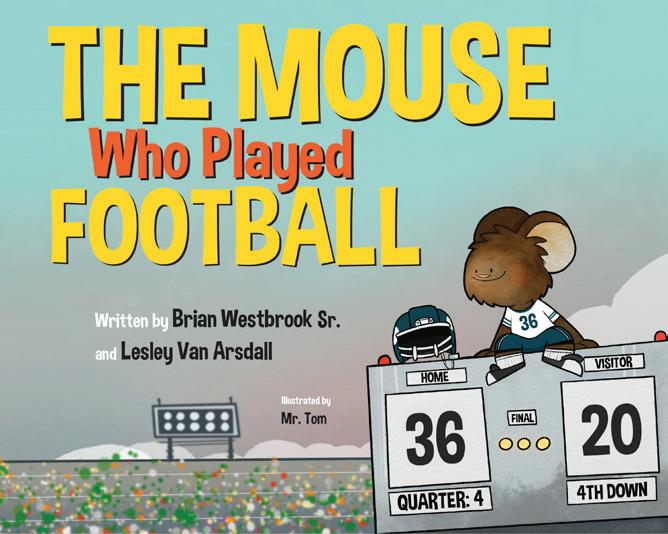
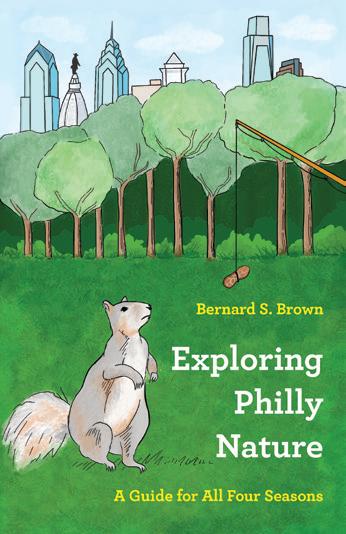
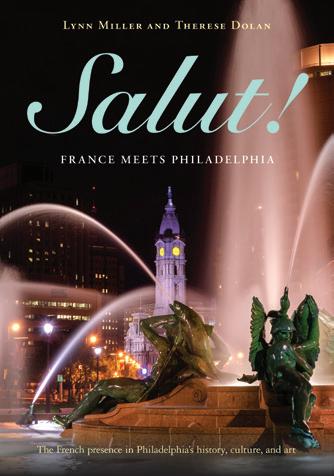

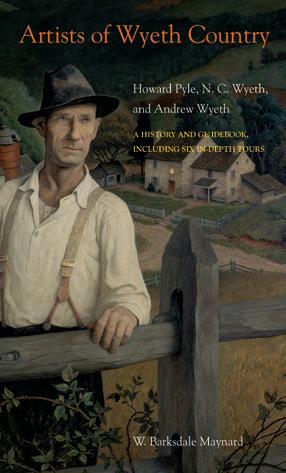
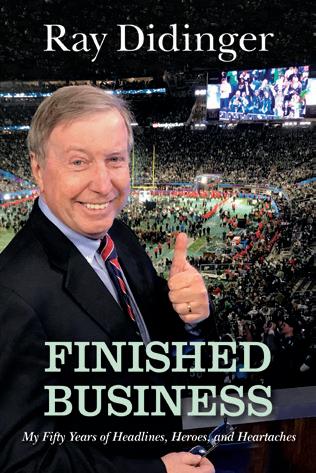
Yu gwansun (dec. 16, 1902Sept. 28, 1920) was a courageous teenage political organizer and activist who is celebrated as Korea’s Joan of Arc. Yu and a few classmates at Ewha Girls’ High School (now Ewha Womans University) joined demonstrations denouncing Japan’s colonial rule of Korea. In Cheonan, her hometown, she informed the populous of the growing momentum to liberate Korea.

At 16 Yu organized the March 1, 1919, protest at Aunae Marketplace, at which approximately 3,000 people peacefully chanted “Mansei (Long
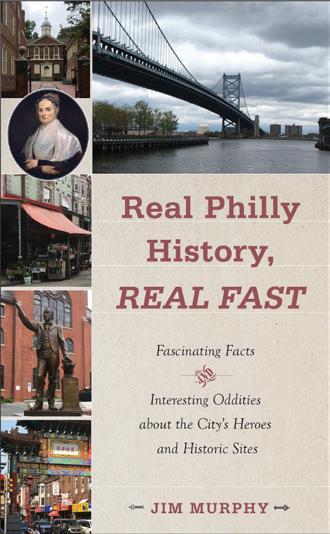
Live Korean
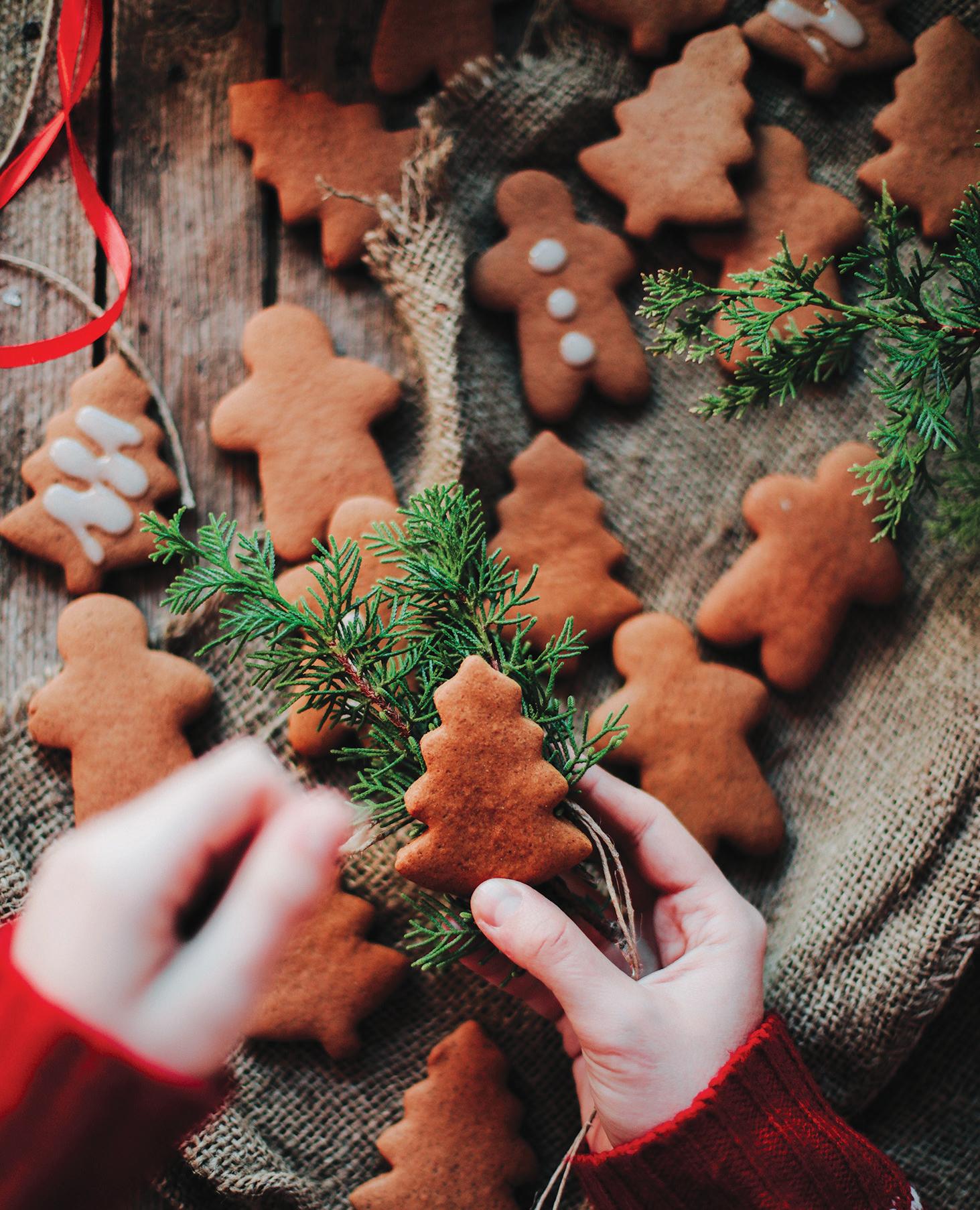
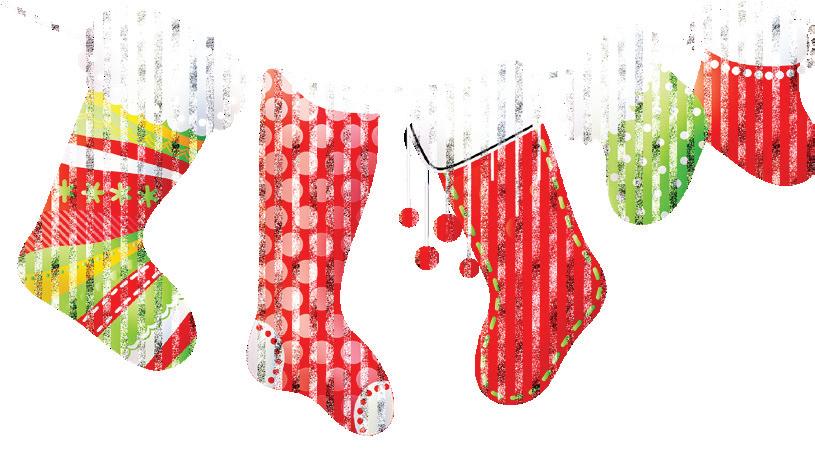
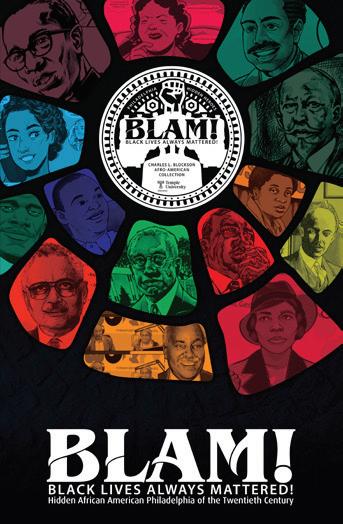
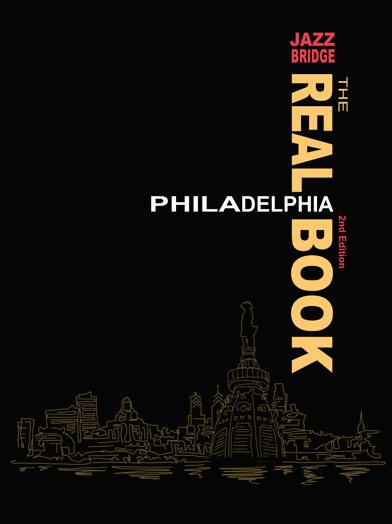
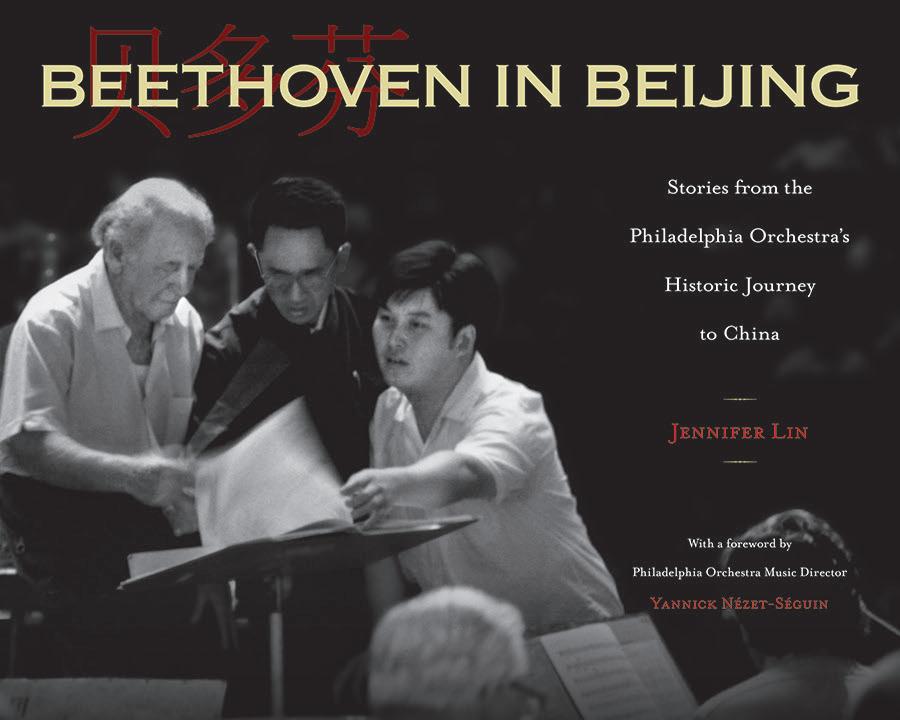

Japanese police fired at the unarmed demonstrators, killing 19, including Yu’s parents. She was sentenced to five years in prison, but despite being brutally malnourished and tortured, she refused to cooperate with Japanese officials. “I am ready to die for my country...”, she proclaimed. Yu died in prison at age 17.

20 THE SHUTTLE December 2022 visit your favorite bookstore or tupress.temple.edu Holiday Gifts for everyone on your list Holiday Gifts for everyone on your list Store Prep Deli Bulk Produce Grand Total Ambler 2358 122 500 950 3930 Chestnut Hill 2190 202 378 0 2770 Mt. Airy 1649 290 1351 0 3290 Totals Sold 6197 614 2229 950 9990 Deposits Refunded 6795 Return Rate 68% Total Containers by Department (as of this month) A program run by Echo Systems with support from the Weavers Way Plastic Reduction Task Force CONTAINER REFUND PROGRAM As part of the Co-op’s efforts to reduce our use of single-use plastic, customers can purchase certain items in reusable containers. There are a variety of containers available, with different deposits required. Deposit Cost Per Container $2 $2 $3 $4 Soups Cut Fresh Fruit (Watermelon & Pineapple) Bulk Bulk, Grab-and-Go Soups Prepared Foods Shredded Cheddar, Olives Green Beans Brussel Sprouts Baby Spinach Micro-Greens Products Packed 1 Look for labels with a CRP logo on our shelves. 2. Buy the item — the cost of the container is tied to the product. 3. Once it’s empty, wash the returnable item and take it to the Co-op; you’ll get the cost of the container refunded. 4. Spread the word to family and friends, so they can help save the Earth, too! How the Container Refund Program Works Note: DO NOT WRITE ON OR STICKER CRP containers.
Racial Diversity, Equity, and Inclusion
Independence).”
2023
Artists in Our Aisles
Gina Gilbert
I am a native of Mt. Airy and longtime member of Weavers Way. In 2017 I moved to California to be near my children. In 2020 I returned for a visit, only to find myself in the midst of the pandemic! I moved back to the area and am making art and teaching shiatsu/acupressure for people and animals. My next Zoom classes include Shiatsu for Dogs, Gentle Movement and Acupressure, and Vegetarian Cooking.
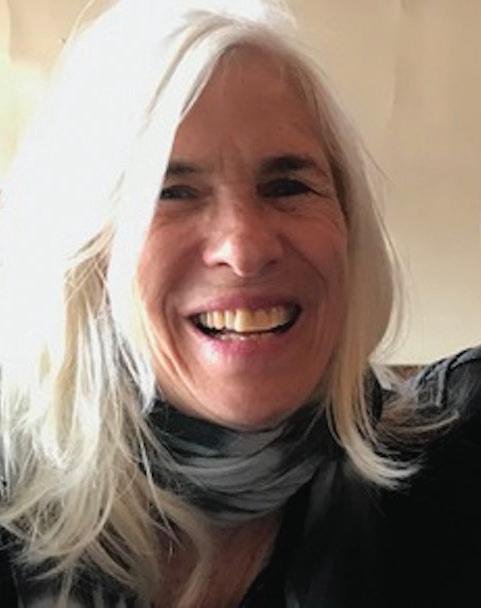
Artist Statement
I am a somatic person and am never more alive than when I am exploring, playing and discovering. Bodywork/massage, acupuncture and dance/movement trainings inform my art. I assimilate the maze of information by delving into the creative process — using the body, mind and spirit to help heal others and communicate my deepest feelings. My mediums include the body, clay, a Japanese firing method called raku, plaster, fiber, paint, papier mâché, cardboard, puppetry and henna.
For more information, please see my website: ginagilbertart.com, and the group site: www.philasculptors.org. I’m on Facebook as myself and at Body Art: On and Off the Skin. Contact: ginagilbertart@gmail.com.
We want to feature your art in the Shuttle! Please submit the following to Richard Metz (thembones2@hotmail.com): (Two) 4” x 6” high-resolution images (300 dpi)
A short statement about the work • A short bio A head shot • A link to a website if you have one
Weavers Words
Moon of Changing Leaves
already I am thinking of Raven flying over icy tundra collecting morsels of fat for winter that will come. already I am thinking of migration and how my blood (unlike my fine feathered friends) has thickened into complacency and my instinct to fly burdened by coercion gravity and false information.
I rely on old binoculars and yellow tainted books of flights of fancy. Bird lovers on full moon nights laying down to wait for certain birds to cross the moon's clock face that silent passage of winged phenomena that moves the Ocean floor.
today I am dreaming this year I will hollow my bones and glide on Raven’s back. I will cross when the wind is right look for me on the face of the moon.
—Dagmar Iris Holl
transient wind and sound of autumn air all around.... flowering marigold calls forth gold orange brilliance..
long silences soft wind darker richer silences of night .. only the song of tree frogs breaks thru.
—Dagmar Iris Holl
A Simple Poem
Smile at children.
It’s important they know, you think, they’re lovely.
—Sharon DuPree

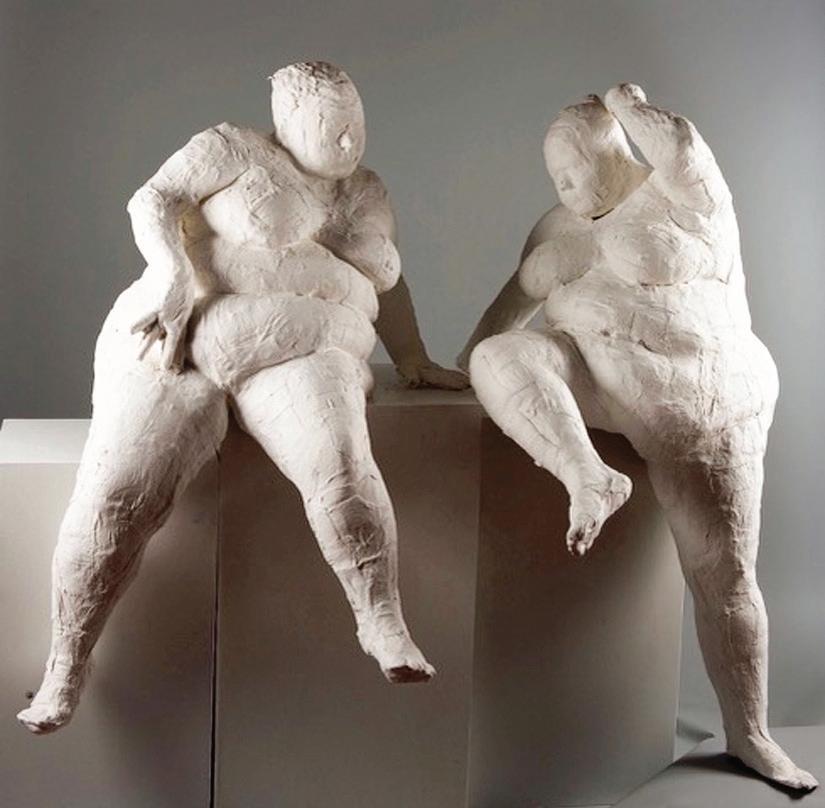
Feeling Inspired? Here Are Our Guidelines:
1. Poems must be written by you and be a reasonable length. 2. The Shuttle editor has the final say as to whether a poem is suitable for publication. 3. The number of poems in an issue is determined by the amount of space available. 4. Members and nonmembers are welcome to submit. 5. Email your submissions to editor@weaversway.coop and put “Poetry submission for Shuttle” in the subject line.
6. Preference for publishing will be given to those whose work has yet to appear in the paper.
December 2022 THE SHUTTLE 21
How Income Equality Affects the Quality of Life Worldwide
by Coleman Poses, Weavers Way New Economy Incubator Committee
W
hy is income inequality a problem? why should we care if great gaps exist in the distribution of income, so long as they do not affect our quality of life?
One way to answer that question is to examine various measures of quality of life, to see how closely related they are to income inequality. Here are three quality of life measures:
1. Numbeo’s Quality of Life: This index relies on survey data in the areas of purchasing power, safety, health care, cost of living, property price to income, traffic commute, pollution and climate to arrive at a single quality of life measure.
2. CEO World: Their 2021 survey questioned 258,000 people in 165 countries on topics such as affordability, economic stability, a family-friendly environment, a good job market, income equality, political neutrality and stability, safety, cultural influence, and well-developed public education and public health systems.
3. United Nations Human Development Index: This measure depends upon empirical data in the areas of health (life expectancy at birth), education (years of schooling for adults aged 25 years and over and expected years of schooling for children) and standard of living (measured by gross national income per capita).
For income inequality, we’re using the Gini Index, developed by the Italian economist Corrado Gini in 1912. It uses household survey data obtained from government statistical agencies and World Bank country departments. “OECD” in the rightmost column refers to the Organisation for Economic Cooperation and Development, a group of 38 member countries that works to shape policies that foster prosperity, equality, opportunity and well-being for all.
Lining up the quality-of-life measures against the Gini index reveals some interesting information among the 38 countries listed:
1. Six countries (Switzerland, Denmark, Netherlands, Finland and Norway) occupy the top 10 positions in all three quality of life measures, while nine countries (Hungary, Poland, Romania, Bulgaria, Greece, Mexico, Costa Rica, Turkey and Russia) reside in the lowest 10 positions on all three measures.
2. Five of those six countries (Denmark, Netherlands, Finland and Norway) that rank high in all measures of quality of life scored below the 50th percentile for income inequality.
3. Six of the nine countries (Romania, Bulgaria, Mexico, Costa Rica, Turkey and Russia) that rank low in all measures of quality of life scored above the 50th percentile for income inequality.
This analysis is far from perfect. For instance, all three quality of life measures use income equality as a component.
The Numbeo Quality of Life measure provides valuable information, because it gives scores for each of its individual components. One of the most shocking revelations from the Numbeo data is the connection between income inequality and pollution. Nine of the top 10 polluting countries (Turkey, Bulgaria, South Korea, Russia, Romania, Mexico, Israel, South Africa and Italy) have high income inequality scores, while eight of the 10 lowest polluting ones (Luxembourg, Slovenia, Austria, Denmark, Estonia, Norway, Sweden and Finland) had relatively low income inequality.
While several studies make the case that pollution is responsible for economic inequality, others claim that causality is bidirectional. For example, although the quality-of-life rankings for the United States fall within the middle range, our pollution rankings are relatively high. However, the overall data suggest that narrowing income gaps here might improve our air and water quality.
Income Inequality Across Three Quality of Life Indexes
Australia 4 16 3 28 17
Austria 8 15 20 32 32
Belgium 21 4 11 12 36
Bulgaria 33 32 36 2 5
Canada 18 12 12 24 30
Costa Rica 36 38 35 14 2
Denmark 2 2 4 33 33
Estonia 10 26 24 35 23
Finland 5 1 9 38 34
France 22 8 22 15 27
Germany 7 9 7 25 25
Greece 34 24 25 11 21
Hungary 29 25 31 13 28
Ireland 24 17 6 21 27
Israel 26 23 18 8 10
Italy 27 19 23 10 14
Japan 14 10 16 17 12
Latvia 23 31 29 22 9
Lithuania 19 36 27 26 7
Luxembourg 11 22 13 29 23

Mexico 35 29 37 7 3
Netherlands 3 7 8 27 24
New Zealand 9 21 11 30 16
Norway 6 3 2 36 35
Poland 30 28 26 5 29
Portugal 20 20 28 23 20
Romania 31 33 34 6 11
Russia 38 27 33 4 18
Slovakia 25 30 30 19 38
Slovenia 15 37 19 31 37
South Africa 28 35 38 9 1
South Korea 32 13 16 3 13
Spain 13 18 21 18 16
Sweden 12 5 5 37 31 Switzerland 1 6 1 34 19
Turkey 37 34 32 1 4
United Kingdom 17 11 14 16 9 United States 16 14 17 20 6
New Economy Incubator Committee
Sets of statistics like these go to the heart of the New Economy Incubator Committee’s mission, which is to pursue the best practices that “assure the equitable delivery of goods and services within our community.” We strive to reduce income inequality over time, with the expectation of improving the quality of life for everyone.
Member's New Book Depicts Heady Summers at Devil's Pool
For fans of the Wissahickon and past or current users of Devil’s Pool, photographer and Weavers Way member Sarah Kaufmann has compiled a picture book of the park’s world-famous swimming hole. “Devil’s Pool” depicts how people relate to their environment and affirms a human need or impulse to commune with the natural world. A portion of the proceeds will be donated to Friends of the Wissahickon. It’s available for $50 from Kaufmann’s website (sarahkaufmannphoto.com).

22 THE SHUTTLE December 2022 CLOSED
Ceo World
Pollution Index OECD Income Inequality
Numbeo
Un_HDI Numbeo
Country
Germantown Office Hours
Tuesdays, Wednesdays and Thursdays 10 a.m.-4 p.m. 326B Chelten Ave.
Grieving During the Holidays
Wednesday, December 14 6:30-7:30 p.m.
Naila Francis
For anyone who’s grieving, the holidays, with all their merriment and festivity, can be exhausting and challenging to navigate. Join grief coach and writer Naila Francis for an evening of gentle care and support. She’ll offer tips and practices to help you care for yourself, while creating space for you to share and express what’s in your heart. Please bring a journal and pen. This workshop will be offered virtually via Zoom. Naila Francis is a writer, grief coach, death midwife and ordained interfaith minister. She offers ritual and ceremony for people at many of life's sacred thresholds,
WEAVERS WAY EVENTS
including birth, marriage, death and other transitional passages. She is also the founder of Salt Trails, an interdisciplinary Philadelphia collective making grief public and visible through community rituals.
Holiday Card Make-In with Teaching Artist Mindy Flexer
Saturday, December 17 10:30-Noon
Mindy Flexer
Just in time for Hanukkah, and with plenty of time before Kwanzaa and Christmas, join teaching artist Mindy Flexer to make cards for the special people in our lives! We'll get to enjoy one another's company while we create cards that can be as simple or elaborate as we would like, using whatever materials we have at home. Mindy can share ideas for pop-up cards and other structures. It will be fun to make things together! This workshop will be offered virtually via Zoom.
DIY Elderberry Syrup and Tincture
Thursday, January 12
6:30-7:30 p.m.
Weavers Way Germantown 326 W Chelten Ave.
Join Germantown Outreach Coordinator, Camille Poinvil to learn how to make your own elderberry syrup and an elderberry tonic.
New Member Orientation
Monday, December 19
6:30-8 p.m.
Weavers Way Board
The Weavers Way Board of Directors represents members’ interests in the operation of the stores and the broader vision of the Co-op.
The Board’s regular monthly meeting is held on the first Tuesday of the month. Meetings are currently taking place online until further notice. Check the Co-op’s Calendar of Events for the date of the next meeting.
For more information about Board governance and policies, visit www.weaversway.coop/board. Board members’ email addresses are at www.weaversway.coop/board-directors, or contact the Board Administrator at boardadmin@ weaversway.coop or 215-843-2350, ext. 118.
2021-2022 Weavers Way Board
President: Esther Wyss-Flamm
Vice President: Cheryl Croxton
Treasurer: Michael Hogan Secretary: De’Janiera B. Little
At-Large: Hillary Baum, Jason Henschen, Gail McFaddenRoberts, Frank Torrisi, Josh Bloom, Kristin Haskin-Simms and Una Kang.
The Shuttle
Editor: Karen Plourde
editor@weaversway.coop, 215-843-2350, ext. 135


Art Director: Annette Aloe annette@weaversway.coop, 215-843-2350, ext. 130
Advertising Coordinator: Karen Plourde advertising@weaversway.coop, 215-843-2350, ext. 135
Proofreaders this issue: Wendy Greenberg, Lina Hartocoulis, Hunter McCorkel, Pam Ozaroff
Contributors this issue: Hilary Baum, Nima Koliwad, Camille Poinvil, Kieran McCourt, Kim Fleisher, Jon Roesser, Sue Landers, Ariel Tannenbaum, Karen Melton, Alisa Shargorodsky, Seth Lieberman, Anne Dicker, Betsy Teutsch, Anne Hylden, Mike Weilbacher, Alli Katz, Ruffian Tittmann, Sandy Folzer, Norman Weiss, Coleman Poses.
Admin
215-843-2350
General Manager Jon Roesser, ext. 131 jroesser@weaversway.coop
Finance Director Earl Pearson, ext. 105 epearson@weaversway.coop
Purchasing Director Norman Weiss, ext. 133 normanb@weaversway.coop
HR Director Lauren Wright, ext. 132 hr@weaversway.coop
IT Director David Chaplin-Loebell, ext. 127 IT@weaversway.coop
Membership Manager Kirsten Bernal, ext. 119 member@weaversway.coop
Retail Director Jess Beer, ext. 121 jbeer@weaversway.coop
Comm. Programs Coordinator Nima Koliwad nkoliwad@weaversway.coop
Farm Manager Nina Berryman, ext. 325 nberryman@weaversway.coop
Facilities Manager Doug Keener, ext. 128 dkeener@weaversway.coop
Admin (Ambler) 215-302-5550
Development Director Kathleen Casey, ext. 347 kcasey@weaversway.coop
Executive Chef Bonnie Shuman, ext. 374 bonnie@weaversway.coop
Ambler
HOW TO REACH US
217 E. Butler Ave. 8 a.m.-8 p.m. 215-302-5550
Store Manager Heather Carb, ext. 300 hcarb@weaversway.coop Grocery Nancy Timmons Melley, ext. 373 nmelley@weaversway.coop
Front End Manager Hillary Bond, ext. 375 hbond@weaversway.coop
Produce
Mira Kilpatrick, ext. 377 mkilpatrick@weaversway.coop
Prepared Foods Alisa Consorto, ext. 374 aconsorto@weaversway.coop
Meat, Poultry and Seafood Mark Baker, ext. 361 mbaker@weaversway.coop
Floral Buyer Mira Kilpatrick, ext. 377 mkilpatrick@weaversway.coop
Bulk Ken Kolasinski, ext. 379 kkolasinski@weaversway.coop
Bakery Maija Brozovskis, ext.376 mbrozovskis@weaversway.coop
Wellness Andrea Houlihan, ext. 378 ahoulihan@weaversway.coop
Chestnut Hill
8424 Germantown Ave. 8 a.m.-8 p.m. 215-866-9150
Store Manager Dean Stefano, ext. 212 dstefano@weaversway.coop
Assistant Store Manager Valerie Baker, ext. 215 vbaker@weaversway.coop
Front End Manager Ashley Hammock, ext. 215 ahammock@weaversway.coop
Grocery James Mitchell, ext. 217 jmitchell@weaversway.coop
Produce Tierra Burton, ext. 211 tburton@weaversway.coop
Deli
Ann Marie Arment, ext. 208 aarment@weaversway.coop
Prepared Foods John Adams, ext. 218 jadams@weaversway.coop
Meat, Poultry and Seafood Ron Moore, ext. 205 rmoore@weaversway.coop Bakery Kriss Walker, ext. 217 kwalker@weaversway.coop
Bulk Danielle Mitchell, ext. 217 dmitchell@weaversway.coop
Next Door 8426 Germantown Ave. 9 a.m.-8 p.m. 215-866-9150, ext. 221/220
Wellness Manager Chris Mallam, ext. 221 cmallam@weaversway.coop
VIRTUAL NEW MEMBER ORIENTATIONS
New Member Orientations
Monday, December 19, 6:30 - 8 p.m.
To register visit: www.weaversway.coop/events
Mt. Airy
559 Carpenter Lane 8 a.m.-8 p.m. 215-843-2350
Store Manager Rick Spalek, ext. 101 rick@weaversway.coop Grocery Matt Hart, ext. 140 matt@weaversway.coop
Produce Shan Wichmann, ext. 107 swichmann@weaversway.coop Deli Shawn O’Connell, ext. 134 soconnell@weaversway.coop
Prepared Foods John McAliley, ext. 102 jmcaliley@weaversway.coop Meat, Poultry and Seafood Mike Lawrence, ext. 104 mlawrence@weaversway.coop Bulk Juli Cardamone, ext. 142 jcardamone@weaversway.coop
Bakery Moises Iavarone, ext. 305 miavarone@weaversway.coop
Floral Buyer
Ginger Arthur, ext. 317 floral@weaversway.coop
Across the Way
608 - 610 Carpenter Lane 8 a.m.-8 p.m. 215-843-2350, ext. 6
Wellness Manager Sarah Risinger, ext. 114 srisinger@weaversway.coop
Pet Department Manager Anton Goldschneider, ext. 276 petstore@weaversway.coop
Become a Member
Want to play a role in shaping your grocery store? Just complete a membership form in any store or online, make an equity investment, and you’re good to go! We ask new members to attend an orientation meeting to learn about our cooperative model. You’ll receive two hours of work credit for attending. We look forward to meeting you!
December 2022 THE SHUTTLE 23 DID YOU KNOW? You can read the Shuttle online. The
www.weaversway.coop/shuttle-online
Shuttle
www.weaversway.coop contact@weaversway.coop
What’s What & Who’s Who at Weavers Way
For more info: www.weaversway.coop/events
Catering: cateringMA@weaversway.coop, cateringAB@weaversway.coop, cateringCH@weaversway.coop Preorders: MApreorder@weaversway.coop, CHpreorder@weaversway.coop, ABpreorder@weaversway.coop
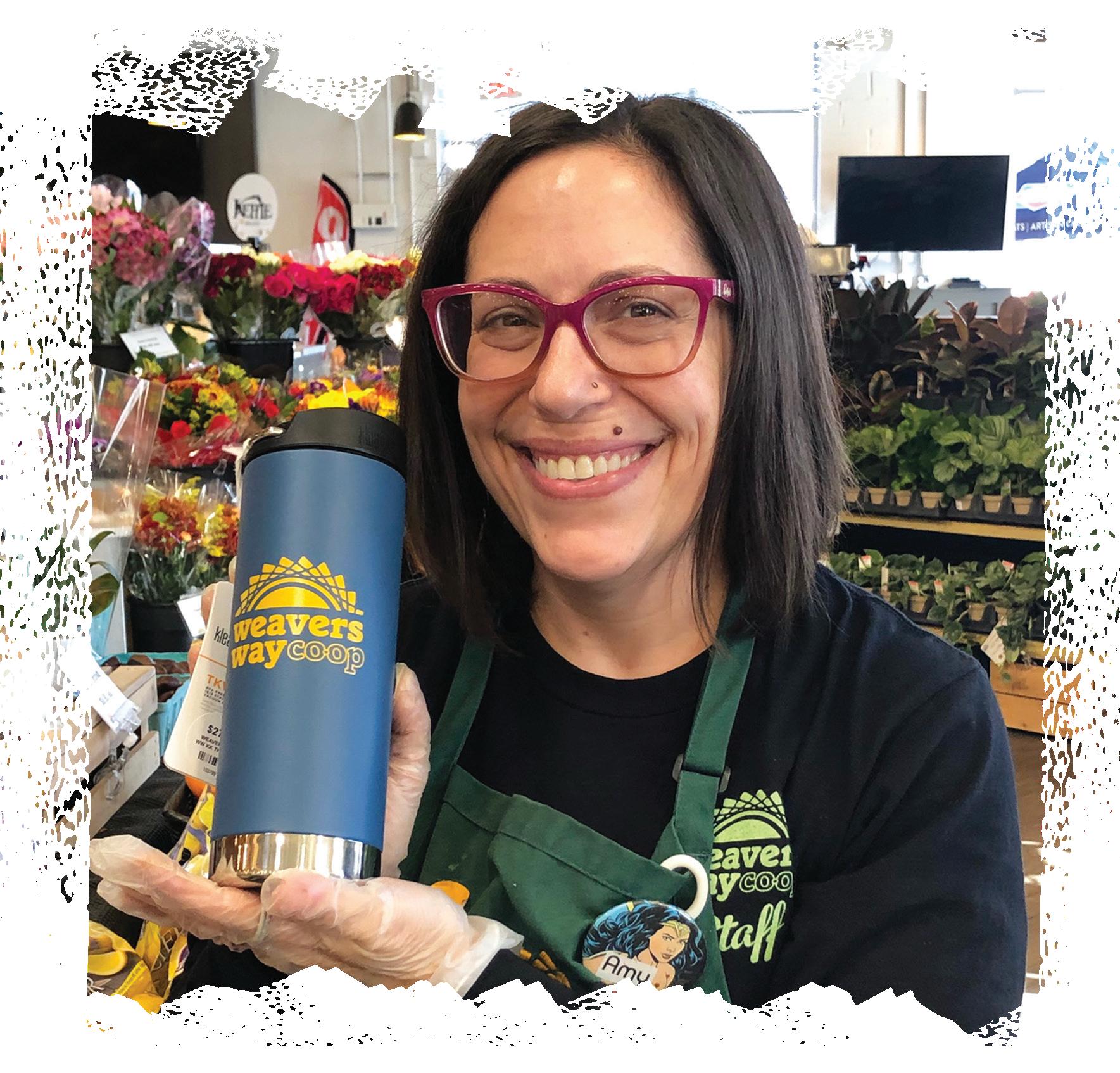
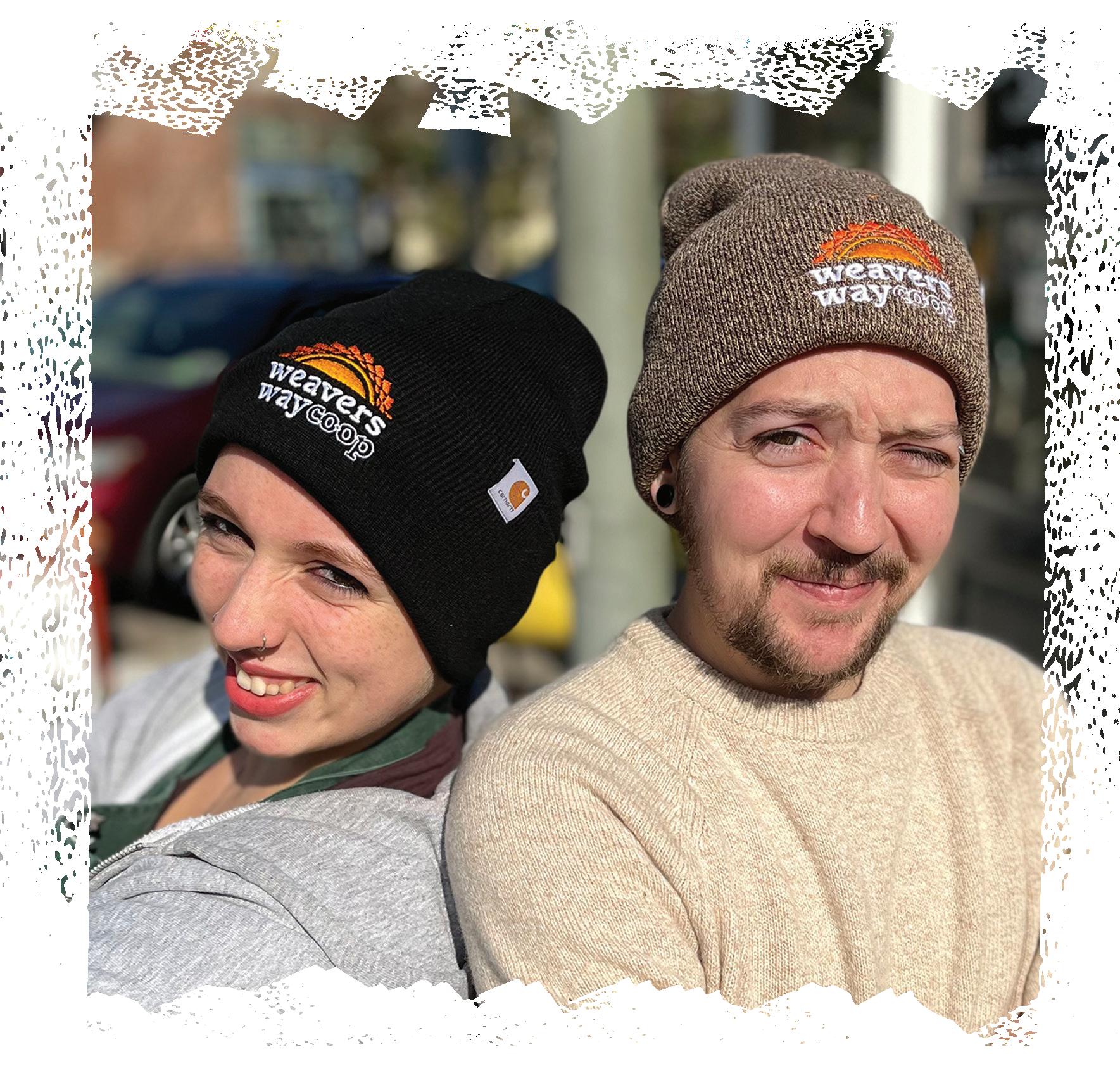
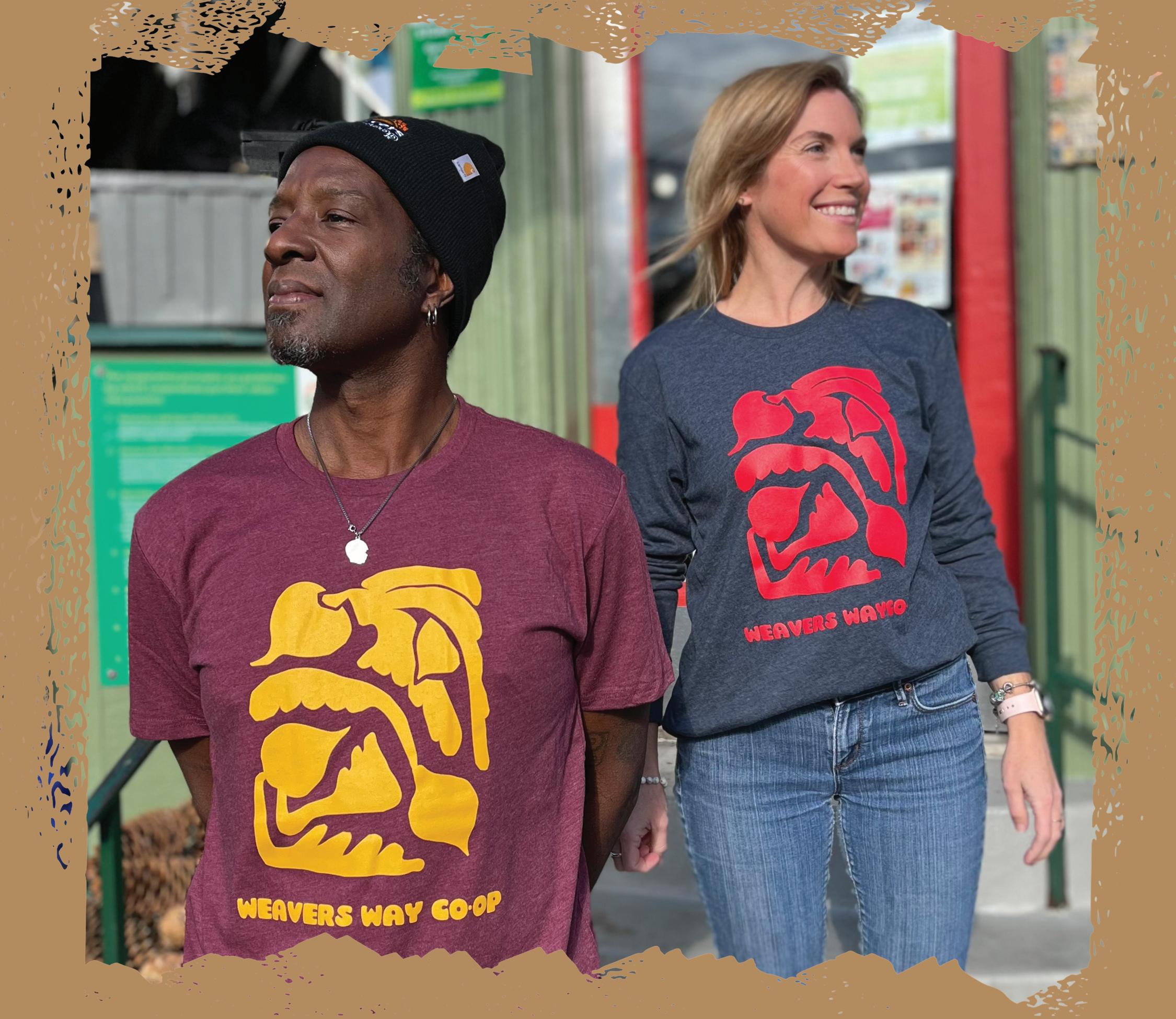
Show Your Co-op pride Carhartt Beanie $29.99 ea Short Sleeve T-shirt $14.99 ea Long Sleeve T-shirt $29.99 ea Klean Kanteen Coffee Thermos $27.99 ea reg.$32.99/ea




 by Karen Plourde, Editor, Weavers Way Shuttle
by Karen Plourde, Editor, Weavers Way Shuttle

























































 by Anne Hylden, for the Shuttle
by Anne Hylden, for the Shuttle




 by Mike Weilbacher, Executive Director, Schuylkill Center for Environmental Education
by Mike Weilbacher, Executive Director, Schuylkill Center for Environmental Education














































